

Makalu Base Camp Trek: The Ultimate Guide
Jackson Groves
Posted on Last updated: October 20, 2023
Categories NEPAL , HIKING
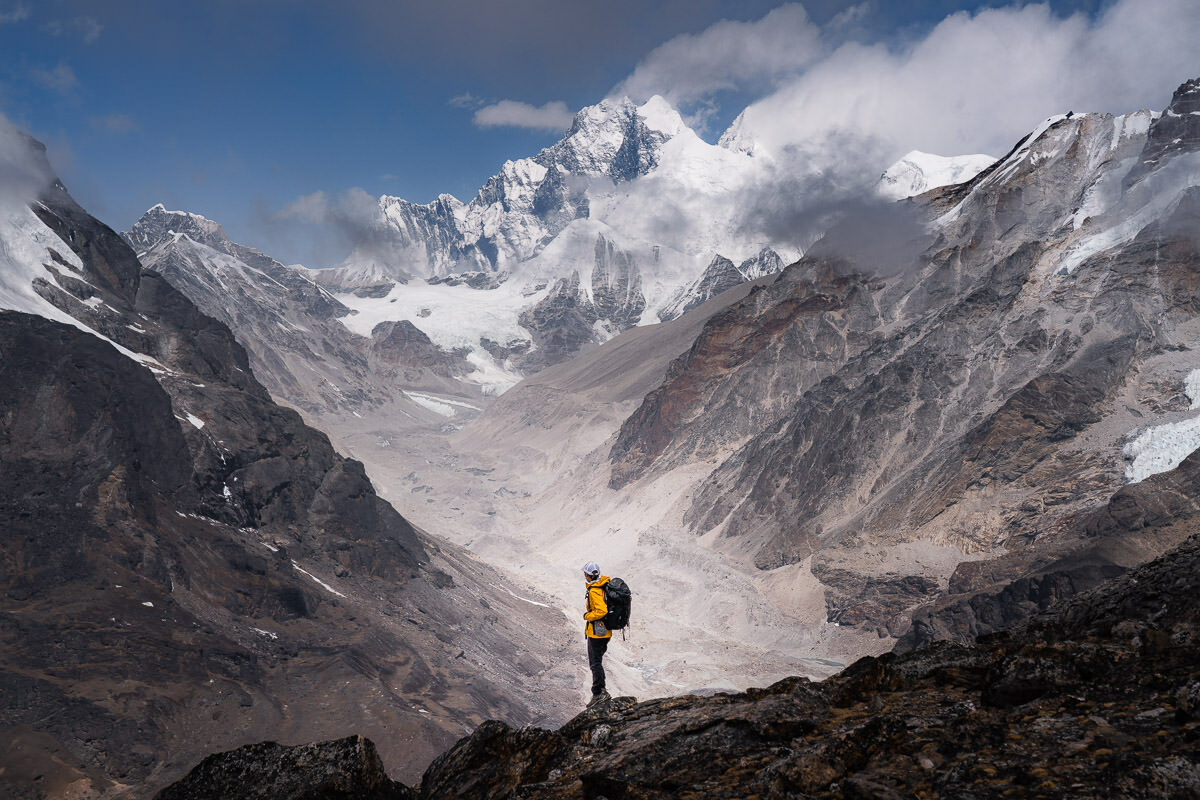
The Makalu Base Camp Trek is an off-the-beaten-path expedition in the Himalayas of Nepal. It’s longer, more rugged, and presents an intense physical challenge compared to more established trekking routes in Nepal. The trek to Makalu Basecamp takes most trekkers at least 8 days to reach a top altitude of 5,050 meters. Trekkers then need to retrace their steps on the 5-6 day journey back out the same way they came in.
At the base camp, you truly sit at the base of Makalu and have a clear view of the mountain, unlike Everest Base Camp where the mountain is a little hidden from view. Each morning, you can watch the sunrise over the summit of the fifth tallest mountain in the world. A short walk up the slopes from basecamp reveals incredible views of Everest and Lhotse. The Makalu Base Camp Trek is perfect for adventurers who are looking to avoid the crowded trekking routes of Nepal and want an authentic experience trekking amongst the giants of the Himalayas.
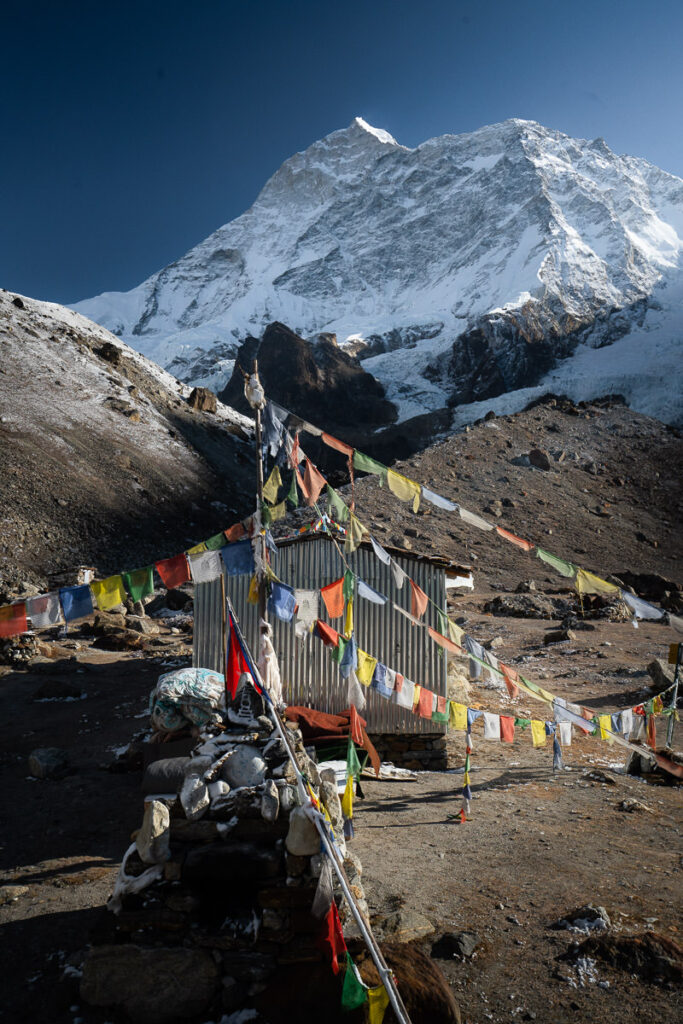
TRY THE 3 BEST TREKS IN NEPAL

Manaslu Circuit : My personal favorite 2-week trek through Tibetan villages and stunning scenery. Less crowded and more authentic.
Annapurna Circuit : The most beautiful & scenic 2-week trek in Nepal although can be crowded at times.
Everest Base Camp Trek : The most iconic 2-week route reaching the famous (EBC) Everest Base Camp at 5,300m.
A GUIDE TO THE MAKALU BASE CAMP TREK
In this guide, you will find all of the valuable information you need to plan your trek as well as my personal experience on the entire expedition. I did this trek with Seven Summit Treks as a leadu-up to our climb of Makalu.
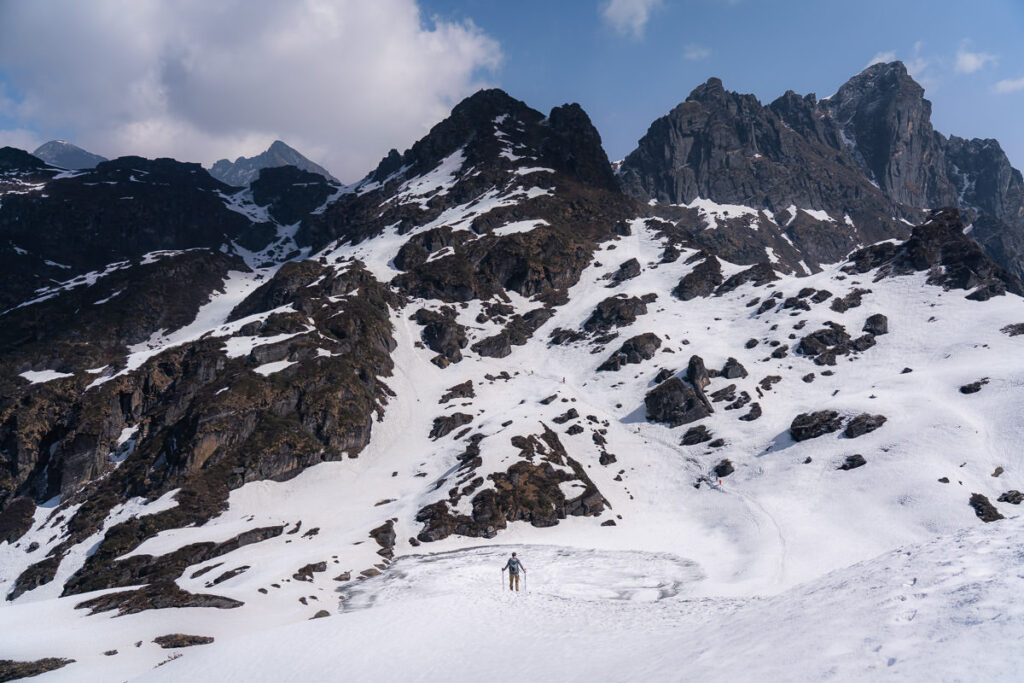
MAKALU BASE CAMP TREK DETAILS
- Distance : 100km return trip
- Days required : 16 days return trip
- Total Incline : 5000 meters +
- The highest point on the trek : The highest point of the trek is Makalu Base Camp at 5,050m but a small hike up to 5,300m above the base camp gives you views of Lhotse and Everest.
- Difficulty : The Makalu Base Camp Trek is slightly more difficult than Everest Base Camp or the Annapurna Circuit due to the incline, remoteness, and rugged nature of the trails. You will reach an altitude of 5000m, which will challenge many. Altitude sickness can be common. The route has lots of undulation with several days purely walking up stairs on stairs. These days of ascent are tiring and also require the body to adjust quickly.
- Permits : You will need a Makalu Barun National Park Conservation Area permit (USD $30 per person and a Trekkers’ Information Management Systems (TIMS) card (USD $20 per person)
- Guide: A guide is not required on this trek. However, the guide manages all of the logistics, distances, directions, and tea houses for your group. You can use maps.me to navigate from tea-house to tea-house and the paths are relatively easy to follow. If it’s your first time trekking in Nepal, I would suggest having a guide.
- Accommodation: Guest Houses, also known as Tea Houses, are available along the way where you will sleep in a comfortable bed and have access to hot bucket showers (extra charge) and restaurant facilities. The facilities were much less luxurious than on the Everest Base Camp trek but still comfortable.
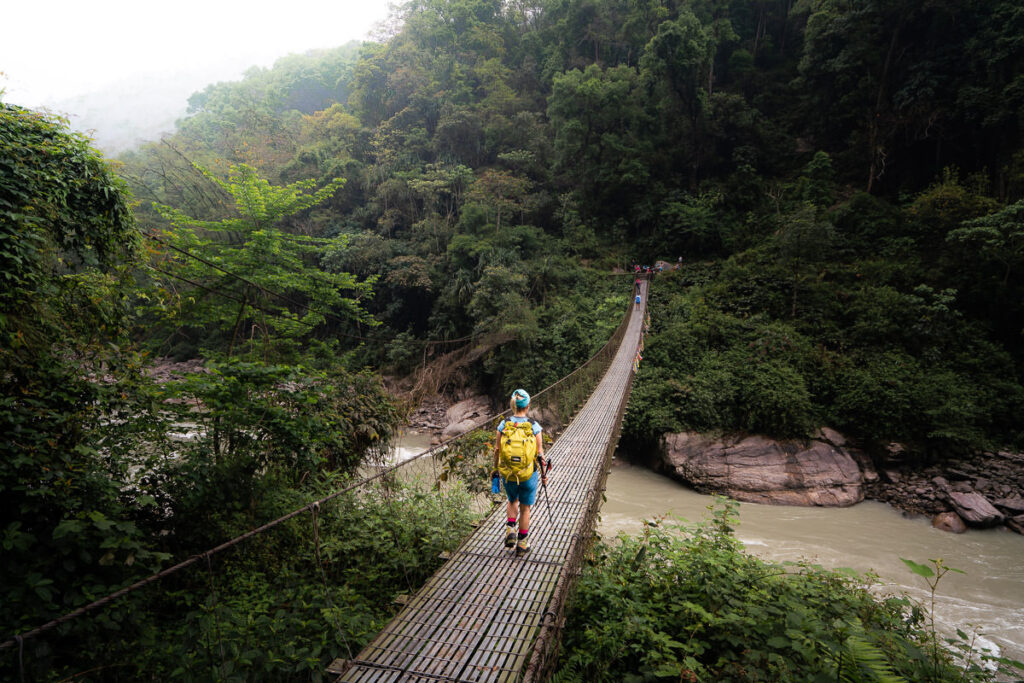
BEST TREKKING COMPANY IN NEPAL
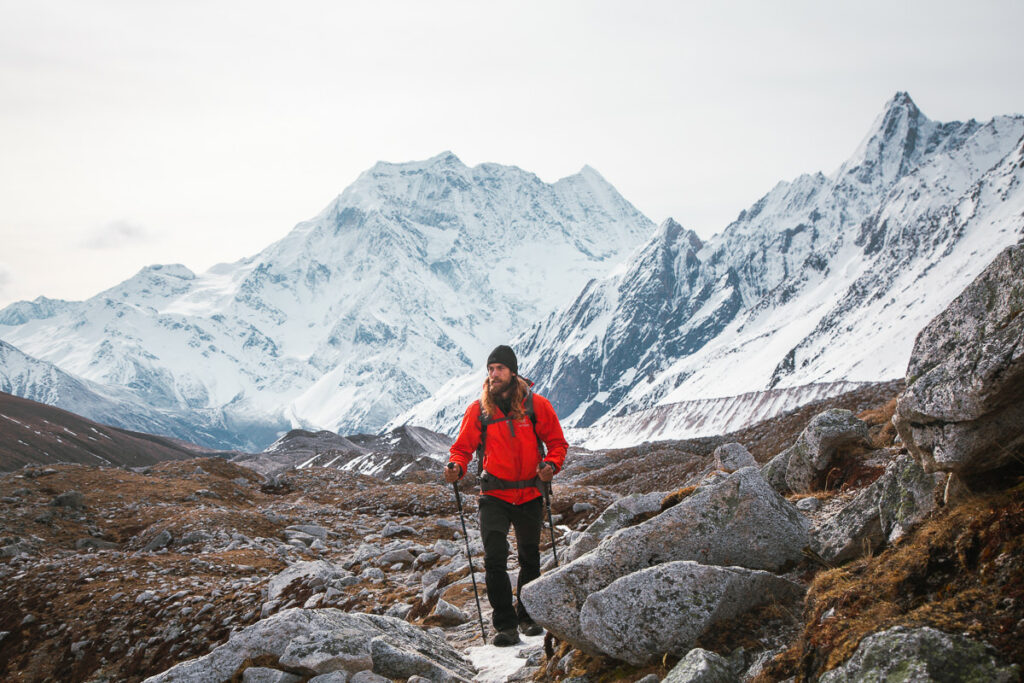
Interested in trekking in Nepal or doing the Everest Base Camp Trek? I recommend booking your trek with Himalayan Masters , which is the company I use for all of my treks in Nepal. Use my code JACKSON5 when you book to receive a 5% DISCOUNT .
MAKALU BASE CAMP TREK PACKING LIST
I packed pretty light and managed to wash most of my clothes each afternoon/night for the first half of the trip. In the latter stages of the trip, it was pretty cold so we weren’t sweating as much and we wore our warm gear basically nonstop while at the teahouses. There was no real need for multiple outfits.
This is just a guide and it worked quite well for me with no complaints from my set-up. You won’t need a sleeping bag as there are blankets in each guesthouse and when it got cold I just wore my down jacket to bed. This meant I didn’t have to carry a sleeping bag for the entire trek.
- 1 pair of pants that maybe convert to shorts
- 1 pair of shorts
- 1 Warm or thicker pair of hiking pants
- 1 Long sleeve quick-dry shirt
- 1 Long-sleeve thermal shirt
- 2 Short-sleeve t-shirts
- 1 Thermal long underwear
- 4 pairs of quick-dry underwear
- 1 Lightweight down jacket
- 1 Heavy-duty summit down jacket
- 1 Neck Buff
- Hiking boots
- 1 pair of warm summit socks
- 2-3 pairs of regular socks
- Trekking poles
- Water filter
All of this should fit into a backpack no bigger than 50L and should be less than 14kg.
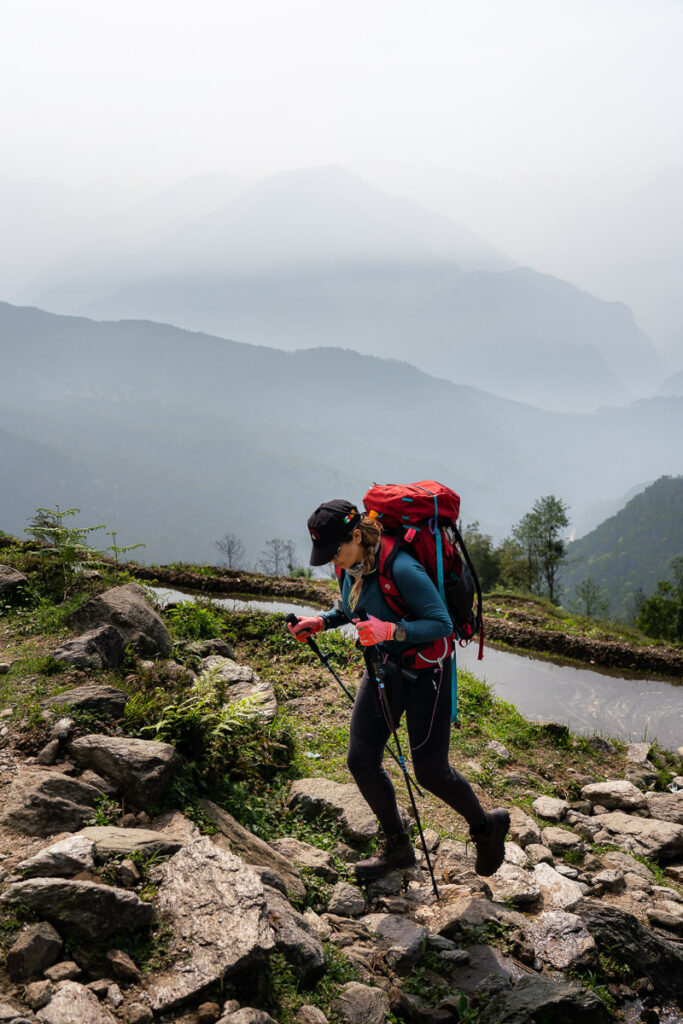
What are my favorite pieces of hiking gear?
There are four pieces of gear that I simply never forget when I go on a hike. These are four items that I using right now and this list gets updated every year! Here are my hiking essentials.
- Arcteryx BETA AR Rain Jacket : This is my go-to rain jacket. It’s super light, folds down into a tiny ball, and protects brilliantly in a storm. This one never leaves my backpack.
- Salomon X Ultra 3 Mid GTX Hiking Boots : For the best ankle support, waterproofing, and durable exterior I’m a fan of tough but light hiking boots like these Salomons for my adventures.
- Black Diamond Head Torch : I can’t tell you how many times, I’ve arrived back from a hike unexpectedly late. I always keep this lightweight but strong headtorch in my bag for the unexpected.
- Darn Tough Socks : These are the most comfortable hiking socks I’ve ever worn and last for years. They also have a lifetime warranty and you just send them in with a hole and they replace it no questions asked.
WIFI/ELECTRICITY AVAILABILITY ON THE MAKALU BASE CAMP TREK
- Wifi: Unlike many treks in Nepal there is almost no WiFi on this route. NTC sim card worked for the first day and a half on the trek but once we reached Tasigaun, the connection was over.
- Electricity: This was the least power I have experienced on a trek in Nepal so far. Once we left Tasigaun, most places ran off solar and didn’t have places to charge items for the clients. It was possible but not something offered for a fee like in other teahouses around Nepal.
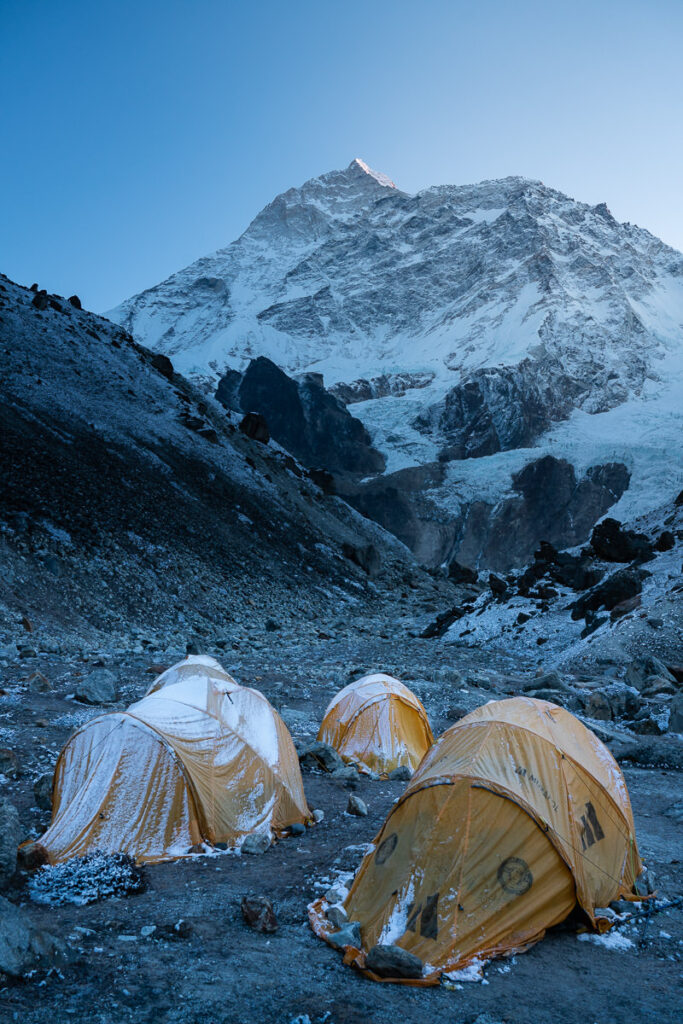
MAKALU BASE CAMP TREK ITINERARY
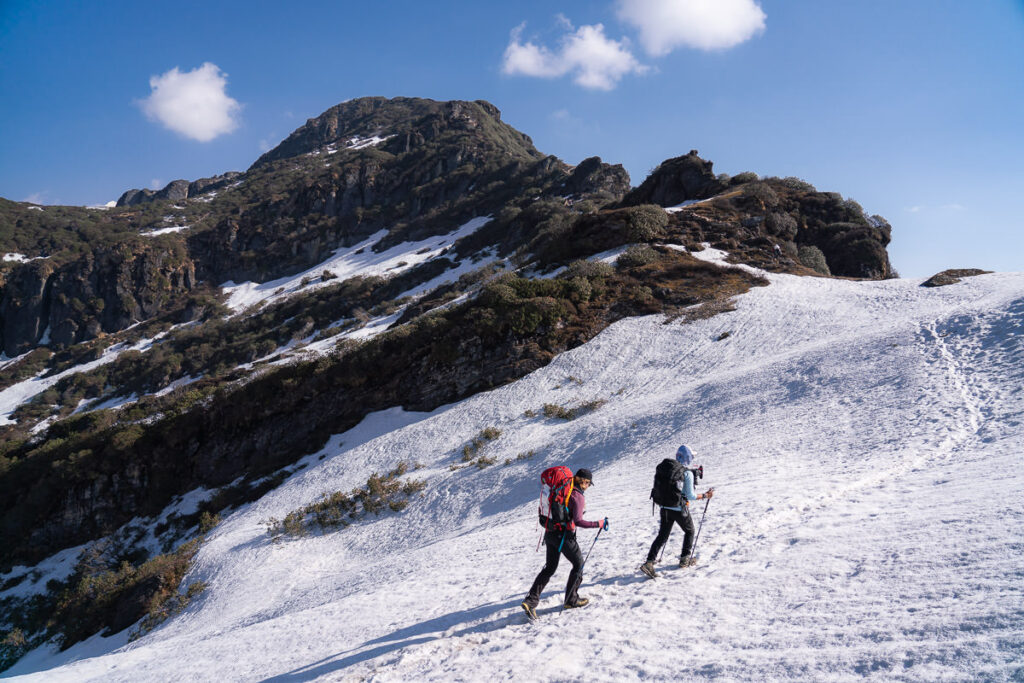
TOP 3 PLACES TO STAY IN KATHMANDU

- Ultimate Luxury: The Dwarika’s Hotel – Luxury, Spa-service, Pool
- Best Value : Aloft Kathmandu Thamel – Swimming Pool, Gym & Great Restuarant
- Budget Choice: Hotel Jampa is easily the top cheap hotel in Kathmandu
INSURANCE FOR THE MAKALU BASE CAMP TREK
Nepal can be a dangerous place for trekking or hiking because the high altitude can lead to many illnesses, weakness in trekkers, and misjudgments. There is also a risk on trails for falls, avalanches, or other mishaps. Your regular travel insurance probably won’t cover you at high altitudes and won’t cover a helicopter evacuation. There is a solution though .
Need extra protection?
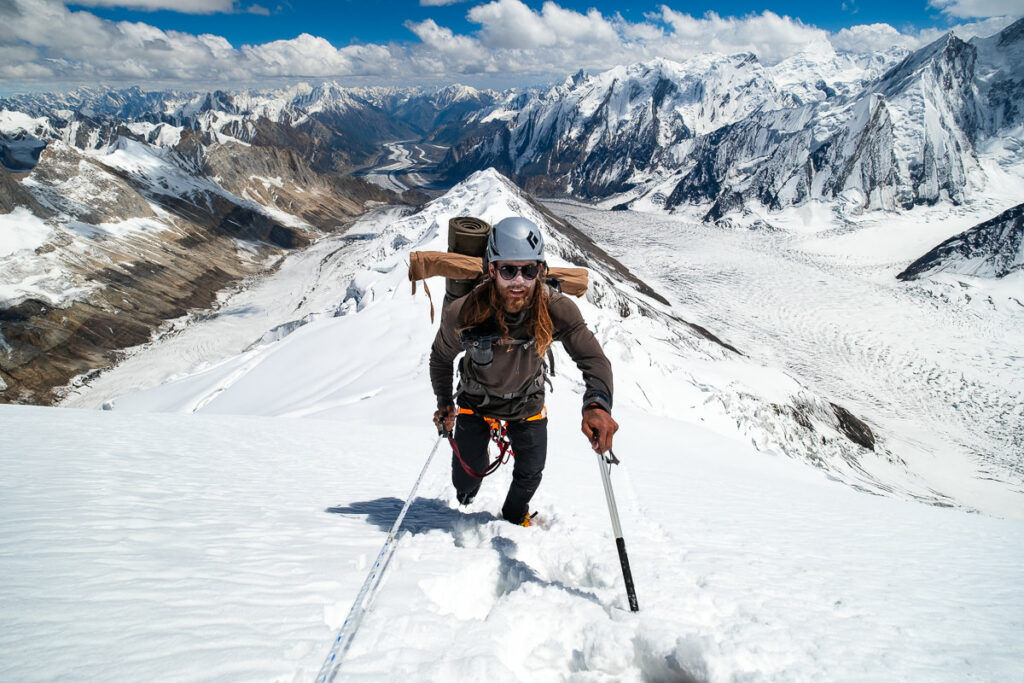
Regular travel insurance is great but won’t cover you for high altitude hikes or for helicopter evacuation. Each year, I purchase a Global Rescue Subscription .
For less than $500 per year or $100 per expedition, you can purchase a Global Rescue subscription and be covered no matter how extreme the hike or how high the climb is.
DRINKING WATER ON THE MAKALU BASE CAMP TREK
I use the Grayl Ultralight Water Purifier and it is a game-changer for hiking in Nepal, making this super easy and cheap. The Grayl Ultralight Water Purifier removes 99.9999% of viruses of disease-causing bacteria. The best thing about it is it only takes 15 seconds and one press to purify water from any freshwater source. You don’t need to buy bottled water at every tea house contributing to large amounts of plastic waste and costing you $4+ per day.
Along the Makalu Base Camp Trek, we filled up tea houses, rivers, and local village taps. Unlike aqua purification tablets which require you to wait 30 minutes before drinking, you can have rehydrated yourself immediately with the Grayl Ultralight Water Purifier .
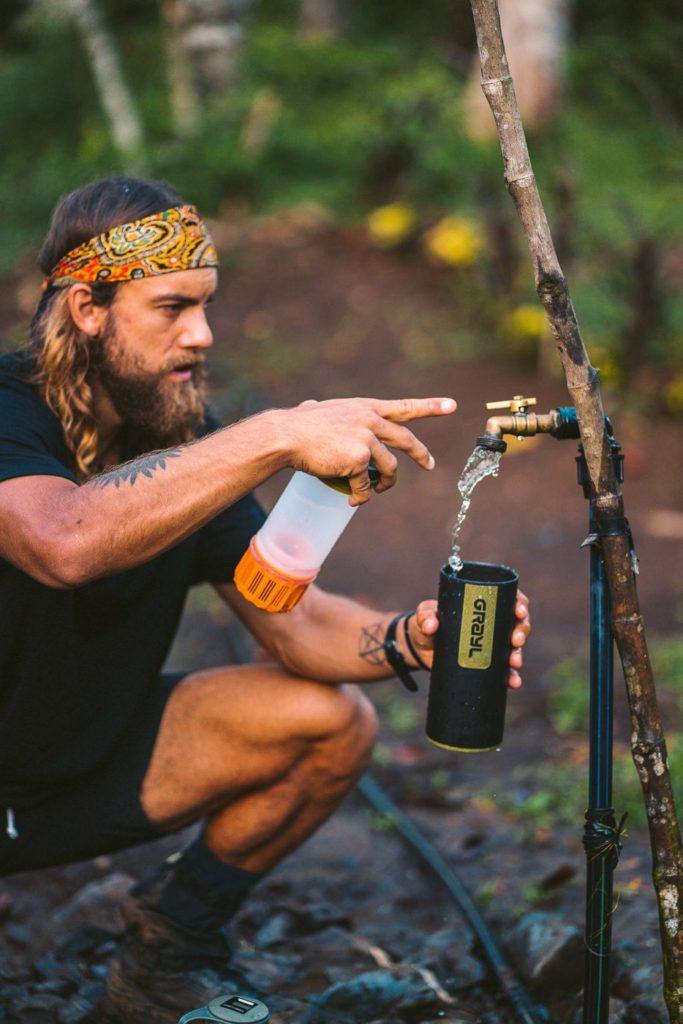
GrayL Water Purifier
- Never pay for water on the trek
- Save 3-4 plastic water bottles a day
- Turns any water into drinking water
BEST TIME AND SEASON FOR THE MAKALU BASE CAMP TREK
The peak season for the Makalu Base Camp Trek is March to April and October to November. The time to avoid this trek is during the rainy season from June to August .
During the winter from December to February, this region gets very cold and there will be snow cover in the higher parts of the trek. Many of the guesthouses actually close up for the winter and re-open in late February to March. However, it is possible to hike the Makalu Base Camp Trek on the fringe of the season in late February/early March and it can be quite beautiful with snow cover.
I hiked the Makalu Base Camp Trek in late April/early May and it was warm during the day and got pretty cold at night. The Shipton La had good snow cover but other than that the paths were clear. We did not need crampons.
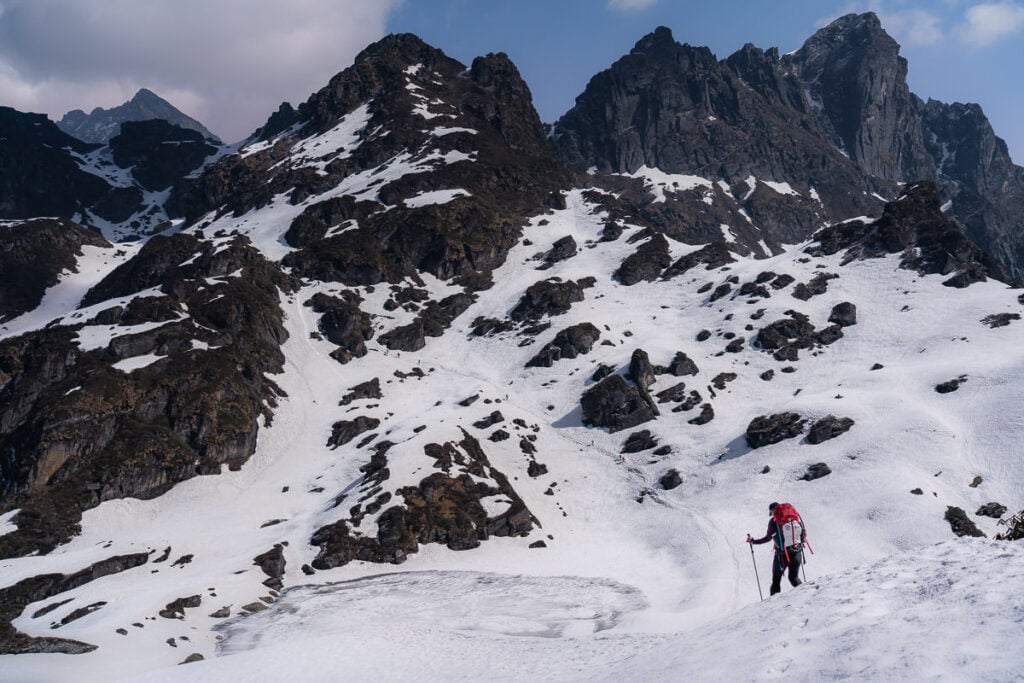
MY EXPERIENCE ON THE MAKALU BASE CAMP TREK
Day one of the Makalu Base Camp Trek begins by immediately dropping down into the humid forest. A series of stone-pathed switchbacks lead us down through quiet villages until we meet the river.
It’s here that we cross the suspension bridge draped in Tibetan prayer flags. This crossing marks the halfway point of the first day. The trail now heads uphill gaining 800m of elevation over just a few kilometers to reach Seduwa.
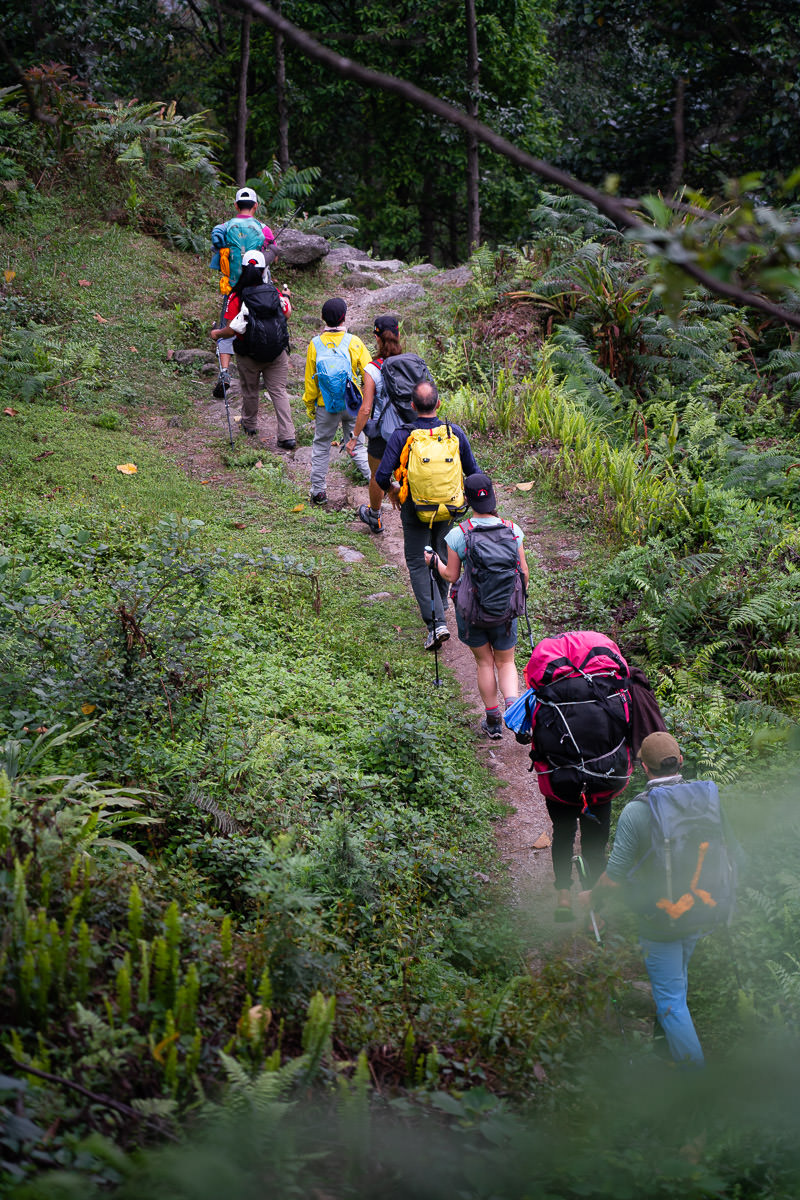
Day two of the trek is a much more timid trek although still gains 650 meters of incline. Through the forest, we continue on the beautifully crafted stone paths. Small villages are spotted along the route. It’s a glimpse into the mountain life of Nepal.
Unspoiled by over-tourism, this region has kept much of its charm and traditional culture. The day ends with hundreds of stairs, leading us up to Tashigaon.
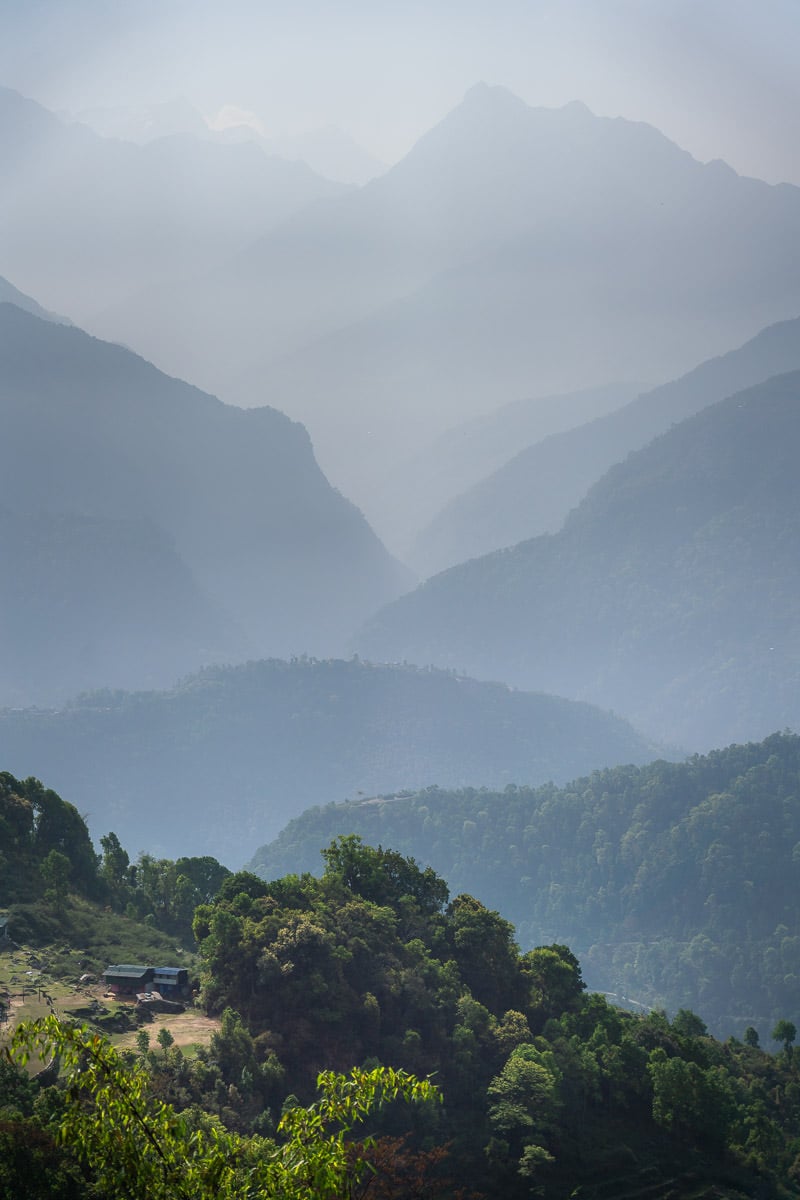
Day three of the trek was a rest day in Tashigaon where we charged our gear, washed ourselves and our clothes, and had some intense carD games. The view from the lodge at Tashigaon is incredible, situated on top of the village. This was a sunny day to get ready for a big day of trekking to come.
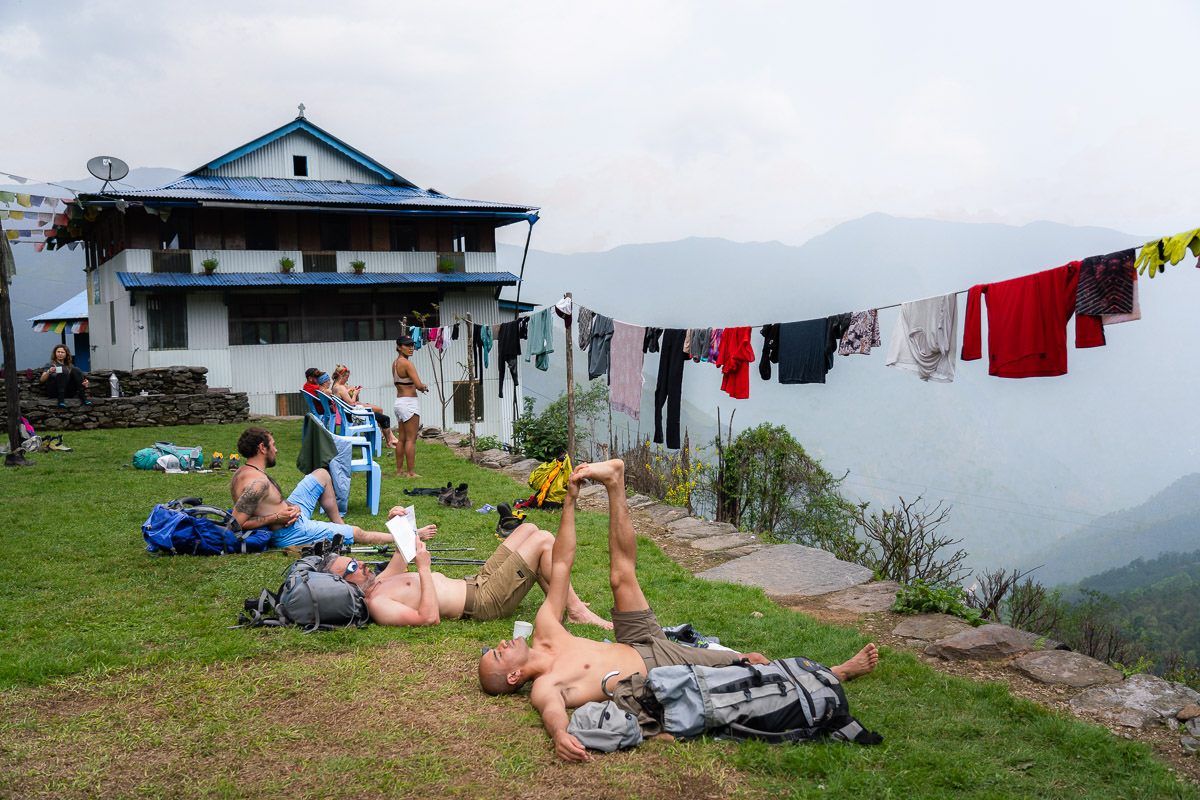
Day four of the Makalu Basecamp Trek was the toughest. We climbed 1350m of the incline in just seven kilometers. The entire trail was stairway after stairway. Rarely did we find a stretch of flat path. Despite the incline, the trail began to open up with mountain views.
The Rhododendron (national flower of Nepal) was in full bloom with white, red, and pink flowers surrounding the trail. It was a tough day on the legs but a nice lodge with a big dining room made for a comfortable end to the day.
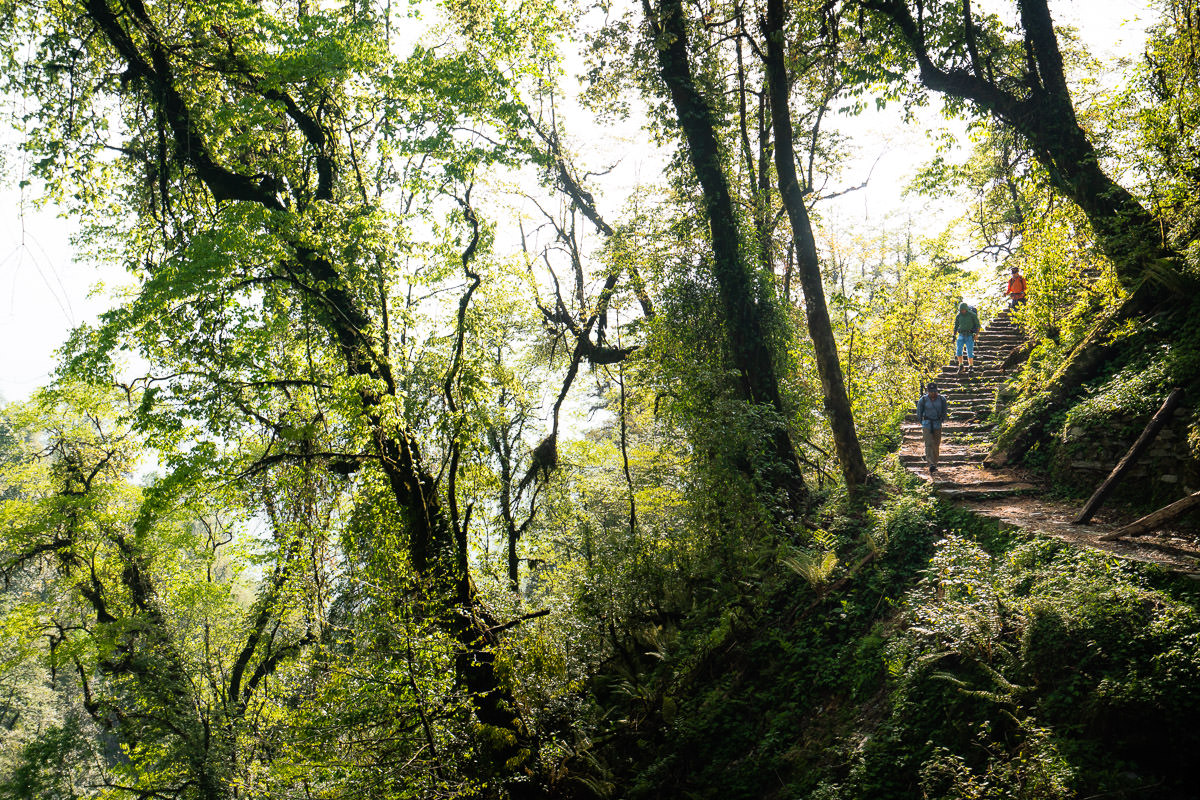
Day five brought us into the snow. The trail made its way across three passes, as we entered the mountains. We traversed snow ridges, frozen lakes, and steep downhills as we crossed Chungru La, Shipton La, and Keke La. With clear weather, the first glimpse of Makalu was a morning surprise. We sleep tonight in Dobate, lower than the previous night after a steep descent after the passes.
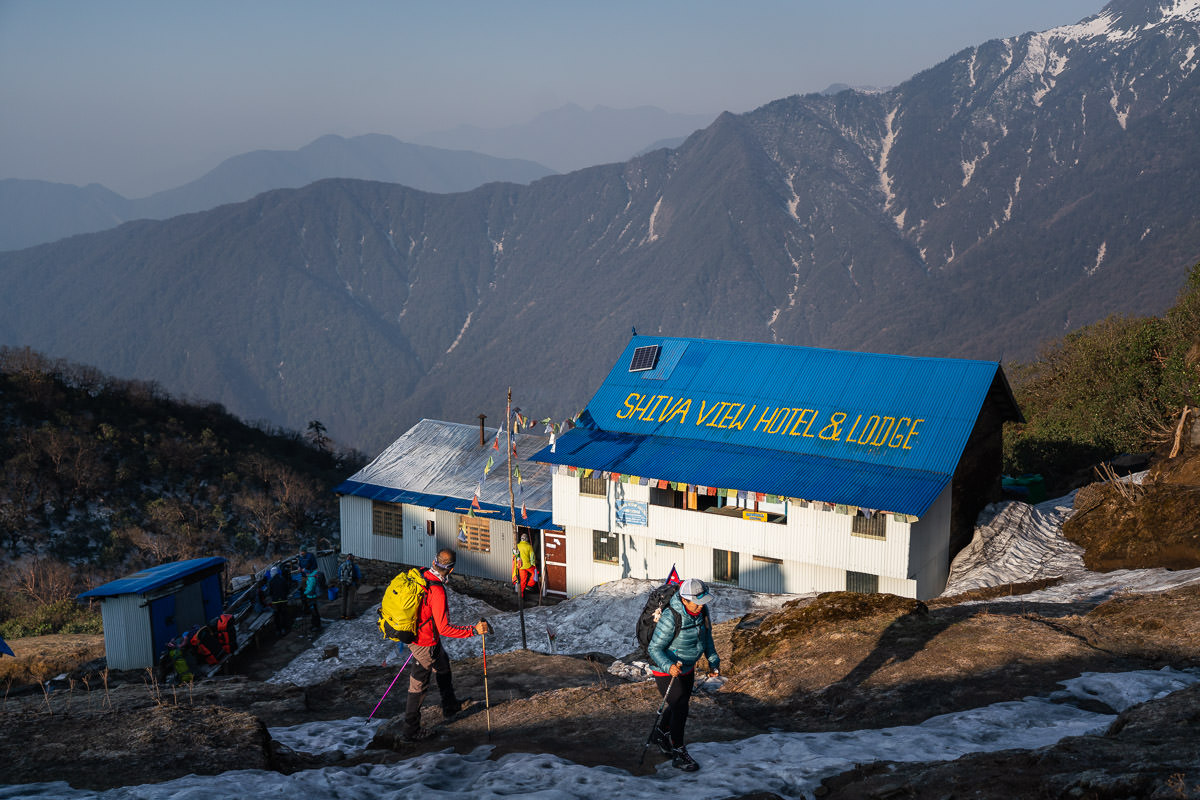
Day six began with a downhill track into the forest. Rhododendrons surrounded shone in the morning light as we descended down to the Barun River. The path was quite snowy and slippery at times on the steep descent. Once we reached the river, it was a steady incline alongside its raging rapids. With no shade around amidst the dry dusty terrain, this is a hot and exposed section of the trek.
The trail began to open up with magnificent views of peaks on the horizon. The highlight to end the day was the Makalu view as we reached Yangle Kharka.
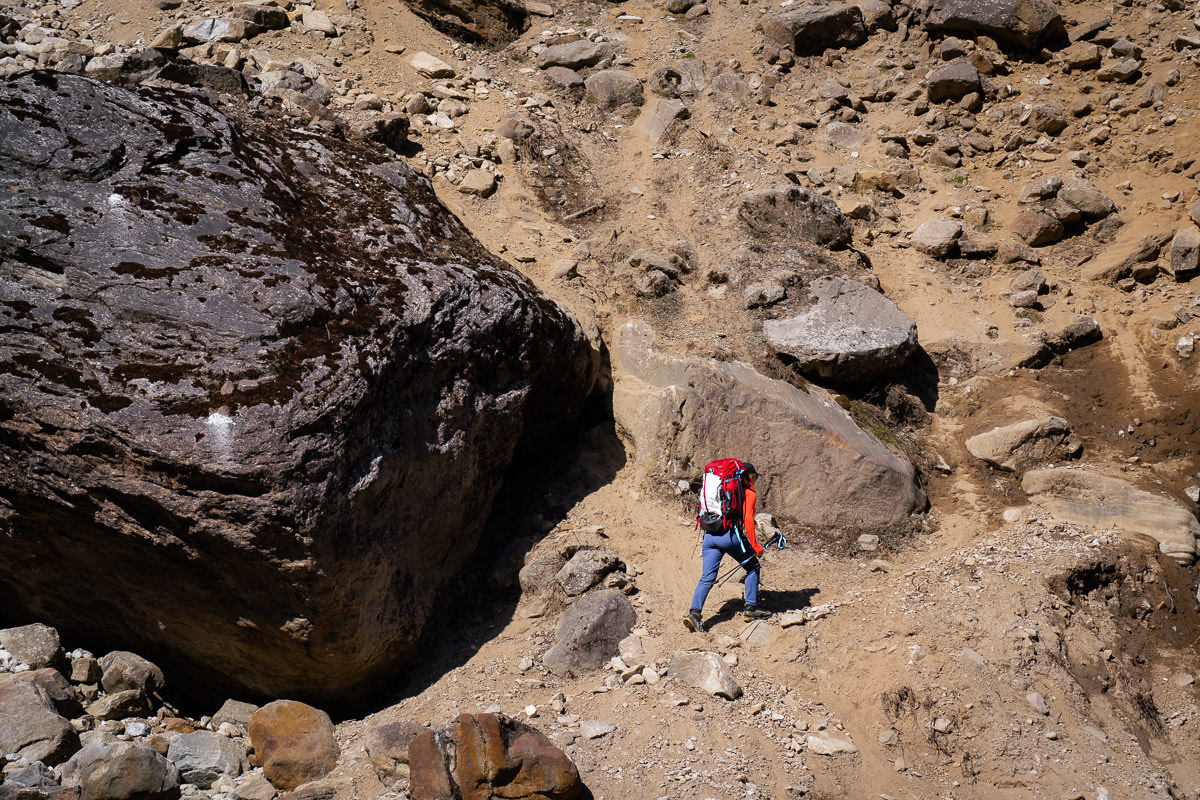
Day seven of the Makalu Base Camp Trek, began as we headed up the hill to Langmale Kharka. This was a shorter day with just 8km of distance and 500m to climb. The scenery becomes grand with towering cliffs on all sides. A magnificent, stone stairway leads trekkers up to the plateau to spend the night at the picturesque lodge.
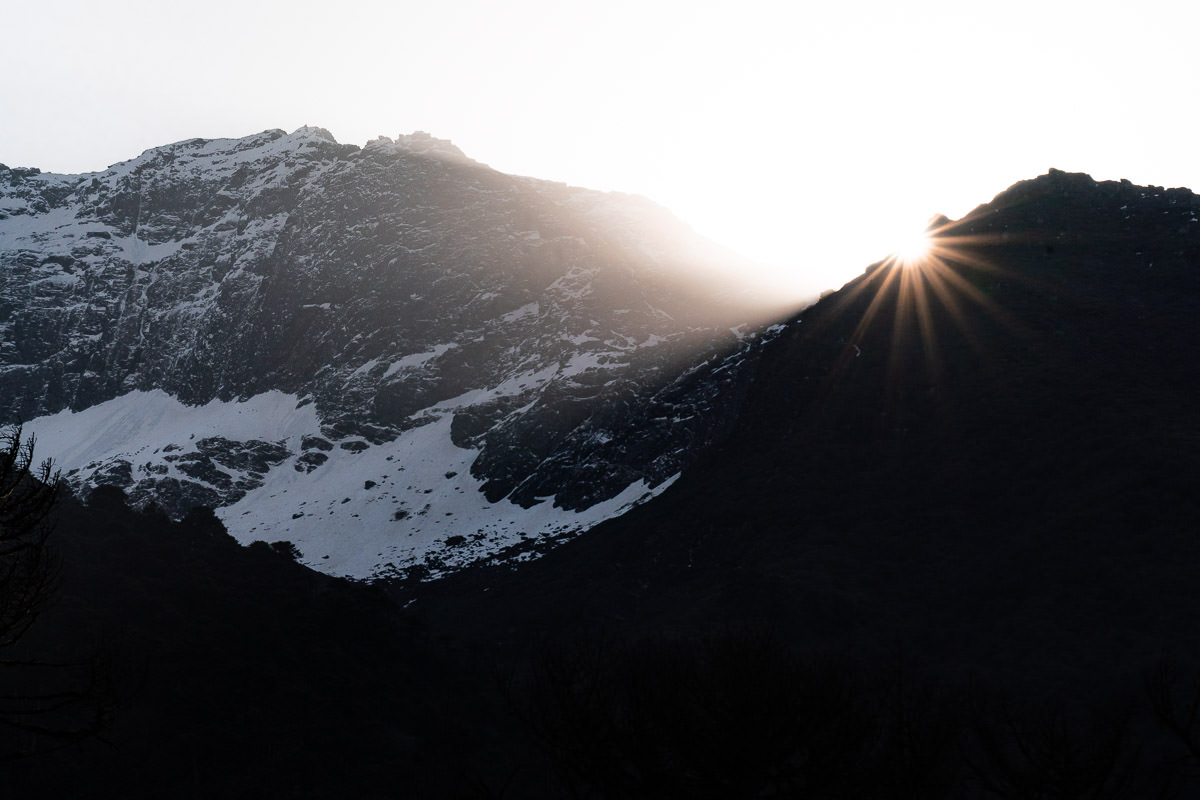
Day eight is the day we reach Makalu Basecamp. The trail winds alongside the Barun River, often with a rocky path to navigate. 7000m peaks tower over the trail as we follow the glacier up towards our destination.
Makalu Basecamp sits right below the mighty Makalu Mountain. A mix of lodging and camping makes it a comfortable place to acclimatize. Unlike some base camps, this has a great view of Mount Makalu and often in the morning, there’s a spectacular view of the clear summit (8,458m).
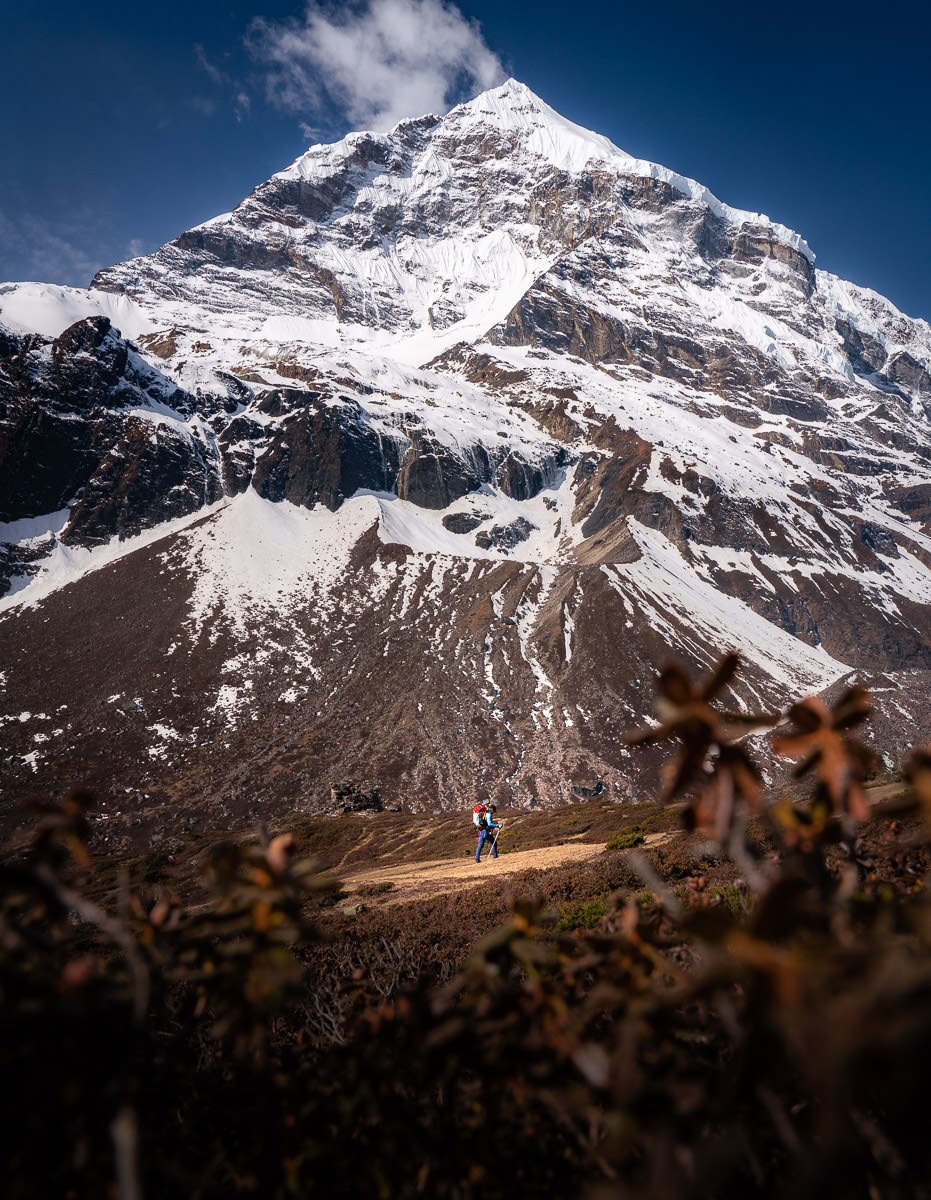
Day nine is spent at Makalu Base Camp. It can be a rest day our a day to go and hike up onto the nearby slopes. Here you can catch a glimpse of Everest, Lhotse and other surrounding peaks. The climb is slow and steep but very quickly, Everest and Lhotse appear down the end of the glacier.
Back at base camp, card games are in full swing and it is a chance to rest the legs before turning around tomorrow to make the long journey back to Num.
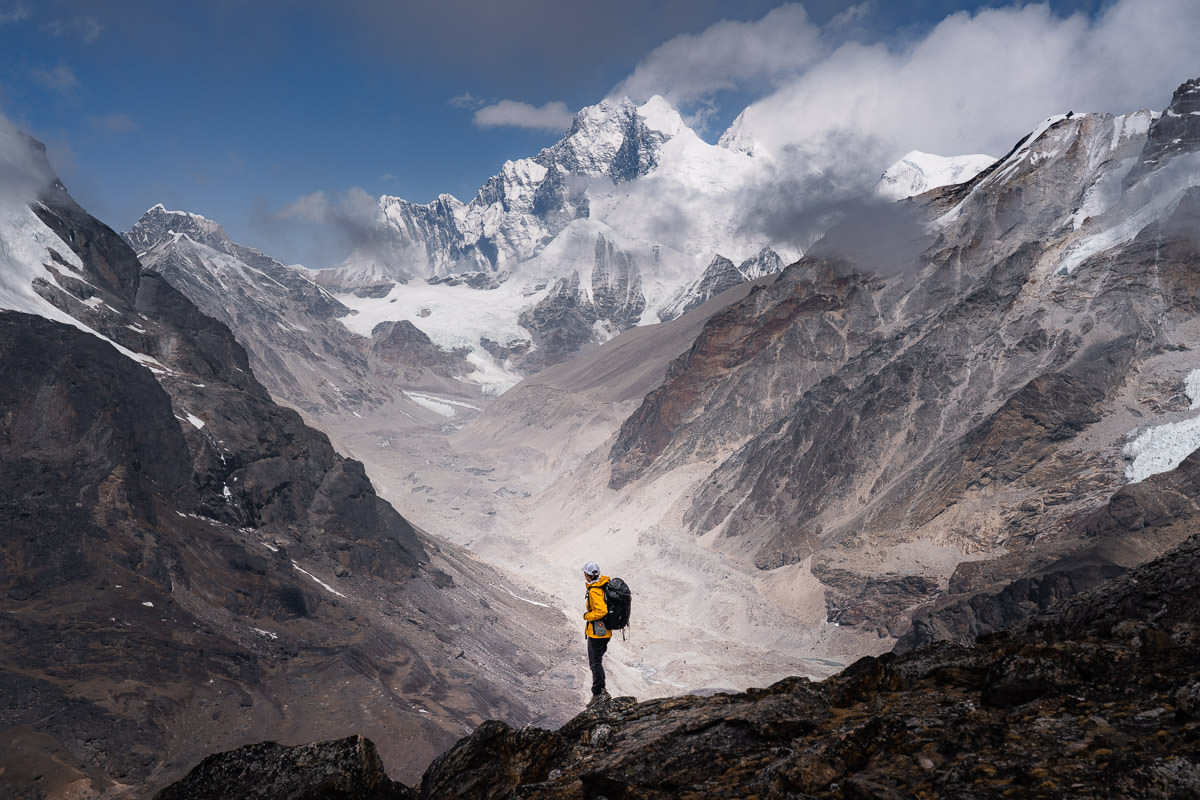
I was on my way to climb Makalu, so we continued by trekking up to advanced Makalu Base Camp (5,750m) but for most, this is where the journey ends. Alternatively, you can continue up to the Sherpani Col and cross into the Khumbu region. This is an advanced trek reaching heights of 6000m and involving some basic mountaineering skills and gear.
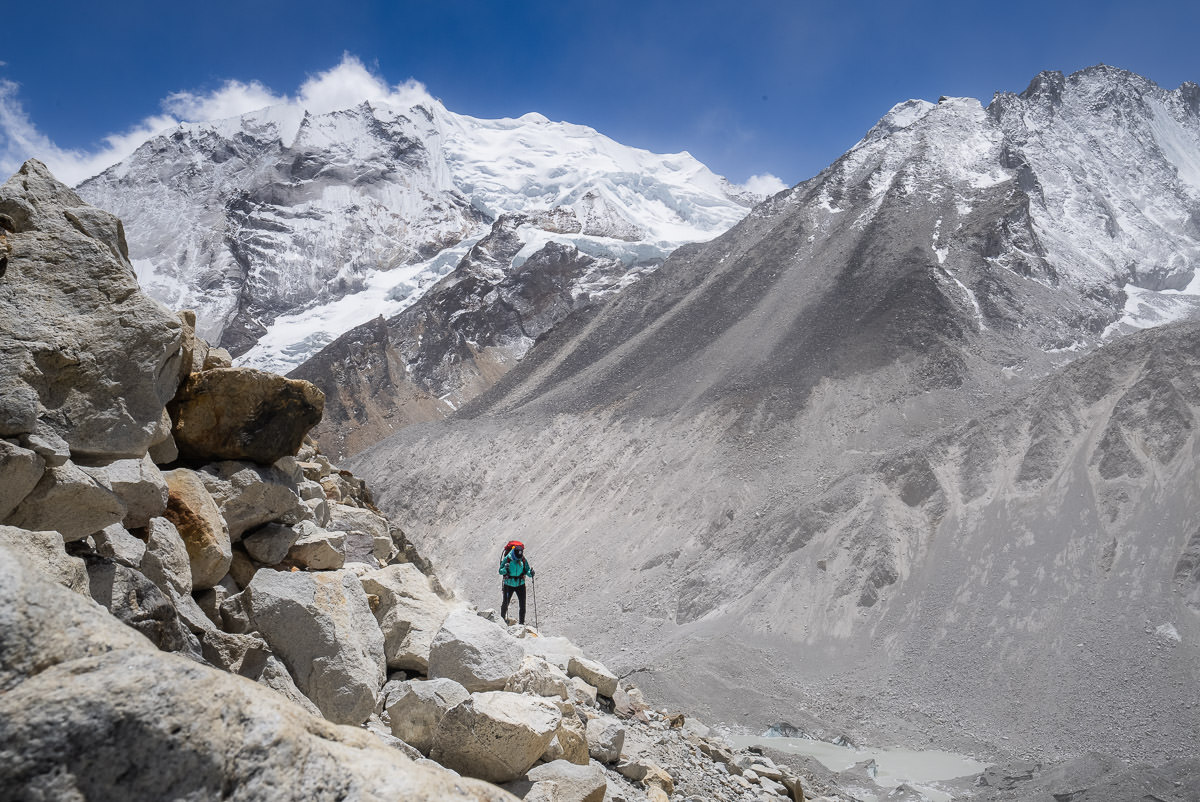
I hope you enjoyed this guide to the Makalu Base Camp Trek and have a great expedition in Nepal.
HAVE YOU READ MY OTHER NEPAL BLOGS?
I’ve been lucky enough to have many awesome adventures in Nepal, which you can check out below where I’ve listed some of my favorite blog poss from Nepal.
- The Most Iconic route: Everest Base Camp Trek
- The Most Scenic Route: Annapurna Circuit Trek
- My Favorite Trek in Nepal: Manaslu Circuit Trek
- An Easy Nepal Trek: Langtang Valley Trek
- A great beginner peak: Island Peak Climb (6,165m)
- My Favorite Climb in Nepal: Climbing Ama Dablam (6,812m)
- My first 8000er: Climbing Manaslu (8,163m)
- My toughest climb in Nepal: Climbing Makalu (8,463m)
- Where to stay: 16 Best Places to Stay in Kathmandu

Purushottam Sapkota
Wednesday 1st of November 2023
Such a beautiful information with full of information. Thank you very much for your great information. https://www.orbitalpineadventure.com/makalu-region-trek
Saturday 16th of September 2023
This is so great. Thanks for the detail. I'm doing the first 7 days of your trip in October and this has helped immensely with what to expect. I'd love to know what you did for power/charging phones and cameras?
- The Ultimate Guide to Makalu Base Camp Trek
- travels tips
- 01/06/2023 12/07/2024
Suppose you are looking for an epic adventure that takes you off the beaten path and immerses you in the incredible natural beauty of Nepal. In that case, the Makalu Base Camp Trek is an experience that should be at the top of your bucket list.
This remote and challenging trek takes you through some of the most breathtaking landscapes in the Himalayas, with towering peaks, deep valleys, and pristine forests all waiting to be explored. But planning your trip can be overwhelming with so much to see and do. That’s why we’ve put together the ultimate guide to the Makalu Base Camp Trek, packed with everything you need to know to make the most of your journey.
From what to pack and how to prepare to the best routes and must-see sights, our guide will help you navigate this incredible trek confidently and efficiently. So, ready to embark on the adventure of a lifetime and discover the secrets of the Makalu Base Camp Trek !
Table of contents
Location and distance, difficulty level of makalu base camp trek, average duration, gear and equipment, physical and mental preparation, obtaining permits, choosing the right route, popular trekking routes, makalu base camp trek itinerary, accommodations along the way, acclimatization, altitude sickness, food and water, exploring local villages, viewpoints and lookouts, experiencing local culture, avoiding altitude sickness, protecting yourself from the elements, choosing a reputable company, recovering after your trek, staying connected while trekking in makalu base camp, post-trek reflection, recommended books and maps, essential gear and equipment, recommended online resources, overview of the makalu base camp trek.
Embark on the Makalu Base Camp Trekking is a courageous journey in the heart of the eastern Himalayas. This adventure isn’t for the faint-hearted, taking 18 to 20 days to complete. The path you’ll trek on is a tapestry of contrasting terrains, from the strenuous climbs and heart-pumping descents on rugged mountain trails to the tranquil stretches of flat paths. All along, you’re surrounded by a visual feast. The trek culminates at an elevation of 5,000 meters, offering breathtaking views of the majestic Mount Makalu.
Nestled in the majestic Himalayan Mountain Range, the Makalu Base Camp Trek is a challenging but rewarding experience. It is located in the eastern part of Nepal, in the Sankhuwasabha district. The trek takes you through beautiful, serene landscapes, including rivers, forests, and terraced fields.
The starting point of the trek is Tumlingtar, located at an altitude of 500 meters above sea level. From there, you will ascend for around ten days to reach the Makalu Base Camp, 5,000 meters above sea level. Along the way, you will pass through several picturesque villages, including Chichila, Num, and Tashigaon. In addition, the stunning, snow-capped peaks of the Makalu range will be visible throughout the trek, providing a majestic backdrop.
The trail consists mainly of rocky terrain, which may pose a challenge for hikers. You’ll need to cross numerous streams and ascend steep slopes. Nevertheless, the rewards are well worth the effort. The breathtaking views of the surrounding landscape and the majestic Himalayas will leave you awe-inspired. Furthermore, the surrounding forests teem with diverse flora and fauna, offering an ideal opportunity to appreciate nature.
The Makalu Base Camp Trekking enables adventurers to experience the unspoiled magnificence of the eastern Himalayas. This trek demands endurance and showcases breathtaking vistas, creating a remarkable and unforgettable journey.
Having discussed the location and distance of the Makalu Base Camp Trekking , let us now examine its difficulty level. It is considered moderately difficult. It is not a technical climb but requires good physical fitness and preparation.
The route to the base camp necessitates the crossing of several high passes. The most elevated access is the Sherpani Col, which stands at 6,150 meters. Although the path is well-marked, the ascent to the pass can be challenging due to the trail’s altitude and steepness. Therefore, Trekkers must be in excellent physical condition and have sufficient acclimatization to tackle those passes.
The descent from the pass is also tricky as it involves scrambling and negotiating several rocky sections. The trail also gets relatively narrow at certain parts, making navigating difficult. Therefore, the trekkers should be comfortable trekking on rocky terrain and be prepared for the potential of hazardous weather conditions.
Overall, the Makalu Base Camp trekking is a challenging yet rewarding adventure. With proper physical preparation and acclimatization, this trek can be undertaken by most people who are comfortable with trekking in high altitudes.
The average duration of the Makalu Base Camp Trek is around 14 days. Even though it’s not as long as the trek to Everest Base Camp , the path is more challenging and rugged because it winds through a secluded and sparsely populated region. The adventure starts with a scenic flight landing at Tumlingtar, a quaint airstrip in eastern Nepal’s heart. From there, a drive takes you to Num, marking the beginning of this exhilarating journey.
The trek is best done from March to May and September to November . This is due to the weather conditions, with the monsoon season being from June to August. During the trek, the ascent to Makalu Base Camp is gradual as the altitude increases, making it easier to acclimate.
The Makalu Base Camp Trek is moderately strenuous, as the trail can sometimes get steep and rocky. However, with plenty of rest stops and tea houses along the way, you can pace yourself and take it slow. The best way to enjoy the trek is to take your time, appreciate the views of the Himalayas, and take in the culture and traditional villages along the trail.
Upon arrival at Makalu Base Camp, the exquisite and breathtaking views of Mount Makalu will be your well-deserved reward after a challenging trek. Following this, you will descend the same path as your ascent, culminating in a hike back to Tumlingtar.
Essential Preparations For Makalu Base Camp Trek
When embarking on a trek to Makalu Base Camp , it is essential to have the appropriate gear and equipment to ensure a safe journey. Therefore, selecting the right things to pack, such as clothing, maps, and a first aid kit, is crucial to success. In addition, preparing oneself physically and mentally is paramount when trekking to Makalu Base Camp .
Adequate preparation can determine the success and fulfillment of the journey, as opposed to abandoning it. Therefore, prioritizing and diligently taking the necessary steps to ensure preparedness for such an undertaking is crucial. Finally, obtaining permits before hiking is essential to ensure safety and legality.
As you think about the upcoming Makalu Base Camp Trek , the most important thing to consider is the gear and equipment you will need. Choosing the right gear is crucial for a safe and enjoyable trek.
A quality backpack is essential for keeping your gear organized and accessible during the trek. Ensure the bag is the right size for you and is comfortable. It should have adjustable straps and compartments for easy access to the items you need while trekking.
Good hiking boots are an absolute must. Ensure the boots have good traction and ankle support to prevent slipping and twisting your ankles. It is also essential to wear comfortable boots and have a good fit. Finally, break them in before the trek to avoid sore feet.
Lastly, you will need to bring layers of clothing to keep you comfortable in the varying temperatures of the trek. Temperature can drop quickly at higher altitudes, so bring a waterproof outer layer and a warm inner layer. It is also essential to have a good hat, gloves, and socks appropriate for the weather.
By bringing the right gear and equipment, you will be equipped to enjoy the Makalu Base Camp Trekking easily and comfortably.
Embarking on a journey to the uncharted terrain of Makalu Base Camp can be an exhilarating feat for any avid explorer. Nevertheless, to fully relish the adventure, adequately gear up your physique and mind for the expedition.
The highest point of the Makalu Base Camp Trek is nearly 19,000 feet above sea level, and the journey can take up to 8 days. As such, it is crucial to be physically fit to tackle the steep ascents and descents.
To ensure a successful hiking trip, you must begin a rigorous training program at least two weeks before starting your trek. This program must include running, walking, swimming, and cycling, emphasizing enhancing your endurance and strength. For the Makalu Base Camp Trek , the most effective method is to hike uphill while carrying a backpack, and you must utilize nearby trails if necessary to achieve this.
Besides physical readiness, mental preparation is equally crucial for the Makalu Base Camp Trek . It demands hikers to have a robust and concentrated mindset. Mindfulness and meditation techniques are essential to achieve mental resilience and focus. Furthermore, envisioning every hiking day can help hikers anticipate potential challenges and maintain a positive and resilient attitude.
To ensure a hassle-free experience, it is paramount to obtain the necessary permits before starting your trek to Makalu Base Camp. The permits required to enter Makalu Barun National Park, where the hike is located, vary depending on the season.
Acquiring the necessary permits is crucial for a hassle-free visit to Makalu Baron National Park . To get the permits, visit the park office in Tumlingtar, which is located near the park. A park ranger will welcome you and provide all the necessary information.
Upon arrival at the office, you must submit your particulars, including your complete name, date of birth, and passport or citizenship details. A copy of your passport photo page must also be provided if requested. Once you arrive, the park ranger will furnish you with essential paperwork, which includes a trekking permit and a TIMS card. If you plan on trekking to Makalu Base Camp , you must possess these documents.
Please read the terms and conditions carefully. They outline any restrictions or rules you must follow during your trek.
Once you have obtained your permits, you can begin your journey to Makalu Base Camp . Ensure you always keep and present your permits at checkpoints throughout the trek.
Planning Your Route For Makalu Base Camp Trek
Planning your trekking journey requires careful consideration of various factors. One of the most crucial tasks is mapping out the route that best suits your preferences. Whether selecting from popular trekking paths or finding comfortable accommodations or campsites, every step in this process is vital to ensure a successful Makalu Base Camp Trek .
After all the essential preparations are done, it is time to focus on planning your route. Choosing the right way is the most crucial part of your trekking planning . Therefore, it is essential to research and ensure your trekking route is feasible and safe.
To plan your trek, it’s essential first to determine how long you’ll be traveling. Will it be a short or multi-day trip? Once you know the duration of your trek, you can start exploring the different routes available. For instance, if you’re planning a multi-day hike, there are many trails to choose from, ranging from a few days to several weeks.
If you plan on embarking on a Makalu Base Camp Trek in Nepal , most importantly, seeking advice from a trekking company is essential. They can provide valuable insights such as difficulty level, the best time of year to go, and recommended places to take breaks. You can also read reviews from other trekkers who have completed the same journey to understand better what to expect. Take advantage of the chance to fully prepare for the trek of a lifetime.
When choosing a route for trekking to Makalu Base Camp , it is crucial to prioritize safety. Consider factors such as weather conditions and potential hazards like landslides or avalanches. Considering these aspects, you can determine which route is the safest for your trek.
Planning your Makalu Base Camp Trek is crucial for a safe and enjoyable trekking experience.
With your planning complete, it’s time to determine a route. Popular trekking routes offer a great place to start for those new to trekking since they have well-maintained trails, stunning scenery, and plenty of cultural attractions along the way.
Trekking through the Himalayas is a top-notch option for adventure seekers looking for a thrilling challenge and awe-inspiring views. The trails available cater to all difficulty levels, from moderate to strenuous, including the Annapurna Trek, the Everest Base Camp Trek , and the Manaslu Circuit Trek . Throughout your trek, you’ll be mesmerized by the majestic mountain vistas, immersed in fascinating local culture, and able to catch a glimpse of rare wildlife.
The Makalu region in Nepal is a true gem that boasts famous trekking trails that lure adventurers globally. This region offers an array of routes that cater to all types of trekkers – from the challenging ones that take you through high passes and valleys to the simpler ones that offer breathtaking views of the Himalayas. The diverse terrain, cultural heritage, and welcoming locals make the Makalu region a perfect spot for those seeking a memorable trekking experience. Check out these notable routes leading you to the Makalu Base Camp.
Makalu Base Camp Trek: The Makalu region boasts one of the most popular trekking routes, which can be completed in approximately three weeks. This trail offers stunning mountain views, challenging high passes, and visits to remote villages.
Barun Valley Trek: Take a journey through the stunning Barun Valley in eastern Nepal within Makalu Barun National Park, a 14-16 day trek. This route offers mesmerizing views of alpine forests, glacial lakes, and awe-inspiring mountain landscapes.
Sherpani Col Trek: Embark on a demanding 20-22 day journey through the Sherpani Col, a high mountain pass situated at the intersection of the Makalu and Everest regions. This route boasts breathtaking vistas of the majestic Makalu and Everest ranges.
Arun Valley Trek: Experience an unforgettable 16 to 18-day trek through the captivating Arun Valley on the southern side of the Makalu region. This picturesque path will guide you through delightful traditional villages, stunning terraced fields, and breathtaking views of the mountains.
Please bear in mind that specific routes may necessitate the assistance of a climbing guide.
Having created a solid plan and made essential preparations for your trek, the next step is to plan your itinerary. Accommodations along the way must be considered when planning the Makalu Base Camp Trek itinerary.
When embarking on a trek, the type and duration of your journey will determine whether you require lodges, tents, or teahouses as accommodation. Therefore, it is essential to carefully consider the options available along your route.
First, consider your budget and the cost of the accommodation. Second, factor in the safety and security of the area. It would be best if you also thought about the amenities offered, such as access to electricity and hot showers. Finally, it is crucial to consider the comfort level of the accommodations.
Sometimes, If you want an authentic experience, consider staying at a remote lodge or homestay. These accommodations are often situated in breathtaking, isolated areas, providing a peaceful and rejuvenating atmosphere. Moreover, staying at a remote lodge or homestay allows you to interact with the locals and learn about their culture. For example, try this while trekking at the Makalu Base Camp .
Comparing the available accommodation options is crucial when preparing for a trek. It will enable you to make an informed decision and guarantee a pleasant and comfortable trekking adventure.
Trekking Tips For The Makalu Base Camp Trek
Before embarking on a mountain trek, it is crucial to take necessary safety measures to guarantee a safe and enjoyable journey. This includes acclimatizing to altitude sickness, ensuring adequate food and water supplies, and understanding potential risks and how to manage them.
Proper nourishment and hydration are crucial to surviving the challenging elements and environment during the trek.
Having planned each part of your route, you are ready to start your journey. Before doing so, however, you must ensure that your body is prepared to handle the physical strains of trekking at high altitudes. Acclimatization is adjusting to the lower oxygen levels in higher elevations and is crucial in avoiding altitude sickness. Our bodies are capable of adapting to changes in altitude. However, it’s essential to remember that this process takes time.
The higher you ascend, the more you must adjust. Planning your route carefully and taking regular rest days are crucial to allow your body to change. If climbing higher than 2,500 meters, you should schedule a rest day for every 3,000 meters.
To aid your body’s acclimatization process, drink plenty of water, restrict physical activity, and avoid consuming alcohol and cigarettes. Proper hydration ensures your body has the fluids to function correctly at high altitudes. Additionally, you should avoid overexerting yourself, as this will put extra strain on your body and hinder acclimatization.
It is essential to know the symptoms of altitude sickness, such as dizziness, headaches, nausea, and fatigue. Should you encounter any of these symptoms, it is crucial to immediately halt your ascent and take a break until you feel better. Doing so can ensure your safety and well-being throughout your trek.
After making the necessary preparations and planning your route, it’s time to embark on your trek. But before you set out, it’s essential to understand the effects of altitude sickness, a common ailment that can affect anyone who ascends in elevation too quickly or too high.
Altitude sickness is caused by the decrease in atmospheric pressure that occurs as a person ascends in elevation. As a result, less oxygen is available to the body’s cells, leading to various symptoms such as dizziness, nausea, fatigue, headaches, and shortness of breath. Therefore, it’s essential to recognize the signs of altitude sickness early and take the necessary steps to prevent it.
The best way to prevent altitude sickness is to acclimatize slowly. That means gradually increasing your elevation over several days, allowing your body to adjust to the change in altitude. Drinking plenty of fluids and resting are essential parts of the acclimatization process. Additionally, avoid strenuous activities until your body has had time to adapt.
Finally, watching for signs of altitude sickness in yourself and your fellow trekkers would be best. Symptoms can worsen quickly, so acting soon is vital if you or someone in your party feels unwell. It’s essential to be aware of any symptoms related to altitude sickness and take necessary precautions, such as descending to a lower elevation or taking a break. If symptoms persist, it’s advisable to seek medical assistance. You can ensure a safe and enjoyable trek by knowing the signs and taking the necessary precautions.
Preparing to deal with challenges is essential to trek in the Himalayas. One crucial aspect is understanding your food and water needs to ensure a safe and successful trek. Bringing sufficient food when setting out on a hiking excursion is vital. This is necessary to sustain your energy levels throughout the journey and be well-prepared for unforeseen circumstances.
When embarking on a trip, snacks like energy bars, nuts, and dried fruits are convenient, lightweight, and non-perishable energy sources. Packaging various snacks is wise to avoid monotony and maintain energy levels. In addition, prepare for unforeseen events, such as inclement weather or delays, that may prolong your trip. Lastly, planning well-balanced meals that incorporate carbohydrates, proteins, and fats for optimum health is crucial.
Are you seeking a lightweight and easy-to-prepare food option for your long treks? Consider freeze-dried meals like soups, stews, and chili! These meals can provide you with enough energy for an entire day of hiking. Also, remember to pack enough clean drinking water for your trek. You know potential water sources like streams, lakes, or rivers along your route. Bring a filtration system that can effectively remove impurities and contaminants to ensure the water is safe for consumption. Proper hydration is vital to a successful trek!
To ensure a safe and successful trek, it is essential to be aware of food and water requirements. Planning meals and snacks and packing enough clean drinking water will ensure you have the energy and resources to complete the journey.
Things to See and Do in Makalu Base Camp Trek
Exploring the countryside through hiking presents numerous opportunities to discover the local villages, viewpoints, and lookouts. It is essential to take a moment to appreciate the scenery and enjoy the peacefulness of the surroundings. Additionally, engaging with the locals and learning about their customs and traditions is worthwhile to immerse yourself in the region’s culture.
Venturing beyond the beaten paths and delving into neighboring villages is an enthralling aspect of trekking. Discovering each place’s unique cultures and charms can be a fascinating experience. In addition, this is a great chance to interact with locals, learn about their lifestyles, and understand their customs and history.
Lush green hills usually surround the villages, and one can easily observe the terraced fields from a distance where farmers tend to their produce and animals. The locals are warm and welcoming; you can always find a friendly face to chat with and learn more about their culture. Walking along the cobbled streets, you’ll notice colorful homes with bright blue or pink doors and windows. The more you explore, the more you’ll appreciate the unique architecture and the beautiful local handicrafts.
You’ll also have the chance to savor the local cuisine and experience the delectable flavors of the area. From freshly prepared regional dishes to street food perfectly cooked, you can find something to tantalize your taste buds. But, of course, the locals are also very proud of their drinks, and the local beers and spirits are worth trying.
Leaving the dusty trails behind, it is time to take a break and enjoy the trek’s incredible views. Perched atop a mountain peak or ridge, viewpoints and lookouts provide an unparalleled natural landscape experience. Whether looking out into the vastness of the Himalayas or embracing a charming village nestled in the valleys, the views are breathtaking.
The views can be enjoyed from a fitted chair or an antique rock formation. For those feeling more adventurous, the path that leads to the viewpoint can be filled with surprises. Discover an unknown waterfall or a hidden stream as you go up the hillside. No matter the route taken, the result is stunning. With the sun setting, the views become even more spectacular. As the sky turns a deep shade of orange, the landscape is illuminated with a warm glow. The trees and the grassy meadows are aglow with the golden light. A panoramic view of the snow-capped mountains is visible to the east, winding its way into the horizon.
The peacefulness of the moment is accentuated by the occasional chirping of birds and the slight breeze rustling through the trees. There is no better way to end a long day of trekking than to take in the serene beauty of the viewpoint. It is a reminder of the natural beauty of the world and a call to explore more of the unknown.
Now that you’ve geared up with top-notch trekking essentials and wise advice, it’s time to dive into the world that extends past the beaten path. Embrace the charm of quaint villages and savor the flavors of the area’s traditional dishes. The region you’re venturing through has a treasure trove of cultural wonders to uncover and understand.
The most exciting way to experience local culture is to explore its villages. Get a chance to meet and mingle with the locals, observe their way of life, and learn about the customs and traditions of the place. The traditional architecture of these villages often gives a great insight into how the locals live. The local marketplaces and bazaars also provide great opportunities to pick up souvenirs and gifts for your loved ones.
Local cuisine is another way to experience a region’s culture. Sample the local dishes, delicacies, and beverages to taste the culture. Such dishes and drinks are usually unique to the area and offer an exceptional culinary experience. Moreover, local markets provide a great variety of fresh produce and ingredients that you can use to cook up your local delicacies.
Watch for local festivals and events that bring the locals and visitors together. Such events are a great way to learn more about the local culture and heritage. These events often involve traditional music, dance, and art forms unique to the region. Participating in such events is a great way to make lasting memories of your trek.
Safety Tips For Malaku Base Camp Trek
Climbing mountains can be a rewarding yet dangerous experience. For a secure and enjoyable journey, it’s crucial to recognize possible hazards and actively guard against them. This includes preventing altitude sickness, safeguarding against harsh weather, and ensuring a trusted guide accompanies you. These steps will help provide a safe journey no matter how challenging the terrain is.
As you embark on your trek, you must be aware of the potential risks of altitude sickness. Altitude sickness is caused by the decrease in oxygen at high altitudes and can cause headaches, nausea, and fatigue. Therefore, to prepare for your trek, you must be aware of the risks and take the necessary steps to protect yourself.
Getting acclimated to the altitude is crucial to avoiding altitude sickness . Gradually increasing your activity level and slowly ascending to higher altitudes can help your body adjust. Drinking plenty of fluids to stay hydrated and give your body the energy it needs to adjust to the height is also important.
Regular breaks and eating small meals throughout the day are essential for avoiding altitude sickness. Eating small meals helps to keep your energy levels up and prevent your body from feeling overwhelmed. Getting plenty of rest and not pushing yourself too hard while trekking is also essential. Paying attention to your body and listening to your needs is critical to avoiding altitude sickness.
Finally, it is essential to know the signs of altitude sickness. Common symptoms include dizziness, headache, nausea, and fatigue. If you begin to feel any of these symptoms, stop and take a break. In addition, regular intervals throughout the trek can help keep your body from feeling overwhelmed and ensure you stay safe while on your adventure.
As you travel through the high altitudes of the Himalayas, it is essential to be prepared to face the elements. The weather can be unpredictable and wildly changeable. From intense heat to icy cold temperatures, it is necessary to protect yourself to ensure a safe and enjoyable trekking experience.
When preparing for your trek , it is essential to wear the proper clothing. Layering is paramount, as it will help you adjust to the fluctuating temperatures. A few basic items include a warm base layer, a waterproof jacket, a fleece, a scarf or buff, a beanie, and a pair of sunglasses. Also, bring thermal underwear, gloves, and a hat, which will be handy for the colder days.
In addition to dressing appropriately, you should also be mindful of the sun. Even though the sun may not be robust, wearing sunscreen and a hat to protect your skin is still essential. Additionally, it is wise to bring a lip balm with SPF protection to avoid having dry and cracked lips.
Finally, your feet are a significant part of your trekking experience, so bring a good pair of walking boots. Waterproof boots are ideal for wetter days and help keep your feet warm and comfortable. It is essential to break in your boots before your trek to avoid blisters or injuries while on the trail.
If you are seeking an extraordinary adventure in the magnificent Himalayan mountains, a Makalu Base Camp trek is an excellent choice! However, before embarking on your journey, it is crucial to select a trustworthy company. Therefore, look for one that puts your safety first and provides top-notch services. Here are some tips to help you select the right company:
Do Your Research: Before choosing any tour operator, research their reputation online by reading customer reviews and feedback from past customers who have used their services. This will give you a good idea of what kind of service they offer and whether or not they’re reliable.
They also inquire about any extra insurance options they may offer when booking is wise.
Ask About Safety Measures: Absolutely, it’s so important to know how your trekking adventure will be safe and sound! Let’s ensure they have those trusty first aid kits on deck, always ready for any little oopsie or scrapes. And you can’t forget about the guides! They should be super knowledgeable and have all the proper training to keep everyone on the right path.
Absolutely! Taking these thoughtful precautions ensures everyone’s safety is at the top of everyone’s mind at every step of our journey. It’s a comforting thought, isn’t it?
Compare Prices & Services: Absolutely! Remember that it’s not just about snagging the lowest price when shopping for the perfect deal. There’s so much more to consider! Think about how comfy you want to be – are you dreaming of plush pillows, or is a simple bed enough? What about the food – does your tummy rumble for gourmet meals, or are you happy with more straightforward fare? And let’s not forget all those fun extras, like bonus activities, that can really make your experience.
Once again, do some research online here, too. See what people say about each option, then decide based on budget/needs.
Contact Them Directly: If you still need clarification on something after conducting your research, please get in touch with the operators through email or phone. Ask any questions you may have until you’re delighted with the answers before choosing whom to book with.
Post-Trek Considerations
After the exhilarating trek comes the necessary post-trek considerations. Recovering after the trek, staying connected while trekking, and reflecting upon the experience are all integral components of the journey.
After an exhausting hike, you can ease your sore muscles by indulging in a warm bath and a satisfying meal. For those who want to keep in touch with their dear ones during a trek, it is advisable to bring a portable solar charger. This will ensure that your electronic devices are always charged and available.
Moreover, staying up-to-date with the latest news and day-to-day events is vital to take advantage of everything necessary. Furthermore, being aware of your surroundings and staying informed are critical when exploring new territory, and they also help you stay connected with the world outside. Lastly, post-trek reflection can be an enriching experience. Write a journal to reflect upon the lessons learned and the memories created.
Once you’ve completed your trek, it’s essential to ensure that you take time to recover properly. After all, your body has worked hard and deserves the rest! Here are a few tips to help you get started.
The first step to recovery is to rest and relax. Take the time to stretch and practice relaxation techniques, such as deep breathing and mindfulness. This will help your body and mind recover from the strenuous trek activity. Additionally, drinking plenty of water and eating nutritious meals will help to replenish your energy.
If you have any aches or pains, treat them immediately. Ice and heat therapies can be incredibly effective in relieving soreness and stiffness. However, if the pain persists, consider speaking to a healthcare professional. It’s always better to be sIt’sthan sorry.
Finally, take the time to reflect on your trek. How did you feel? What did you learn? What would you do differently next time? Writing down your thoughts and experiences can be a great way to process and make sense of your journey. By doing so, you can use what you learn to become a better trekker!
Staying connected with your loved ones during your trek is very important, even if you take necessary safety precautions. Sometimes, you can get so caught up in exploring and having fun that you forget about the world outside. That’s why keeping in touch with family and friends is essential, even when you’re away.
Bringing a dependable cell phone and charger is essential when going on a trek. In case of emergencies, it is also helpful to have a power bank with you. It’s crucial to check its capacity before it lasts the entire trek. Moreover, if you are trekking in an area with poor cell phone reception, you should bring a satellite phone.
Stay in touch with friends and family while you are away by checking in with them every few days. You can also share your journey by posting pictures or videos on social media. This will keep your family and friends updated on your whereabouts and be a fun way to document your trek and create lasting memories.
Finally, it’s essential to keep an eye on the news in case of any weather warnings or changes in the conditions of your trek. Ensure you’re current on your camping area’s reports and transitions. This will ensure you’re prepared and safe on your hike.
Staying connected while on your trek is the key to a safe and successful journey. With the right tools and communication methods, you can stay connected with the outside world while exploring the great outdoors.
Once you’ve finished your trek and allowed yourself some relaxation time, it’s vital to transition into the next phase of your adventure. Taking time to reflect on your experiences can be a valuable way to experience and gain a deeper understanding of the knowledge you have achieved.
There are many ways to reflect on your experiences, including keeping a journal, sharing stories with loved ones, or taking a moment to be still and contemplate. This can help you connect deeply with your journey and recognize your personal growth.
When looking back on your journey, it is crucial to consider both the physical and emotional aspects. Take note of the ups and downs – the times when you succeeded and the moments when you encountered challenges. Acknowledge the hurdles you managed to overcome and the achievements you attained. This will allow you to value the experience and better understand your strengths and identity.
Looking back on your trekking adventure can be simplified by revisiting the photos you captured during the trip. While going through your pictures, pause to remember what was happening and how you felt then. Acknowledging natural scenery, meeting new people, and experiencing the uplifting energy of your companions can assist you in valuing those memories for a lifetime.
Afterward, reflecting on how this experience has impacted you and how it can influence your future is essential. Finally, take a moment to ponder the lessons you have acquired and how you can apply them to progress in life. Reflecting on your journey can provide clarity and a sense of purpose, helping you stay connected to the experience.
Recommended Resources and Gear
For avid trekkers, there are a few essential resources and pieces of gear. Navigating the wilderness can be a breeze from books and maps that can help guide your journey to the proper equipment to bring along to the recommended online resources that provide additional insight. With the right tools, you can make your time as safe and worry-free as possible.
Considering the post-trek considerations, it’s time to dive into the necessary and desirable resources and gear to make the trek enjoyable and safe. When it comes to recommended books and maps, experienced hikers often recommend the book Trekking in Nepal Himalayan by Lonely Planet. This comprehensive guide provides detailed information on Nepal’s trekking trail, including the Makalu region. In addition, it includes maps, elevation profiles, and information about huts and shelters.
Additionally, trekkers recommend the book Nepal Trekking and the Great Himalayan Trail by Robin Boustead. This book provides detailed information on the terrain, weather, and the unique history of the trail. It also contains information on the flora and fauna found along the way.
Online resources also offer trail maps for easy access. These maps visually represent the track, giving trekkers a better understanding of the terrain and distances between towns and other points of interest.
Finally, trekkers may find it helpful to purchase a guidebook of the area they plan to hike. This book will detail the specific trail they plan to take, such as the terrain, water sources, and campsites. Additionally, the book will provide information about local wildlife, trail etiquette, and safety precautions.
As we transition from reflecting on our trek, it is crucial to ensure that we are well-prepared for the journey ahead. Assembling the necessary gear and equipment is vital to ensuring a successful and enjoyable trek.
The first item to consider is a reliable and sturdy pair of hiking boots. They should be waterproof and fit well to ensure comfort and support. It is essential to break in the shoes before the trek. An excellent way to achieve this is by using them frequently and going for short walks while wearing them. Additionally, a pair of sandals for river crossings is a great idea.
The next item to consider is the clothing. When protecting oneself from the elements, selecting the appropriate layers that shield and provide adequate breathability is crucial. During the day, a light, quick-drying shirt and shorts should be worn. A fleece jacket and pants will provide comfort and warmth for the evenings. A waterproof shell should also be included for the rainy months.
Finally, a quality backpack should carry all the essential items. In addition, the bag should be adaptable and have good padding to ensure comfort. Packing cubes can also help keep all things organized. Trekkers can ensure a safe and successful trek by gathering the essential gear and equipment. In addition, the correct items will provide comfort and support throughout the journey, making the tour more enjoyable.
After organizing your trip and assembling all the essential gear and equipment, it’s crucial to refer to trustworthy online sources to guarantee a hassle-free expedition.
The internet contains helpful websites and blogs tailored to hikers and trekkers of all levels. From novices to experienced adventurers, these sites can provide beneficial information on trails, weather, and safety tips. Additionally, online forums allow hikers to ask questions and exchange tips with their peers.
Social media is another excellent resource for those planning a trek. Popular sites like Facebook, Twitter, and Instagram have many groups dedicated to outdoor exploration. Here, hikers and trekkers can find detailed information about trails, photos of the landscape, and reviews from other trekkers. Many of these groups also host events such as group hikes and trail cleanups, making it a great way to meet like-minded outdoor enthusiasts.
Finally, YouTube is an excellent source for trekkers. From instructional videos to guided tours, a wide range of content is available for any adventurer. Additionally, many experienced trekkers share their videos, providing an authentic look at what to expect when hiking in a particular region.
With the right combination of online resources, hikers and trekkers can ensure their upcoming trek is as safe and enjoyable as possible.
The Makalu Base Camp Trek is an incredible adventure that allows you to discover the breathtaking Himalayas. From the verdant forests of the foothills to the challenging peaks of the majestic mountain range, this journey promises to be unforgettable. Preparing adequately with the right equipment and gear is crucial to enjoying this adventure thoroughly.
Preparing adequately with the right equipment and gear is crucial to enjoying this adventure thoroughly. It is time to unleash your inner experience , explore breathtaking landscapes, and immerse yourself in the rich local culture. This Ultimate Guide to Makalu Base Camp Trek is your go-to resource for preparing for the journey of a lifetime.
About Author
Leave a reply.
You must be logged in to post a comment.

- Best Hikes In The World
- Appalachian Trail
- European Hikes
- Nepal Hikes
- Patagonia Hikes
- See All Hikes
- Mount Kenya
- Mount Kilimanjaro
- Mount Toubkal
- See All Mountains
- South Africa
- New Zealand
- Switzerland
- United Kingdom
- Packing Lists
Makalu Base Camp Trek – Set Foot Among Giants
Asia , Nepal
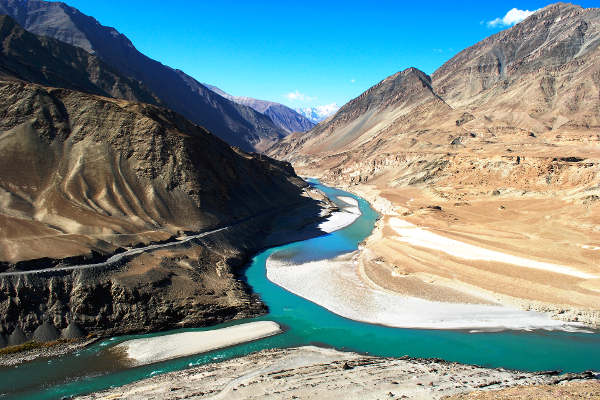
The Makalu Base Camp trek takes you to the world’s fifth-highest mountain , 14 miles east of Everest and 50 miles west of Kangchenjunga, which is the third highest in the world. Seven valleys radiate from Makalu, giving trekkers spectacular sights and opportunities for exploration.
On this page, you will find a comprehensive and impartial guide to the Makalu Base Camp Trek.
Makalu Base Camp Trek Overview
The Makalu Base Camp Trek takes around three weeks, and the sight of Nepal’s highest peaks is the main attraction of this trail. It is possible to use tea houses on this trek, with one or two of a basic nature in any given village where you stop; however, you will usually be in a tent. Tea houses might be closed in the off-season months.
The trail takes you through the Makalu-Barun National Park and Conservation Area , which is famed for its natural beauty and amazing biodiversity: there are 315 species of butterfly, 43 of reptile, 16 of amphibian, 440 of bird, 88 of mammal and more than 3,000 of plant!
Some of the more popular but rare-to-see creatures in the area are the red panda, snow leopard, clouded leopard, Himalayan wolf, Assamese macaque, barking deed and Asian golden cat.
The people in the lower sections are Rai, who make up less than three percent of Nepal’s population. The region’s isolation entails that its distinctive culture, flora and fauna have been well-preserved. On the Makalu hike you'll see some of the last remaining pristine mountain ecosystems found on earth.
Being somewhat inaccessible, this area is little-known to tourists and there are only a few hundred trekkers and mountaineers a year. It was closed to the outside world until 1952 when Eric Shipton came and gave his name to the Shipton La pass.
Regional Map
The Makalu Base Camp hike is situated in the Khumbu or Everest region of Nepal, orange square below.
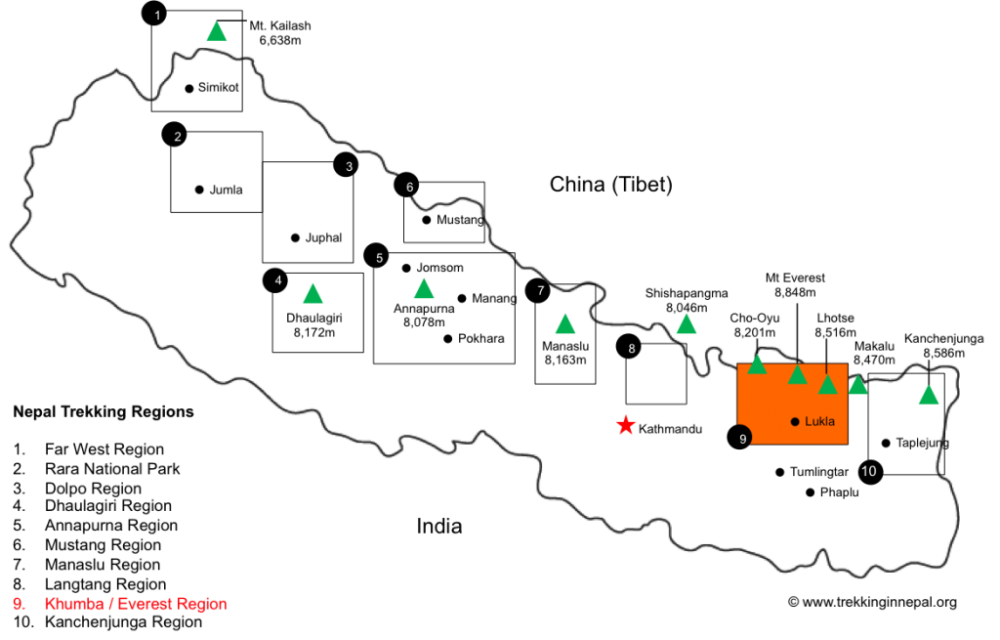
Recommended Map
We recommend the following map - Makalu Base Camp, Trekking Map (NE511) by Nepa Maps.
We have also provided links and recommendations to new guides and maps below for the Makalu hike.
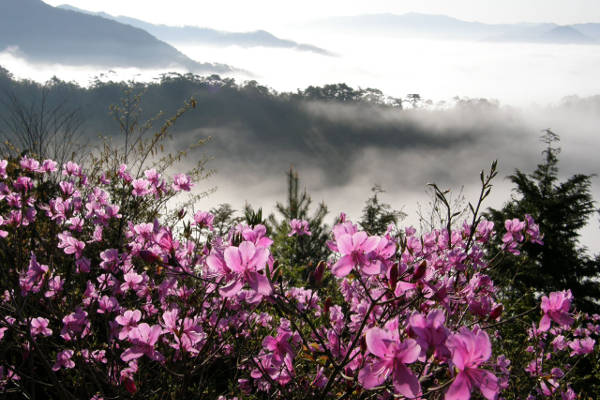
Makalu Trek Itinerary
Please note that there are several Makalu Base Camp trek itineraries that can be done.
Below we have laid out the most popular version – 22 days, leaving from Kathmandu.
You arrive in Kathmandu. While your operator prepares your trek, you have the second day to explore the city.
Explore our places to see in Nepal and what to see in Kathmandu articles.
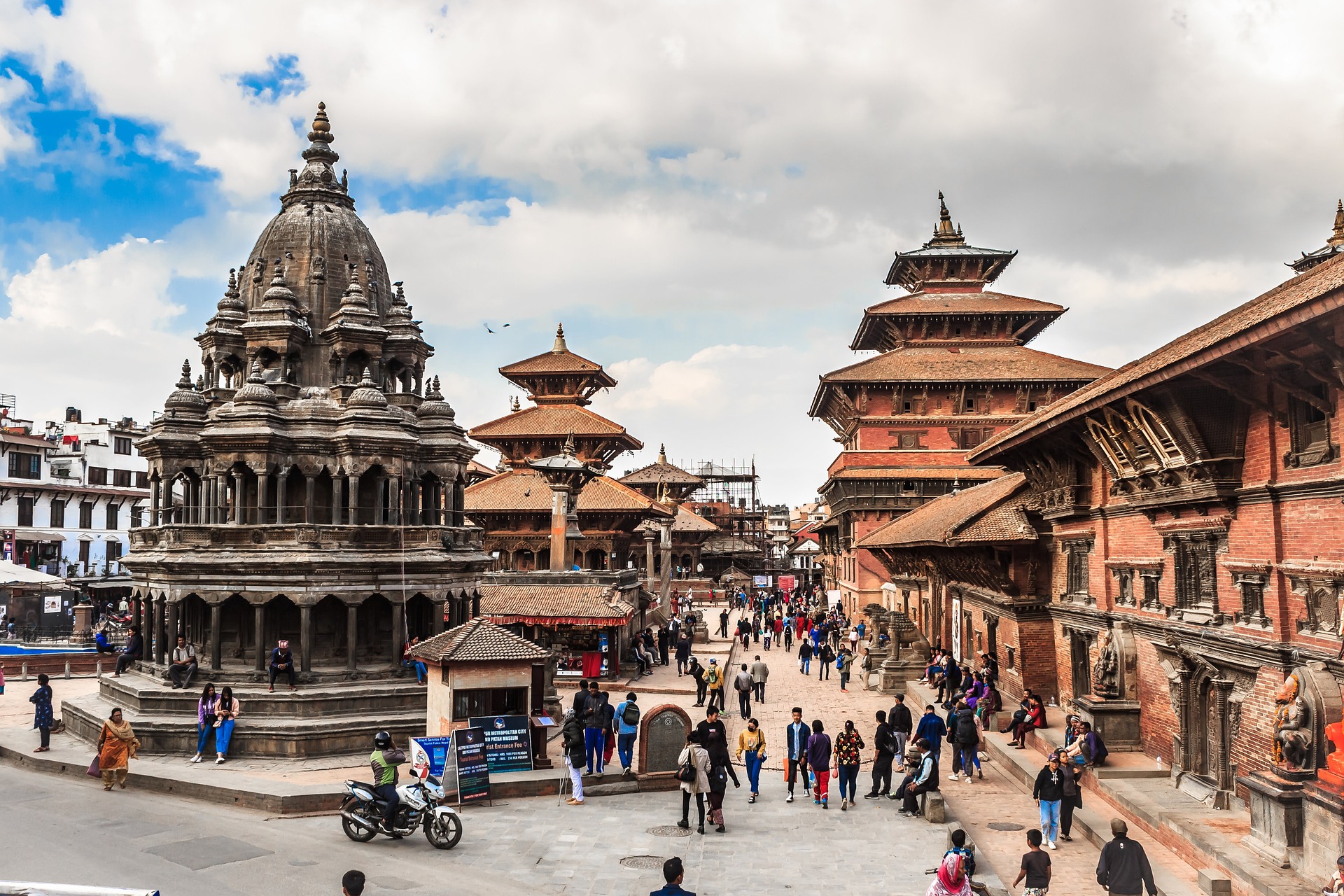
You fly to Tumlingar, on the upper reaches of the Arun River , which takes an hour. You then make for Khadbari. You take lunch among kabra trees. Walking continues and you cross a plateau for about 45 minutes. The trail climbs gradually to Khadbari. You camp above the village.
You walk through many picturesque villages, mostly uphill. You pass through bamboo groves and one rhododendron forest. The rhododendrons found here have the most vibrant colours in all of Nepal – fuchsia, scarlet or plain white. Camp is at Chichela, a small Gurung settlement.
The day commences, surprise surprise, with walking, snow-capped peaks in the distance. The views of Makalu, which means the Great Black One, are astonishing. The path is straight and goes up and down marginally. You enter forest and then descend to Num Camp.
You descend rappidly through the cornfield of Lumbang. The ground here is very rocky. The climb to Sedua Camp is a fairly tough one.
Day 7
You cross meadows and streams before climbing to the Sherpa village of Tashi Gaon, the final permanent settlement in the valley.
Climbing very steeply, this is the hardest day of your trek. You walk through thinly populated forest along a ridge then over a hillock. You finally descend to Kauma, where your tent comes out.
This day is spent acclimatising.
You begin the day with another steep climb through rhododendron forests to the top of a ridge, where you have magnificent views of Chamlang (24,152 feet), Peak 6 (22,110 feet) and Peak 7 (20,030 feet). Then you descend through a forest of rhododendrons and firs to Mumbuk Camp.

You descend a steep gully for a few hundred feet. The trail is ill-defined and rocky with sloppy mud in places. It begins to ascend through a glacial valley. There are impressive views of Peak 6. You arrive at Nhe Kharka, which sits in a large, open and grassy plain with stunning mountain views. Here, you camp.
Today, you go west, young man or no. You swap rhododendron forests for alpine tundra. There are grand views of Pyramid Peak (23,517 feet) and Peak 4 (22,047 feet). With a gain in altitude of more than 5,000 feet, this day has a risk of altitude sickness, but this is unavoidable as there is no suitable camp between Nhe Kharka and Sherson, your destination, 15,142 feet up.
Today, you face no more than a gradual climb to Makalu Base camp, where the south face views of Makalu are wondrous. Before you sit a panorama of some of the highest mountains of the world: Everest (29,035 feet), Lhotse (27,940 feet), Makalu (27,766 feet), Chamlang (24,012 feet) and Baruntse (23,688 feet).
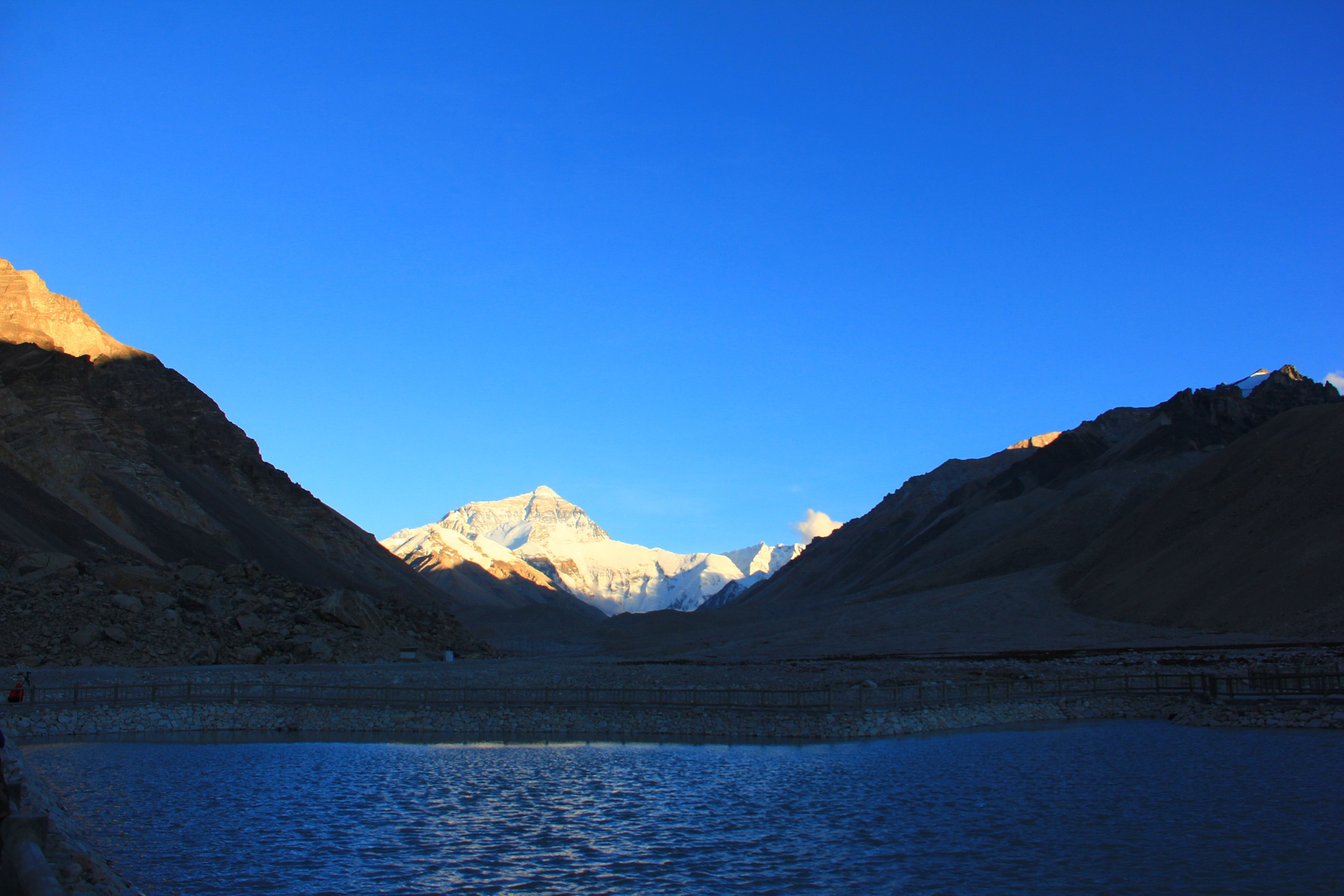
Today you explore the area.
You trek to Barun Valley where you camp for the night.
Your descent continues, bringing you back to Mumbuk.
You cross Shipton La pass (13,875 feet) and then descend to Kauma.
You walk to Tashi Gaon where you camp for the night.
You trek through farming settlements. The next stage is through forests, passing some streams. You get to Pukuwa.
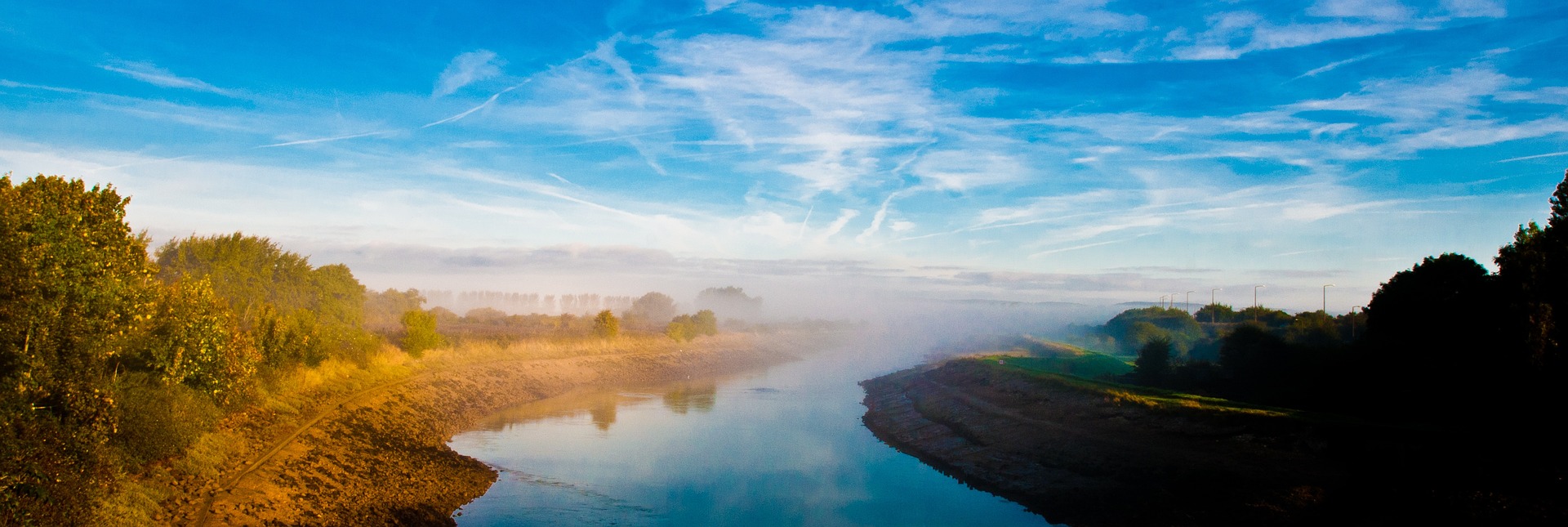
A path through forests leads to exposed, narrow tracks where the views are tremendous. You cross rocky ridges before camping near the village of Bumling.
You walk along the eastern bank of the Arun river. You pass through Chyawabesi and then have a short climb that stops at Tumlingar.
You are driven back to Kathmandu.
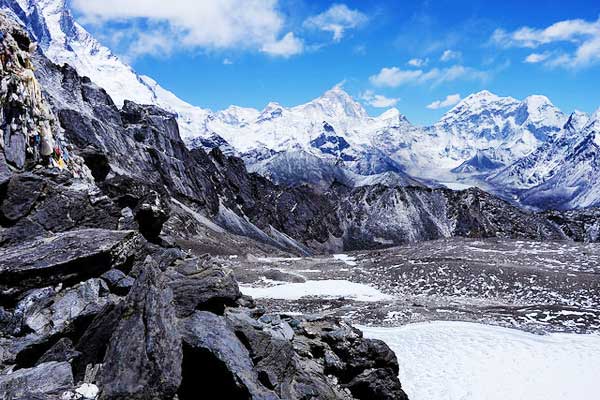
Makalu Base Camp Trek FAQ
How much does the makalu trek cost.
The Makalu trek costs somewhere in the region of $3,000 to $4,000, depending on which trek operator you use.
Are permits required for the Makalu Base Camp trek?
Yes, permits are required for the Makalu Base Camp trek. You require a permit granting entry to the Makalu Barun National Park Conservation Area, which costs around $30. You must also have a Trekker Information Management System card, which must be obtained in Kathmandu or Pokhara.
When is the best time to trek to Makalu Base Camp?
The best time to trek Makalu Base Camp is most commonly undertaken pre- or post-monsoon season, from March to May or September to November. The weather in post-monsoon season is better, and so are the views, since the atmosphere has been cleared of dust. Trails can be blocked by snow in winter.
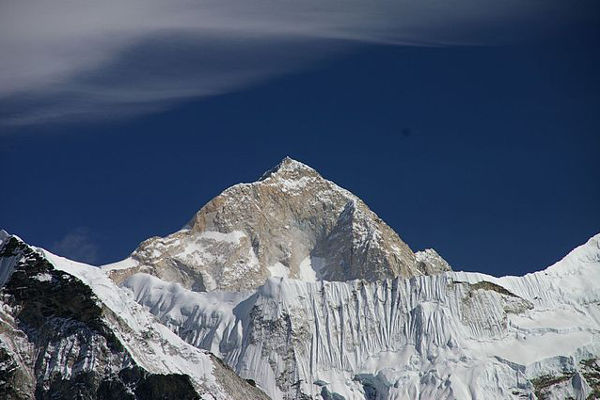
Is altitude sickness a risk on Makalu?
There is a risk of altitude sickness on Makalu because the trek ascends to some high-altitude points. At its highest point, Makalu Base Camp, you will reach an altitude of 4,800 meters (15,750 feet).
How difficult is the Makalu Base Camp trek?
The Makalu Base Camp Trek is one of the most difficult treks in all of Nepal due to its high altitude and longevity. Hikers will need to have done several long hikes previously and be at a very good level of fitness condition.
Are there any recommended guidebooks for the Makalu Base Camp hike?
Yes, there are recommended guidebooks for the Makalu Base Camp trek. Makalu earns mentions in many guides.
For a good general guide of Nepal and this trek, we recommend Insight Guides: Nepal or Lonely Planet Nepal by Bradley Mayhew.
For a more specialist trekking guide, we recommend A Trekking Guide to the Nepal Himalaya: Everest, Annapurna, Langtang, Ganesh, Manaslu & Tsum, Rolwaling, Dolpo, Kangchenjunga, Makalu, West Nepal by Sian Pritchard-Jones and Bob Gibbons.
In terms of a single detailed map, we recommend the Himalayan MapHouse’s New Annapurna Trekking Trails Map , which can be bought in Kathmandu, Pokhara or on Amazon UK (unfortunately it is not on Amazon US yet).
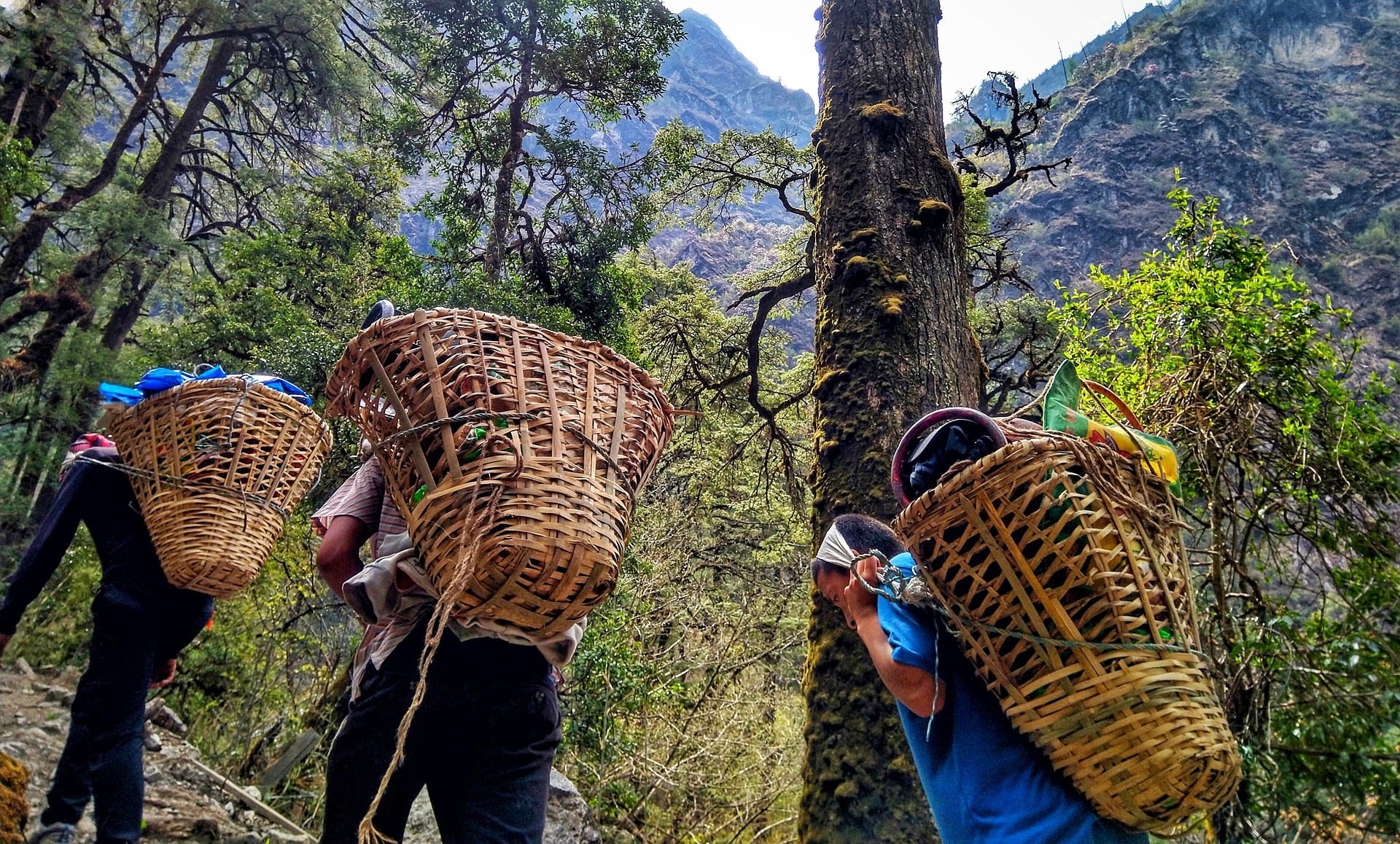
Are there other Nepal trekking routes?
Yes, there are plenty of other Nepal treks to explore. If the Makalu Base Camp trek isn't your cup of tea, you can always try your hand at the Everest hike to base camp , the Langtang hike or the Manaslu Circuit Trek .
Continue browsing
See more information on Nepal . Or check out these other Nepal hiking articles:
- Short Nepal Hikes
- Nepal Easy Treks
- Best Time to Trek in Nepal
- Places to Visit in Nepal
- Hiking Kala Patthar
- Best Nepal Trek Operators
- Dhaulagiri hike
- Rara Lake Trek
- Mera Peak Hikes
- Helambu Trek
- Trekking to Gokyo Lakes
- Gosainkunda Trek
About the author
Mark Whitman
Mark has trekked extensively in Asia, Europe, South America and Africa. He founded Mountain IQ in 2014 with the sole aim to be the best online information portal to some of the most popular mountain destinations around the world. When not writing for Mountain IQ, Mark is out exploring the outdoors with his wife!
Leave a Reply
Your email address will not be published. Required fields are marked
We work with local guides to offer great value adventures at unbeatable prices

Himalayan 360
A Leading B2B Nepal Operator
Call Expert (Raj) 24X7

Quick Questions? Email Us
Makalu base camp trek guide | full information.
Do you crave an experience that pushes your boundaries and elevates your soul? Imagine immersing yourself in the untouched beauty of Makalu Base Camp Trek , where rugged terrain and serene valleys merge. Can you hear the mountains calling?
Nestled within the breathtaking landscapes of the eastern Himalayas lies a realm of adventure and wonder: Makalu Base Camp. As you embark on this remarkable journey, you’ll trace ancient trails, traverse challenging terrains, and discover the rich tapestry of local cultures that call these remote corners home.
With each step, you’ll inch closer to the foot of the mighty Makalu, a guardian of the sky that watches over the world below. Join us as we unveil the mysteries, experience the awe, and create lasting memories among the enchanting elegance of Makalu Base Camp. This is more than a trek; it’s an odyssey into the heart of the Himalayas, a symphony of nature’s marvels waiting to be explored.
The route to Makalu Base Camp weaves a mesmerizing tapestry of diverse landscapes and natural wonders. Beginning in the charming village of Num, trekkers gradually ascend through lush forests, where the melodies of exotic birds accompany their journey.
As the path ascends, the trail transitions into alpine meadows adorned with vibrant wildflowers, offering glimpses of the towering peaks that await. Crossing high mountain passes and traversing remote valleys, adventurers are treated to breathtaking vistas of snow-clad summits, deep gorges, and flowing waterfalls.
The route winds through traditional Sherpa and Rai villages, allowing for cultural immersion and interactions with welcoming locals. The grand finale unfolds at Makalu Base Camp, where the sheer magnitude of the world’s fifth-highest mountain leaves trekkers awe-inspired. Every step along this extraordinary route is a testament to the beauty and magnificence of the Himalayan wilderness.
Table of Contents
How difficult is Makalu Base Camp trek?
The Makalu Base Camp trek is considered to be a challenging trek that requires a good level of physical fitness, prior trekking experience, and mental preparation. Several factors contribute to its level of difficulty:
Altitude Gain : The trek involves a significant altitude gain, starting from lower elevations and ascending to the base camp at approximately 4,870 meters (15,978 feet) above sea level. This rapid gain in altitude increases the risk of altitude-related issues such as altitude sickness. Rugged Terrain : The trail passes through a variety of terrains, including steep ascents, descents, rocky paths, and glacial moraines. The challenging terrain demands surefootedness and physical stamina. Remote Location : The Makalu region is relatively less developed for tourism compared to some other popular trekking areas in Nepal. The facilities and accommodations along the trail might be more basic and limited. Weather Conditions : Weather in the Himalayas can be unpredictable, with rapid changes in temperature and weather patterns. Trekkers need to be prepared for a range of weather conditions, including cold temperatures, rain, and possibly snow. Long Duration : The trek usually takes around 18 to 22 days to complete, including acclimatization days. The longer duration can be physically demanding and requires mental endurance. Limited Services : Due to the remote nature of the trek, services like accommodations, food, and medical facilities might be limited and basic. Altitude Sickness Risk : The rapid gain in altitude increases the risk of altitude sickness, which can range from mild symptoms like headaches to severe conditions that require immediate descent. Physical Fitness : Trekkers need to be in good physical condition with a focus on cardiovascular endurance and leg strength to handle the steep ascents and descents. Acclimatization : Adequate acclimatization is crucial to prevent altitude sickness. The trek includes acclimatization days to help your body adjust to the increasing altitude. Technical Skills (for Climbers) : If you’re considering climbing Mount Makalu, additional technical skills, experience in high-altitude mountaineering, and proper equipment are required.
Makalu Base Camp Tea House Trek Overview
Duration: The trek to Makalu Base Camp usually takes around 18 to 22 days, including acclimatization days. The duration can vary based on your itinerary, trekking pace, and the number of rest days. Starting Point: The trek often starts with a scenic flight from Kathmandu to Tumlingtar in the eastern part of Nepal. From Tumlingtar, you begin your trekking journey. Route: Tumlingtar to Chichira (1,980m / 6,496ft): The trek starts with a descent to the Arun River and then ascends through terraced fields and forests to Chichira, a small village. Chichila to Num (1,560m / 5,118ft) : The trail continues through forests, passing several small settlements along the way. You’ll descend to the suspension bridge over the Barun River and then ascend to Num. Num to Seduwa (1,500m / 4,921ft) : The route involves more uphill walking through forests and terraced fields, eventually leading to Seduwa, a Rai village. Seduwa to Tashigaon (2,100m / 6,890ft) : The path takes you through lush vegetation and crosses the Arun River. You’ll ascend through forests to reach Tashigaon, a Sherpa village. Tashigaon to Khongma (3,562m / 11,686ft) : The trail ascends through rhododendron forests, offering views of Chamlang and Peak 6. Khongma to Dobate (3,500m / 11,483ft): The path involves ascending and descending through forests and meadows. You’ll cross the Keke La Pass and descend to Dobate. Dobate to Yangri Kharka (3,557m / 11,670ft): The trail ascends through forests, gradually entering a more alpine landscape. Yangri Kharka to Langmale Kharka (4,410m / 14,469ft): The route continues uphill, offering panoramic views of the surrounding peaks and valleys. Langmale Kharka to Makalu Base Camp (4,870m / 15,978ft): The final stretch takes you to Makalu Base Camp, where you’ll be rewarded with spectacular views of Mount Makalu.
Makalu Base Camp Trek Highlights
Breathtaking Views: The highlight is the stunning view of Mount Makalu from the base camp, as well as other surrounding peaks. Diverse Landscapes: The trek offers a variety of landscapes, from lush forests to high-altitude alpine meadows. Cultural Interaction: You’ll encounter local communities, including Rai, Sherpa, and Limbu people, and have the chance to learn about their traditions. Unique Wildlife: The Makalu Barun region is home to diverse flora and fauna, including rare species like red pandas and snow leopards.
Top 3 Challenges of Makalu Base Camp Trek
Altitude: The trek involves ascending to high altitudes, which requires proper acclimatization to avoid altitude sickness. Rugged Terrain: The trail includes steep sections, rocky paths, and river crossings. Weather: Weather conditions can be unpredictable, with temperature fluctuations and the potential for rain or snow.
Our Suggestions for Trek
Adequate Physical Fitness : Good cardiovascular endurance and leg strength are essential. Acclimatization: Take acclimatization days to allow your body to adjust to higher altitudes. Proper Gear : Invest in appropriate trekking gear, including clothing, footwear, and equipment. Experienced Guide: Consider hiring a local guide or trekking agency for navigation and safety.
Facts of Makalu Base Camp Trek
- Makalu is one of the hardest eight-thousander mountains and one of the most difficult mountains in the world to climb.
- Mount Makalu lies about 14 miles or 23 kilometers east-southeast of Mount Everest.
- It is located in the Makalu Barun National Park and Conservation Area in the eastern part of Nepal, near the border with Tibet (China).
- Compared to more popular trekking destinations in Nepal, Makalu Base Camp sees fewer trekkers, providing a quieter and more serene experience.
- The Makalu region is not only rich in natural beauty but also in cultural diversity. Indigenous communities like the Sherpas, Rais, and Limbus inhabit the area, each with their own distinct traditions and lifestyles.
- Mount Makalu’s climbing routes are known for their technical difficulty, extreme weather conditions, and high avalanche risk. These challenges make it a demanding peak for even experienced mountaineers.
- The Makalu Barun National Park and Conservation Area is one of the world’s highest protected areas, spanning from subtropical forests to glaciers. Its elevation range contributes to its unique ecological diversity.
- Mount Makalu is often referred to as the “Great Black One” due to its distinct and dramatic pyramid-like shape. It has steep faces and sharp ridges that make it one of the most challenging mountains to climb.
Makalu Base Camp Trek Itinerary
Here are 3 different itineraries for the trek, which include 9days, 16 Days and 19days. The Makalu Base Camp trek duration depends on which itinerary you are using. Following are the choices of itineraries and maps for Makalu Base Camp Trek. Please read the following itineraries with all the details and information.
9 days Makalu Base Camp trek Itinerary
Day 1: Chamla Kharka to Tashi Gaun Day 2: Tashi Gaun to Khungma Day 3: Khungma to Yangle Kharka Day 4: Yangle Kharka – Shivadhara – Langmaale Kharka) Day 6: Langmale – Makalu base camp (Setopokhari) – Phemathang Day 7: Phemathang – Tashi Gaun Day 8: Tashi Gaun – Num – Khadbari Day 9: Khandbari – Itahari – Kathmandu Doesn’t meet your requirements? Talk with expert on WhatsApp
16 days Makalu Base Camp Trek Itinerary
Day 1: Fly to Tumlingtar and Drive to Num (1505m.|4937ft.) Day 2: Trek from Num to Seduwa (1530m.|5019ft., 6 – 7 hours) Day 3: Trek to Tashi Gaon (2065m.|6774ft., 5 hours) Day 4: Trek to Khongma Danda (3562m.|11686ft., 6 – 7 hours) Day 5: Trek from Khongma Danda to Dobate (3550m.|11646ft., 6 – 7 hours) Day 6: Trek from Dobate to Yangle Kharka (3610m.|11843ft., 5 – 6 hours) Day 7: Trek from Yangle Kharka to Langmale Kharka (4510m.|14796ft., 7 – 8 hours) Day 8: Acclimatization Day Day 9: Langmale Kharka to Makalu Base Camp (4870m.|15977ft., 6 – 7 hours) Day 10: Explore Makalu Base Camp (4870m.|15977ft.) Day 11: Trek back to Yangle Kharka (3610m.|11843ft.,6 – 7 hours) Day 12: Trek from Yangle Kharka to Dobate (3550m.|11646ft., 6 hours) Day 13: Dobate to Khongma Danda/ Danda Kharka (3562m.|11686ft., 6 – 7 hours) Day 14: Khongma danda to Seduwa (1530m.|5019ft., 6 – 7 hours) Day 15: Trek and Drive to Tumlingtar (518m.|1699ft., 7 – 8 hours) Day 16: Fly back to Kathmandu (1400m.|4592ft.) Doesn’t meet your requirements? Talk with expert on WhatsApp
19 days Makalu Base Camp Trek Itinerary
Day 1: Kathmandu To Tumlingtar (Flight) to Chichila (Drive) Altitude of Chichila – 1980 m / 6496 ft – 4 hrs Trek Day 2: Chichila To Num Altitude of Num – 1040 m / 3412 ft – 6 hrs Trek Day 3: Num to Seduwa Altitude of Seduwa – 1500 m / 4921 ft – 6 hrs Trek Day 4: Seduwa To Tashi Gaon Altitude of Tashi Gaon- 2100 m / 6889 ft – 5 hrs Trek Day 5: Tashi Gaon To Khongma Danda Altitude of Khongma Dada – 3500 m / 11482 ft – 7 hrs Trek Day 6: Acclimatization Day Altitude of Khongma Dada- 3500 m / 11482 ft – 2 hrs Trek Day 7: Khongma Danda To Dobato Altitude of Dobato – 3500 m / 11482 ft – 6 hrs Trek Day 8: Dobato To Yangla Kharka Altitude of Yangla Kharka – 3557 m / 11669 ft – 7 hrs Trek Day 9: Yangla Kharka To Langmale Kharka Altitude of Langmale Kharka – 4410 m / 14468 ft – 6 hrs Trek Day 10:Langmale Kharka To Makalu Base Camp Altitude of Makalu Base Camp – 4870 m / 15977 ft – 6 hrs Trek Day 11: Explore Makalu Base Camp Altitude of Makalu Base Camp – 4870 m / 15977 – 3 hrs Trek Day 12: Makalu Base Camp To Yangla Kharka Altitude of Yangla Kharka – 3557 m / 11669 ft – 7 hrs Trek Day 13: Yangla Kharka to Dobato Altitude of Dobato – 3500 m / 11482 ft – 7 hrs Trek Day 14: Dobato To Khongma Danda Altitude of Khongma Danda – 3500 m / 11482 ft – 6 hrs Trek Day 15: Khongma Danda to Tashi Gaon Altitude of Tashi Gaon – 2100 m / 6889 ft – 5 hrs Trek Day 16: Tashi Gaon to Seduwa Altitude of Seduwa – 1500 m / 4921 ft – 5 hrs Trek Day 17: Seduwa to Num Altitude of Num – 1040 m / 3412 ft – 5 hrs Trek Day 18: Num to Chichila to Tumlingtar (Drive) Altitude of Tumlingtar – 1980 m / 6496 ft – 7 hrs Trek Day 19: Tumlingtar To Kathmandu (Flight) Altitude of Kathmandu – 1300 m / 4265 ft – 50 min For a more detailed itinerary of Makalu Base Camp, check out Himalayan 360.
Makalu Base Camp Trek Map
Makalu base camp trek permit, makalu-barun national park permit.
- This permit is required as the trekking route falls within the Makalu-Barun National Park, a protected area in eastern Nepal. The permit can be obtained at the Department of Immigration in Kathmandu or at the entry checkpoint in Num, which is the starting point of the trek. The cost of the permit varies for different nationalities.
TIMS (Trekkers’ Information Management System) Card
- This card is required for all trekkers in Nepal. It’s advisable to obtain a TIMS card through a registered trekking agency in Kathmandu or through the Nepal Tourism Board.
- Please note that regulations and permit requirements can change, and it’s important to verify the current requirements with the Nepal Tourism Board, the Department of Immigration of Nepal, or a reputable trekking agency before planning your Makalu Base Camp trek. Always ensure that you have the correct permits to ensure a smooth and legal trekking experience.
FAQs about Makalu Base Camp trek
What is the duration of the makalu base camp trek.
The trek typically takes around 18-22 days, depending on the specific route, acclimatization days, and other factors.
Is the Makalu Base Camp trek challenging?
Yes, the Makalu Base Camp trek is considered challenging due to its remote location, rugged terrain, and high altitudes. Trekkers should be physically fit and prepared for the demands of the trek.
Do I need a guide for the Makalu Base Camp trek?
Yes, a registered guide is usually required for the Makalu Base Camp trek due to the remote and restricted nature of the area.
What permits do I need for the trek?
You will likely need a Makalu-Barun National Park Permit and TIMS card. The specific permit requirements may change, so it’s essential to verify with the relevant authorities.
Is altitude sickness a concern on this trek?
Yes, altitude sickness can be a concern due to the high altitudes involved. Proper acclimatization and a gradual ascent are crucial to prevent altitude-related issues.
When is the best time to do the Makalu Base Camp trek?
The best time is during the pre-monsoon (spring) and post-monsoon (autumn) seasons, from March to May and September to November, when the weather is generally more stable.
What are the accommodation options during the trek?
Accommodation is typically in teahouses or basic lodges along the route. Facilities may be more basic compared to popular trekking regions like the Everest or Annapurna regions.
What should I pack for the Makalu Base Camp trek?
Pack appropriate clothing for various weather conditions, trekking gear, a good pair of trekking boots, and other essentials. It’s important to pack light but be prepared for the trek’s challenges.
Can I do the trek solo, or do I need to join a group?
Solo trekkers might not be allowed due to safety concerns. You may need to join a guided group or have a licensed guide accompany you.
What kind of training or preparation do I need for this trek?
Physical fitness, cardiovascular endurance, and some prior trekking experience are beneficial. Training for uphill and downhill walking and carrying a backpack can help prepare you for the trek.
Leave a reply … Cancel reply
Your email address will not be published. Required fields are marked *
Save my name, email, and website in this browser for the next time I comment.
Keep Reading See All
Permit for makalu base camp trek | complete information, packing list for kailash mansarovar yatra | complete list.

Alpha Adventure Treks
Your Perfect Trekking Partner

Makalu Base Camp Trek: Complete Guide

Last Updated on January 3, 2023 by Alpha Adventure Treks
An adventure off the beaten road is the Makalu Base Camp Trek (8,481m) in Nepal’s Himalayas. Compared to more popular trekking routes in Nepal, it is further, more rugged, and more physically demanding. Most hikers spend at least 8 days on the Makalu Basecamp route to reach the summit at 5,050 meters. Then, on a 5–6-day journey back out, hikers must follow their exact same route as they came in. Unlike Everest Base Camp , where the peak is somewhat obscured from view, at the base camp you actually sit at the base of Makalu and get a clear view of the mountain. You can see the dawn every morning over the peak of the fifth-tallest mountain in the world.
The Rai people are an ethnic group that is primarily found in the hills of eastern Nepal. The journey begins in warm, terraced farmland where they live. The rhododendron and cloud forests, as well as some of Nepal’s few remaining pristine forest and alpine meadows, will be encountered as the path climbs. Rhododendron woods are particularly stunning in the spring when the blossoms bloom in amazing red, purple, pink, and white. As you travel farther into the highlands, past the Barun River Valley, you will come across glaciers, steep granite cliffs, and breathtaking waterfalls. The Sherpa people, a Tibetan ethnic group that predominately lives close to Everest, are found at higher altitudes.
Contact Us For Makalu Base Camp Trek
Table of Contents
Makalu Base Camp Trek: Trip Overview/ Essential Information
The Makalu Base Camp Journey is the perfect trek for outdoor enthusiasts who wish to have a lot of experiences. The stunning view of Mt. Makalu, Mt. Everest, and other impressive peaks in this area is the trek’s main draw. The Makalu base camp trekking trail provides you with an incredibly beautiful natural environment and landscape, a variety of flora and fauna, lush green forests, incredible white snow peaks, rhododendron and pristine forest, Barun river valley, granite cliffs, glaciers, spectacular waterfalls, amazing scenery ranging from the sweeping Arun river valley, the Barun La (4200m), old and ancient Buddhist monasteries, traditional Rai, Sherpa, and Tibetan lifestyles.
Makalu Base Camp Trek: Best Season
The best seasons to trek to Makalu Base Camp are in the spring (March to May) and fall (September to November), when conditions are most likely to be ideal and temperatures are at their highest (particularly at low and mid-elevations). It is possible to complete this walk in the winter, although the chilly weather may be a deterrent, especially given that the lodges in this area aren’t particularly well furnished.
Makalu Base Camp Trek: Difficulty
Due to the slope, remoteness, and ruggedness of the paths, the Makalu Base Camp Trek is marginally more challenging than the Everest Base Camp or the Annapurna Circuit. Many people will find the 5000m altitude you reach challenging. Altitude sickness can occur often. There are several undulations along the path, and for several days, you will only be climbing steps. These days of elevation are exhausting, and the body must swiftly adapt.
Makalu Base Camp Trek: Permits
You will require a Trekkers’ Information Management Systems (TIMS) card and a Makalu Barun National Park Conservation Area permit, each costing $20 USD and $30 USD respectively per person.
Makalu Base Camp Trek: Cost
The Makalu base camp trek costs $2150 USD in total. This overall cost is made up of various components. Several factors affect this price, including: Internal flight transfers; lodging; all meals consumed while trekking; permits; guides and porters; other required documentation; and government taxes.
Makalu Base Camp Trek: Physical Fitness
The Makalu Base Camp Journey is a strenuous trek that frequently requires you to hike for 6-7 hours each day. You must have prior hiking or trekking experience, although it is always an advantage if you have engaged in any kind of trekking activity. We have encountered trekkers of all ages, genders, and physical characteristics. The only challenging aspect is when altitude sickness sets in and the physical effects it might have. It might be beneficial to physically prepare yourself before traveling to Nepal by improving your stamina and oxygen consumption.
Makalu Base Camp Trek: Meals During the Trek
While breakfast is included in your hotel room in Kathmandu, all meals (breakfast, lunch, and supper) are provided throughout the trek. Potatoes, oats, buckwheat, Sherpa stew, and Tibetan bread are common foods in these mountainous areas. When the first seeds were introduced to the area in the early 1990s, Sherpas began cultivating potatoes. At higher altitudes, the selection of cuisine is limited, with the exception of several potato dishes. Carbohydrates, which are abundant in potatoes and a great source of energy at high altitudes.
Makalu Base Camp Trek: Packing List
You can get a general sense of what you need to bring for the walk from the material that follows. It is crucial that you remember the necessities because doing so will affect your trek’s comfort and safety. It’s equally crucial that you go on the hike without carrying too much gear. This should all fit into a backpack that is no larger than 50 liters and weigh no more than 14 kilograms.
- 1 pair of pants that maybe convert to shorts
- 1 pair of shorts
- 1 Warm or thicker pair of hiking pants
- 1 Long sleeve quick-dry shirt
- 1 Long-sleeve thermal shirt
- 2 Short-sleeve t-shirts
- 1 Thermal long underwear
- 4 pairs of quick-dry underwear
- 1 Lightweight down jacket
- 1 Heavy-duty summit down jacket
- 1 Neck Buff
- Hiking boots
- 1 pair of warm summit socks
- 2-3 pairs of regular socks
- Trekking poles
- Water filter
Feel Free To Contact Us.
Share this:.
- Click to share on Twitter (Opens in new window)
- Click to share on Facebook (Opens in new window)
- Click to share on WhatsApp (Opens in new window)
Related Post
Author: Alpha Adventure Treks
You might want to explore the highest and coolest Himalayas of Nepal, explore Nepali cultures, and visit many beautiful places of Nepal. We are here to make your travel dream come true. There are so many thing you can do in Nepal. You can enroll in trekking, mountaineering, hiking, rafting, and jungle safari. We create best itinerary for our customers according to their travel plans. Our agents are very cooperative and they will contact you beforehand so that you can tell what to include in your travel itinerary. We have highly experienced and very professional team in our Company. They make sure about your safety and other travel things. With us, it will be easy for you to travel to your favorite destination. View all posts by Alpha Adventure Treks
Makalu Base Camp Trek - 22 Days

- Duration 22 Days
- Difficulty Level Moderate
- Max Altitude 5250m
- Group Size 1 - 20 Person
- Start City Kathmandu City
- End City Kathmandu City
- Trip Type Private and Group Joining
- Activity Trekking and Hiking
- Best Season March - June and September - December
- High-altitude trekking on a peaceful, crowd-free trail
- Tent camping – sleep underneath a beautiful starry sky
- Views of Makalu (8463 meters/27,766 feet), Mount Everest (8848 meters/29,029 feet), two of the 5 highest mountains in the world
- Thick forests of rhododendron trees, teeming with rare animal species
- Passes numerous local villages that offer their warm hospitality
Our Makalu Base Camp Trek is a rugged up-and-back trip to the base of Makalu (8,485 meters/27,838 feet) – ‘the throne of the gods.’ Pass through the wild backcountry of one of Nepal’s most remote and undeveloped areas. Makalu is the 5th highest mountain in the world, and you’ll be exposed to epic views of it during the trek. You will also get eye-popping views of Everest (8848 meters/29,029 feet), Lhotse (8516 meters/27,940), and many more snow-clad peaks of the Everest and Makalu mountain ranges.
The epic mountain views are just the icing on the cake. Throughout the trek, you will be ‘lost’ within the epic scenery of Makalu-Barun National Park. The park is a real wilderness area and home to over 3000 species of flowering plants and hundreds of types of orchids. Also, along with the trail, it is possible you will run into snow leopards, red pandas, musk deer, and blue sheep. Keep your eyes peeled!
The gateway for the Makalu Base Camp Trek is Tumlingtar, which is reached after an exciting flight from Kathmandu. Tumlingtar lies near the Arun Koshi (River). Beginning by hiking through lush terraced hillsides, we slowly move north and upward. Starting from 500 meters above sea level in Tumlingtar, we eventually reach up to 4870 meters when we arrive at Makalu Base Camp. Such a climb calls for proper acclimatization, which is built into our itinerary as exploration days, so you have plenty of time to relax and enjoy the beauty. Because we traverse a vast range of altitude, we see diverse landscapes and people. As we pass from large farming villages in the lowlands to high alpine meadow settlements, every day is full of surprises.
The trail is not for the faint of heart, nor for those who wish to trek with the ‘luxuries’ provided by teahouses. Our Makalu Base Camp Trek is a camping journey. Where there are guesthouses, we can stay there upon your request. Otherwise, we will be camping outside under a tent. Our skilled chef will prepare the meals and we will be sleeping under the bright stars and towering peaks. Get away from your attachments in your normal, everyday life and ‘get lost’ in the mountains. For a couple of weeks, you won’t have a worry on your mind, except where the next great viewpoint is.
Trekking is possible throughout the year, but Spring (March to May) and Autumn (September to November) provide the best weather. During the Spring, there is a bit more color and the rhododendrons are blooming, and in the Autumn months, the skies are generally clearer. Also, it is easy to combine the Makalu Base Camp Trek with the Everest region treks. Let us know if you would like us to set that up for you. Breeze Adventure arranges the trek with complete management. Please, feel free to contact us for more detailed information.
A representative from Breeze Adventure will welcome you our hotel. We will prepare you with information and gear for your trek.
- Max Altitude: 1400m
- Accommodation: 2/3 Star Hotel
- Meals: Breakfast
Have breakfast and start sightseeing around Kathmandu in a private vehicle. We will see several UNESCO World Heritage Sites. We will learn about each site’s historical, religious, and cultural significance. Overnight in a hotel.
- Transport: Car/Van
Take a scenic flight from Kathmandu domestic airport to Tumlingtar. From here, we drive to Chichila. Overnight in a Tea house.
- Max Altitude: 900m
- Accommodation: Guest House
- Transport: Jeep/Bus
After breakfast, follow the trail north along the ridge and then drop steeply through vibrant terraced hillsides to Lumbang. When we near the river, cross the questionable suspension bridge over the Arun Koshi. The north side of the valley consists of small terraced fields where villagers grow various crops. From here, climb up almost 1000 meters where, after several hours, you reach Seduwa, the entry checkpoint for Makalu-Barun National Park. Overnight in a local guest house camp.
- Max Altitude: 1470m
- Time: 6 Hours
- Walking Distance: 15km
Climb up, again passing the national park entry point, and pass the village of Manigaon. The trail turns west and slowly climbs above the Kasuwa Khola. Ascend more past farms, meadows, and villages to a school at the bottom of Tashi Gaon, which is the last permanent settlement in the valley. Overnight in a local guest house camp.
- Max Altitude: 2070m
- Time: 5 Hours
- Walking Distance: 14km
Today consists of strenuous upward climbing. Stay hydrated and be aware of signs of AMS (Altitude Mountain Sickness). First, we ascend through forests until the path evens out next to a ridge. The flat trail is brief, though. The trail only becomes steeper and rockier before we arrive at Unshisha, a small, damp meadow at 3180 meters. More climbing takes us up to Khongma. Overnight in a local guest house camp.
- Max Altitude: 3560m
Today we must rest and let our bodies get used to the altitude. We can climb a ridge above Khongma for a splendid view of Kanchenjunga in the distance. Overnight in a tented camp.
- Max Altitude: 3850m
- Time: 3 Hours
- Walking Distance: 5km
Leaving Khongma, we climb the ridge via steep switchbacks until reaching a small Chhorten at 3840 meters. From here, we get stunning views of Peak 6 (6739m) and Peak 7 (6105m). Climb through the high alpine environment further to a small pass at Gungru La. Drop down past an almost out-of-place lake. The trail goes up and down for the next couple of hours. You’ll pass one more forest before reaching Mumbuk, which is located near a small stream. Overnight in a tented camp.
- Max Altitude: 3570m
- Accommodation: Tented Camp
- Walking Distance: 12km
The trail drops down into the contours of Barun Valley, which we follow to Yangle Kharka. Be careful as you scramble your way across previous landslide spots and through high alpine meadows (with awesome mountain views). The path crosses the Barun Valley on a wooden bridge to reach Yangle Kharka. Overnight in a tented camp.
- Max Altitude: 3600m
Follow the banks of the Barun Khola, still within Barun Valley. Climb gently to reach Ripok Kharka, a teeming rhododendron forest. Traverse a rocky bit and then climb the moraine of the Barun Glacier, with views of Peak 4 (6720 meters) and Pyramid Peak (7168 meters) among many more. Continue along the trail, with views of Makalu, before reaching Sherson. Overnight in a tented camp.
- Max Altitude: 4615m
- Time: 7 Hours
- Walking Distance: 17km
After passing Langmale Kharka, the trail turns into a mass of sand and small rocks. The hardly marked trail hugs the stream, so follow along. As the path goes to the north, Makalu finally, and intensely, comes into view. There are trails on both sides of the valley, but we choose to stay on the eastern side. After a couple of hours, we end at Makalu Base Camp. Overnight in a tented camp.
- Walking Distance: 11km
There are several day hikes that we can do to immerse ourselves further into the glory of the Himalaya. We can descend to Sherson again and climb a ridge at 5250 meters to get some breathtaking views of Makalu, Everest, Lhotse and more. Overnight in a tented camp.
- Max Altitude: 5250m
- Time: 2 Hours
Today marks our descent from this marvelous mountain. We take the same trail as we did on the way up. As you already know the trail, spend extra time letting your eyes wander, enjoying the scenery. Overnight in a tented camp.
- Walking Distance: 16km
Retrace your steps back to Mumbuk. We take the same trail as we did on the way up. As you already know the trail, spend extra time letting your eyes wander, enjoying the scenery. Overnight in a tented camp.
Continue descending to Khongma. Overnight in a local Guest House.
Another long, steep descent brings us to Tashi Gaon. Throughout the day, we are surrounded by awe-inspiring beauty once again. Overnight in a local guest house camp.
Retrace the ascent route back to Num. Overnight in a local guest house.
- Max Altitude: 1490m
- Walking Distance: 23km
Cruise back in the jeep to Tumlingtar. Overnight in Tumlingtar.
- Max Altitude: 520m
- Accommodation: Tea House
Take a scenic flight back to Kathmandu in the morning. Spend the rest of the day exploring the capital city. Farewell dinner in the evening. Celebrate a successful trek! Overnight in a hotel.
- Meals: Breakfast and Dinner
- Transport: Flight
Transfer to Tribhuvan Airport. Thank you for choosing Breeze Adventure as your trekking guide! We look forward to your next adventure with us.
- Transportation to and from Tribhuvan Airport.
- Three nights in a 2-3 star hotel in Kathmandu, breakfast included.
- All transportation for the trek, including flights to and from Tumlingtar.
- Local guest house accommodation in the mountains.
- Tented Camp & supplies (kitchen, sleeping mats, etc.).
- Government-authorized experienced guides and porters
- Insurance, food, accommodation, and wage for guides and porters
- Hygienic meals (breakfast, lunch, and dinner) during the trek.
- All equipment (sleeping bag, warm layers, etc.)
- First Aid Kit Maps
- Service charges and government taxes
- TIMS card and Makalu-Barun National Park Permit
- Post-trek celebration dinner in Kathmandu
- International airfare
- Meals in Kathmandu (besides breakfast)
- Your personal expenses, shopping, etc.
- Shower and electronic charging fees at guest houses during the trek
- Alcoholic drinks, chocolates, tea and coffee
- Tips for guide and porter
- Extra accommodation and meals outside of itinerary
- Costs from unexpected occurrences (i.e. cancellations, weather problems, damages of property, illness, etc.)
Essential Information
Accommodation.
All our packages include accommodation at the cost. This accommodation is included in the set itinerary. While in Kathmandu, we provide a 2-3 Star hotel for you. During the trek, our guides will pick the best lodge for you to stay based on their experience as well as room availability. All the accommodations will be on a twin-shared basis. In the mountain, the Shower and toilet will be on a shared basis. During high trekking season, you may have to share a room with a same-sex trekker from another group. Our company provides you with a sleeping bag, and two-person tents with comfortable mattresses for the Makalu Base Camp trek. Our Guide will try to set up your camp with a spectacular view.
Nepal has a wide variety of food and it is easy to cater to your needs. If you are a vegetarian/vegan, gluten or lactose-free, we are able to work around that if you let us know ahead of time. During your time in the hotel in Kathmandu, your breakfast is included. Lunch and dinner must be covered on your own. On the trek, breakfast, lunch, and dinner are provided. For this trek, you could order typical Nepali food, continental, Italian, Tibetan, and Indian to our guide. While camping, our cook prepares the meals for you. After our trek, we will have a celebration/pre-departure traditional Nepali meal in Thamel.
Guide & Porters
A government-licensed guide will lead you to the Makalu Base Camp. All our guides have tremendous experience on the trails and are passionate about the trekking industry. Our guides and porters are dedicated to making your experience of trekking in Nepal a memorable one. If there is any worry during your trek, our guides will address it. Your safety is our number one priority. For groups of more than six people, there will be two guides. For teahouse treks, there will be one porter for every two trekkers. For camping treks, we will need more porters in order to carry the food, kitchen equipment, tents, etc.
Acclimatization/Fitness/Experience
As many of our treks lead us high into the Himalayas, it is necessary to let our bodies sufficiently get used to the altitude. Our Makalu Base Camp Trek has acclimatization days built into the itinerary. It is best to take it slow to prevent altitude sickness. The level of fitness necessary for this trek. Normally, expect to walk an average of 5-6 hours per day while on the trial. Generally, this trek can be done with an average level of fitness. More important than fitness or experience is one’s personal determination and positive attitude toward finishing and enjoying the trek.
Travel Insurance
We strongly recommend having travel insurance before going on a trek. We do our best to take care of you, but something can happen that is out of our control. In case of a medical emergency, leading to a helicopter evacuation, it is best to have insurance. You are unable to obtain medical insurance in Nepal and must do so in your home country. Be sure that your insurance covers accidents abroad and high in the mountains.
Best Time to Travel
The peak seasons for traveling in Nepal are during the Spring (March to May) and the Autumn (September to November). These times provide the best scenery and clearest skies, but of course, they are a little more crowded than the off-season. Makalu Base Camp Trek is possible to trek during the Winter (December to February), but you will face cold temperatures and snow. It is also possible to trek during the monsoon season (June to August), though the views will likely be covered by clouds and there is a high chance of rainfall.
Domestic Flights
Flights to and from Tumlingtar can be delayed due to weather conditions and delays may last up to several days. It is best to book flights to and from Kathmandu with several-day margins to avoid missing a flight back to your home country. If flights go smoothly, we will help arrange activities for you during your margin days. In the case that you have a tight schedule and the flights out of Tumlingtar are delayed, it is possible to take a jeep ride back to Kathmandu. Again, we recommend adding a couple of extra days to your arrival and departure dates to prevent any problems.
- Best Price Guarantee
- Private and Group Join Trip
- Guaranteed Departure
- Free and Customizable Itinerary
- Instant Confirmation of a Booking
Did not find what you are looking for?
Send an Inquiry
We use cookies to ensure that we give you the best experience on our website.

Everest Region Trek
Annapurna Region Trek
Langtang & Ganesh Himal
Off the Beaten Path
- Peak Climbing Nepal Island Peak Climbing Mera Peak Climbing Chulu East Peak Climbing Chulu West Peak climbing Pisang Peak Climbing Yala Peak Climbing Lobuche Peak Climbing
- Expedition Everest Expedition Manaslu Expedition Amadablam Expedition
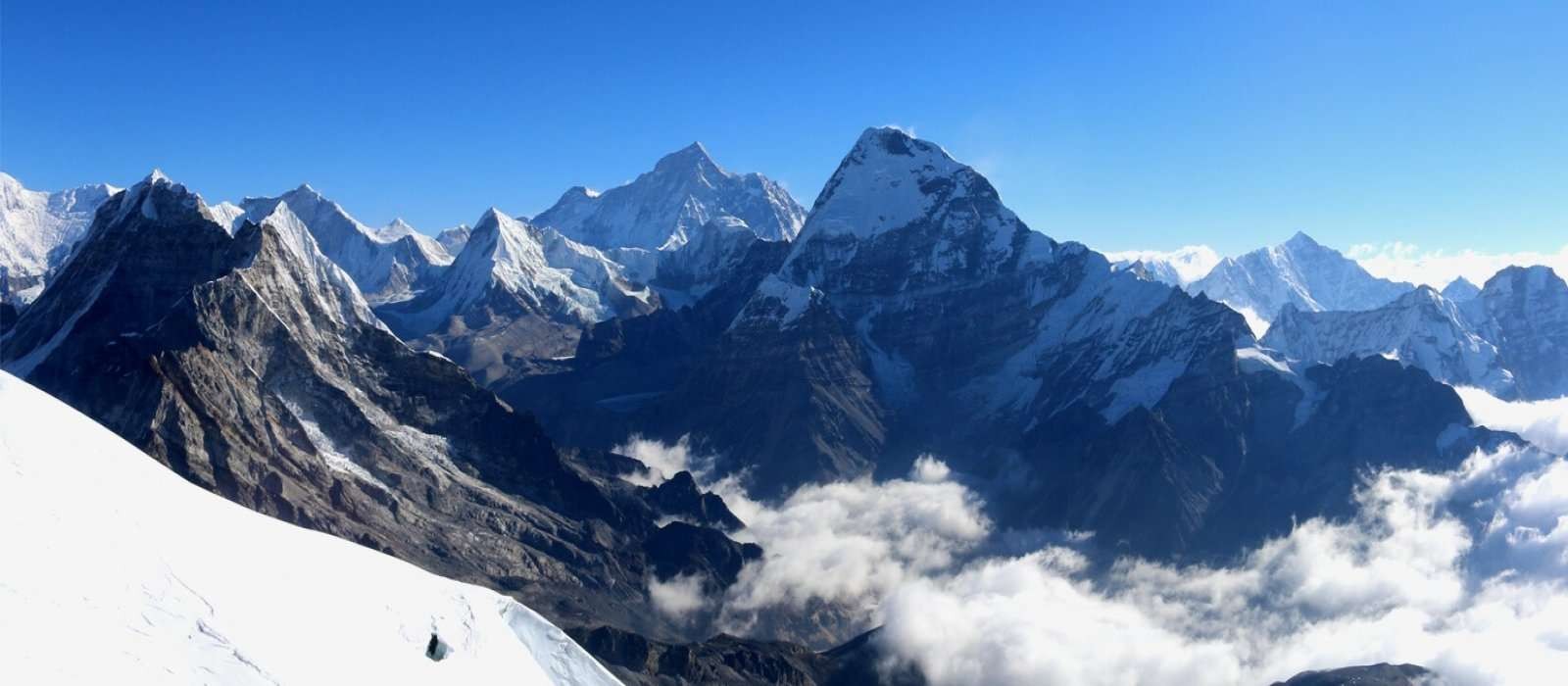
Makalu Base Camp Trek
- Trekking & Hiking
- City Sightseeing
Accommodation
- 03 Nights at Deluxe Hotel
- 18 Nights Tea House Lodge
- 21 Breakfast
Price starts from
Include/Excludes
Quick inquiry, fixed departure, essential info.
Price starts from US$ 1800
Overview & Highlights
Makalu base camp trek highlights.
Makalu Base Camp Trek is famous for nature walks in the Himalayan region of Nepal. Mount Makalu is the fifth highest mountain in the world among the other 14 peaks over 8000 meters. Less-frequented trek to Makalu Base Camp takes you to high altitudes, snowy landscapes, and the ethnic Himalayan lifestyle on a lonely trek, now it is designated as Makalu Barun National Park and Nature Reserve.
Main Highlights
· Unique flora and fauna in Makalu Barun National Park
· Located on the walls of the fifth highest mountain in the world
· Drive from arable land on green terraces to glaciers and waterfalls
· Discover some of the rarest wildlife in Nepal, including the red panda
· Experience the rural life of the various Rai and Sherpa cultures in Nepal
· Unparalleled panoramic views of Everest, Lhotse, and countless other peaks
· The fascinating and unspoiled culture of the different ethnic groups that populate the region.
Itinerary Highlights
Makalu Base Camp Trek itinerary cannot be customized according to your choice. Please write to us for the individual travel Itinerary. The price varies depending on hotel category, transportation, private vehicle, and flight service.
Day 01: Welcome to Nepal
Day 02: Trekking Preparation and city tour of Kathmandu valley:
Day 03: flight kathmandu to tumlingtar and drive to chichira:, day 04: trekking from chichira to num: walking distance 6-7 hours, day 05: trek num to seduwa: walking distance 6-7 hours.
Day 06: Trekking Seduwa to Tashigaon: Walking Distance 5-6 hours
Day 07: Trekking Tashigaon to Khongma Danda: Walking distance 6-7 hours
Day 08: acclimatization day:, day 09: trekking khongma danda to dobate via shipton’s la pass: walking 6-7 hours, day 10: trekking dobate to yangri kharka: walking distance 6-7 hours, day 11: trekking yangri kharka to langmale kharka: walking distance 6-7 hours, day 12: trekking langmale kharka to makalu base camp: walking 6 – 7 hours, day 13: exploring makalu base camp:, day 14: trekking makalu base camp to yangri kharka:, day 15: trekking yangri kharka to dobate:, day 16: trekking dobate to khongma danda:, day 17: trekking khongma danda to tashigaon:, day 18: trekking tashigaon to seduwa:, day 19: trek seduwa to num:, day 21: flight from tumlingtar to kathmandu:, day 22: drop to kathmandu international airport, overview of makalu base camp trek.
Makalu Base Camp Trek is one of the most challenging treks in Nepal among lonely travelers. It offers travelers an incredible opportunity to explore the Himalayan Mountains and culture. As the fifth highest mountain in the world, the Makalu Mountains consist of several peaks in the Himalayas. Makalu National Peak is located in Makalu Barun National Park. Makalu Trek is a fantastic long trip to Nepal, where you can experience the incredible natural beauty of Makalu Barun National Park and adventure in the Himalayan Desert of Nepal. The lush Arun Valley is one of the most beautiful places in Nepal that is sure to leave travelers breathless. Breathtaking views of Makalu Peak and the Himalayan mountain ranges like Mount Everest, Mt. Baruntse, and Lhotse. The Makalu Trekking Path is a form of trekking path that is unusual in Nepal and gives travelers the joy of being in the presence of nature and immersing themselves in the beauty and solitude of beautiful nature.
Your trip to Makalu Base Camp begins with a scenic flight to Tumlingtar from Kathmandu. From there drive to the town of Num, from where your trek to the Makalu base camp begins. Trekking in the Makalu Himalayas is famous for its lush rhododendron forest with increasing altitude; the path consists of polished granite rocks, incredible waterfalls, and glaciers. The track also leads us through the high mountain pass of Nepal, such as the Shipton la Pass and the Keke La Pass. During our walk, the altitude of Makalu varies as you start your journey from Tumlingtar, which is 400 meters high and reaches 5,500 meters on the southeast ridge of the mountain. Makalu Barun National Park is also very rich in biodiversity, as this national park in Nepal is home to rare fauna. Travelers will experience the Himalayan culture and lifestyle of the Himalayan people.
Makalu base camp is a bit challenging because the route goes up and down all the time. Some parts of the hike can even be complicated and technical, especially when crossing the high pass. However, our experience staffs are always at your side to support you every step of the way. All equipment and camping facilities on the Makalu trekking trip, such as mattresses, mats, kitchen and even bathroom tents, are installed where you will spend the night in a camp. Our guide and our cooks also prepare all the necessary food for you. Makalu Base camp trek lies in a restricted area. Therefore, travelers need a special permit for the Makalu Trek. The Makalu base camp trekking permit can be obtained after applying to the government.
Makalu Base Camp Trek Itinerary
Day 01: welcome to nepal:.
According to your arrival schedule, we will be at Tribhuvan International Airport in Kathmandu to welcome you to our country for a beautiful trip. After exchanging warm greetings in the arrival area, we take you to our vehicle and drop to the reserved hotel. It's a day off; you will be alone and can do whatever you want to cool off, but we will be happy to guide you through the city.
Meals included: Breakfast
We will interact with each other on the second day of arrival. After early breakfast, all guests must come to our office to review their trip and buy and manage the necessary items for their trips. After a discussion about your trip, you will start your cultural tour of the Kathmandu Valley. Sights include Swoyambhunath, the oldest monument in the Kathmandu Valley, Kathmandu Durbar Square, the Temple of the Living Goddess, and other medieval architectural wonders, Pashupatinath to immerse in Hindu death rites, bank of a sacred river and Boudhanath. A substantial Buddhist shrine considered the largest in the world.
Today you fly to Tumlingtar after having breakfast in the morning. After breakfast, you meet our other crew members who accompany you on your trip. As soon as you reach Tumlinghtar, you will take a short trip to Chichira, a small but beautiful Gurung settlement. It is rich in Gurung culture. You can explore this beautiful place after you arrive in Chichira. You will rest for the day in Chichira and prepare for the walk the next day. You will spend the night at Chichira
Meals included: Breakfast, lunch, and dinner
You start your first-day trekking early in the morning, right after a hot breakfast. Since this is the first day, you will proceed slowly and gradually increase our pace as you move towards Num Village. On the way to the village of Num, you will meet the beautiful picturesque villages and the lush mountain forests. After a moderate follow-up examination of 6-7 hours, you will reach to Num Village. Num Village is on a ridge with magnificent views from both sides and elevated at the end. Today, you will take a break on the trails and stay in this beautiful city for the night. You will spend the night in Num Village.
After early morning breakfast, you follow a steep and decent path through forests and terraced farms before reaching the Barun River. You have to cross the Barun River. After crossing the river, our way now increases. This valley is quite hot, and the forest here offers some shade. Makalu Barun National Park also starts from here. Before you get to your destination, you need to register your permits. Once everyone expresses their permission, you go an hour or two further to reach the village of Seduwa. Our staff will build the camp to spend the night.
Meals included: Breakfast, lunch, and dinner
Day 06: Trekking Seduwa to Tashigaon: Walking Distance 5-6 hours
Today's trekking path leads through the ridge that is bordered by Ipsuwa Khola in the west and by Kasuwa Khola in the east. Before you reach the exotic village of TashiGaon, you have to cross the slope through a quiet village and walk through small rice fields. Tashi Gaon is the pleasant settlement village of Gurung, surrounded by the breathtaking panorama of the Himalayas. The people in this area are amicable and helpful. You will get to know the Gurung culture in this village.
Today will be a stressful day as you have to walk a steep path at a higher altitude. After Tashigaon, you leave the human settlement and climb through the beautiful shadow of the rhododendron and oak forest to a brook and then to a ridge. After walking through a dense forest, you reach summer pastures with traces of temporary shepherd's huts. From here, the path becomes even more gradual and leads through Kharka and follows a series of stone stairs that lead to a small lake on top of the ridge. Our current destination Khongma Danda is a little further away from here. You will set up our camp here with the picturesque mountains in the moonlight to spend the night.
Today is the day of rest. You can rest in the camp before starting our next trek, or visit an exciting place and viewpoint to explore. From the campsite, you can enjoy the breathtaking view of the beautiful Himalayan areas and gather energy for the next day.
You start your trek with a beautiful view of the surrounding landscapes and the snow-capped mountains. Today's path follows a gradual trail with few ups and downs. Our path leads through Thulo Pokhari and Small Pokhari and then to the summit of Shipton La pass. In times of heavy snow, the trail can be quite tricky and challenging to find. When you continue, you will get to Kalo Pokhari Lake. After the lake, you pass the KeKe La. From here, you can enjoy the fantastic view of Chamlang Chamlang, Peak 6, and Peak 7. After crossing Chorten of Tutu la, you walk downhill to reach the beautiful Dobate valley.
Our day begins with a steep descent through a narrow wooded valley that leads through the rhododendron forest and leads us directly to the Barun River, beyond Tamatan Kharka. If you cross the Barun River, you will reach the upper part of the valley. Beyond this point, the path is steep and arduous with numerous stone chips. So be very careful in the first two hours. As soon as you have passed the steep path, you will take a pleasant walk and gradually gain altitude until you enrich the seasonal settlement of Yangri Kharka at the foot of the valley. You will spend the night in Yangri Kharka.
Today's walk begins with crossing the bridge over the Barun River and then walking on the rocks where you can see a large prayer wall. You take a reasonable step towards the valley, past yak pastures and lush forests. After 2-3 hours of walking, the vegetation begins to thin out. However, rhododendron, barberry, cotoneaster, and juniper bushes persist for some time. A nice walk brings us near Sherson. From Sherson, you can see the lowest glacier in Barun and the imposing Mount Makalu. It is also known as the lower base camp of Mount Makalu. Then you will make a new way to pass Merek. You may notice a significant increase in panoramic views of the Himalayas. You will spend the night in Langmale Kharka.
Today you arrive at the base camp. From Langmale Kharka, we slowly walk uphill to Shershong and finally walk to the Makalu base camp. Mount Makalu appears on a flat path with icy glaciers and snow-capped mountains. With an ascent of 6-7 towards the camp, you will have the opportunity to enjoy the magnificent exhibition of the Himalayas that surround us. You will spend the night in Makalu base camp.
Makalu Base Camp is a rocky wasteland with the magnificent Barun Glacier behind it. Today you will rest to explore the Makalu base camp. When you stand at Makalu Base Camp, you can see the brilliant south face of Makalu and the full panorama of Everest and Lhotse. If you see the magnificent view of this pristine Himalayas, your trip is worth it. In addition to the beautiful scenery of the Himalayas, some beautiful lakes and glaciers are worth exploring. You can take a short walk to Makalu base camp, where you can celebrate the success of our trip. You will spend the night in Makalu base camp.
After the beautiful exploration at Makalu base camp, you descend from the base camp. With a last look at the mighty Makalu, you take the same path you took to reach Makalu base camp. You walk down, Merek, and finally, stop at Yangri Kharka to spend the night. You will spend the night in Yangri Kharka.
After breakfast, you continue your journey from Yangri Kharka. Our way leads through rock falls, green forests, and valleys to Dobate. You return on your way along the banks of the Barun River.
Today's trek will be easier because today's walk follows a quiet path through a spruce and rhododendron forest. Before you go down to Khongma Danda, you need to cross Keke La, Tutu La, and Kauma La on the way.
Today you are returning to Tashigaon. For another 2-3 hours, your way leads through the cool shadows of the dense forest area, reaches the courtyard terrace, and finally the Sherpa village Tashigaon.
We take our steps back and follow the path downhill for an hour or two through the cultivated fields. When you leave Makalu Barun National Park, descend to the Barun River. If you go downhill, cross the slope and drive through many towns and settlements, you will reach Seduwa again. You will spend the night in the village of Seduwa.
After breakfast, you leave the beautiful village of Seduwa. Before you reach the village of Num, you have to cross the lush forest. The path goes downhill, uphill and downhill through culturally rich Sherpa villages and dense forest. It will take you back to Num. Overnight in Num.
Day 20: Trekking Num to Tumlingtar:
Today is the last day of your trek in this region. You continue our return journey and will trace our steps back to Chichira. From Chichira, you can enjoy the fantastic view of Mount Makalu for the last time. From this point, you take a pleasant walk until you reach Tumlingtar for the night. You will spend the night in Tumlingtar.
Today is the last day in the Makalu region! Wake up early for a hearty breakfast. After breakfast, You board the plane to fly back to Kathmandu after our long hike in the mountains. Upon arrival in Kathmandu, you will have time to explore the city on your own.
On the last day of this trip, we will take you to the airport according to your flight schedule.
We hope you enjoyed the trip to Makalu Base Camp and hope to see you on another adventure soon.
Includes/Excludes
Which service is included in the package.
Collection and return at the airport in a private vehicle
Accommodation in a three-star hotel with breakfast in Kathmandu
Three meals a day (breakfast, lunch, and dinner) during t he walk
Best accommodation for two people available as accommodation during the hike
Kathmandu city tours with an experience tour guide on private vehicle
A very experienced, helpful, and friendly guide.
food, shelter, salary, and equip ment for Porter
Accident insurance for all employees.
First aid kit, oximeter for monitoring heart rate, heart rate, and oxygen
Fee TIMS card fee - Wanderer information management system
Taxes and fees for office services
Which Service is not included in the Package?
Personal travel insurance
International airfare
Entry visa for Nepal. You can quickly get a visa on arrival at the airport
Snacks/drinks and other personal expenses
Hot showers while walking
Personal trekking equipment
Tips and tricks for trekking staff and drivers.
All our published fixed departure dates are guaranteed. If the date does not suit your travel plans, the cost and duration of the trip, please contact us for your individual private trip, itinerary and price. Since we are a local travel and trekking company based in Kathmandu, we try to find a small private group that fits your travel needs. Let us know what kind of trip you are looking for and our travel experts will help you plan your customized trip to your dream destination. Thank you and Namaste!
Makalu Base Camp Trek Accommodation
You will stay in a three-star hotel in Kathmandu and camping during the trek. All accommodations are on the twin sharing basis. An individual supplement is available on request collecting the extra charge. We organize rooms with attached toilet in Kathmandu. Also note that single supplements are available in the city area and the lower trekking area, but are difficult to get at higher altitudes. During your walk, you will enjoy real Nepalese cuisine, as well as international cuisine such as Tibetan, Italian, Continental, Indian, etc. Breakfast and dinner are served in the tea house where we stay overnight, while lunch is served on the way to the next destination. All meals during the trek and only breakfast while in Kathmandu.
Makalu Base Camp Trek Route Map
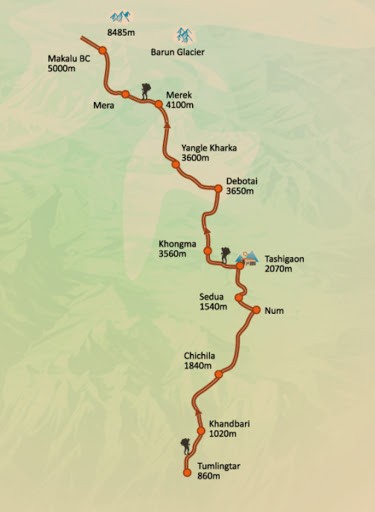
Makalu Base Camp Trek Video
Essential Information
Trekking guide and other staff arrangements.
The most important thing is that it makes this trip pleasant and unforgettable are the trained, experienced, polite, and helpful leaders and crew members who can easily spend your days in the mountains. The best and most professional leaders lead our journey. All of our executives are carefully selected based on their conscious experience, leadership skills, and personal talent. To support local people, we choose only local people as employees who have adequate knowledge of the culture, geography, flora, fauna, and history of their local regions.
Travel insurance
Travel insurance for each itinerary of our company is a prerequisite for booking a holiday. You must have at least one emergency and repatriation insurance, which should include the cost of rescue on the mountain. Please carefully read the terms of your insurers, in particular, make sure that the following is covered: 1) activity (i.e., tourism, trekking or mountaineering) 2) maximum altitude reached in walking 3) evacuation of the helicopter in case of emergency. You must understand that you are ultimately responsible for all costs associated with the evacuation and return procedures and that it is your responsibility to bear the costs of the abandonment or medical treatment. You should be fully aware of the effects of organizing your travel insurance and understand the limitations and exclusions of your policy. Please note that in certain circumstances, our business manager may carry out a helicopter rescue (or other necessary means) in the event of a medical emergency without first seeking approval from your insurance company.
Physical condition and experience requirements
Manaslu Trek is a challenging trek, and it is suitable only for passionate hikers who can walk at least 6-7 hours a day. On some days you may even have to walk 8 to 9 hours. Walking in higher altitudes is more physically demanding than walking in lower elevations. However, if you are in excellent health, average physical condition, positive attitude, self-confidence, and strong determination, you can complete the trip. Exercising and jogging regularly for a few months before the trip is a good idea as it improves your strength and stability. Prior knowledge of hiking is preferred, but you do not require technical expertise. It is essential to check with your doctor before booking this trek.
Proposed preparation
- Exercises Cardiovascular exercises such as running, cycling, jogging, push-ups, and pull-ups for approx. 4-5 days a week for three months before your trip are beneficial.
- You should also participate in developing core strength and muscle endurance during strength training.
- Hiking on the hills in different weather co nditions is proper preparation for this trip.
- If you have access, kayaking and swimming can be a handy way to develop the strength and stamina required for this trip.
- Acclimatization
The Makalu Base Camp Trek route is planned with a high level of knowledge of AMS (Acute Mountain Sickness). Climbing high up too quickly leads to an illness that is serious enough to cause death. Oxygen level will be lower as you reach in higher altitudes. At an altitude of more than 5000 m, for example, there is 50% less oxygen than at sea level. Therefore, our body needs more days to adapt to an atmosphere with less oxygen. During this trip, a separate day is reserved for acclimatization.
The best time to travel
March to May and September to November are the best months for this trip. Although you can make this trip in winter, the cold temperature may not be suitable for everyone.
How difficult is the Makalu Base Camp Trek?
The trek to Makalu Base Camp is a difficult trek. If you've done another hike of over 4,000 meters and are in good physical shape, you can successfully complete this hike.
You have to walk an average of 6-7 hours a day. The hike consists of crossing many rivers, cantilevered wooden bridge, suspension bridge, dense forest, stone steps, sudden changes in altitude and time.
Makalu Base Camp Trek Reviews
Total reviews: 1.
by Markel, USA
One of the best remote trek:- Makalu Trek Review
It is quite simply one of the best, most spectacular and rewarding trek in the world. The landscape approaching the base camp is fascinating in its size and vastness. Makalu will gradually reveal itself to you as you climb the slope on your day trip to base camp, and the views from your lodge at MBC are breathtaking. Another highlight is the crossing of the four high passes from Khongma to Dobate, which offers beautiful scenery and a challenging hike on the way back to base camp. For the fit and adventurous hiker looking for the most remote places and the most challenging treks, this is definitely a must. The stay in the teahouses was also a big advantage for me. What they lack in comfort and sophistication, they gain in charm and character, with warm and friendly hosts and good, simple and nutritious food.
Similar Trips
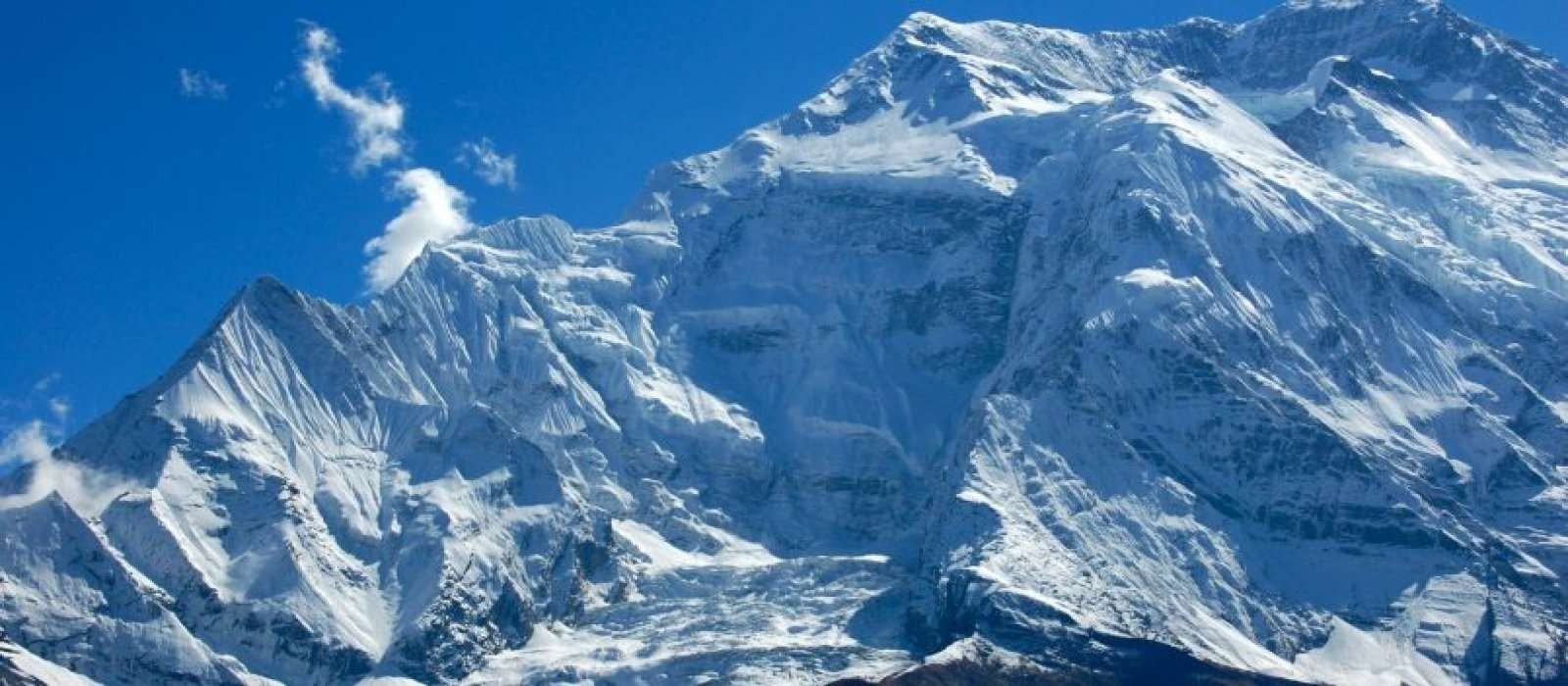
Khopra Danda Trek
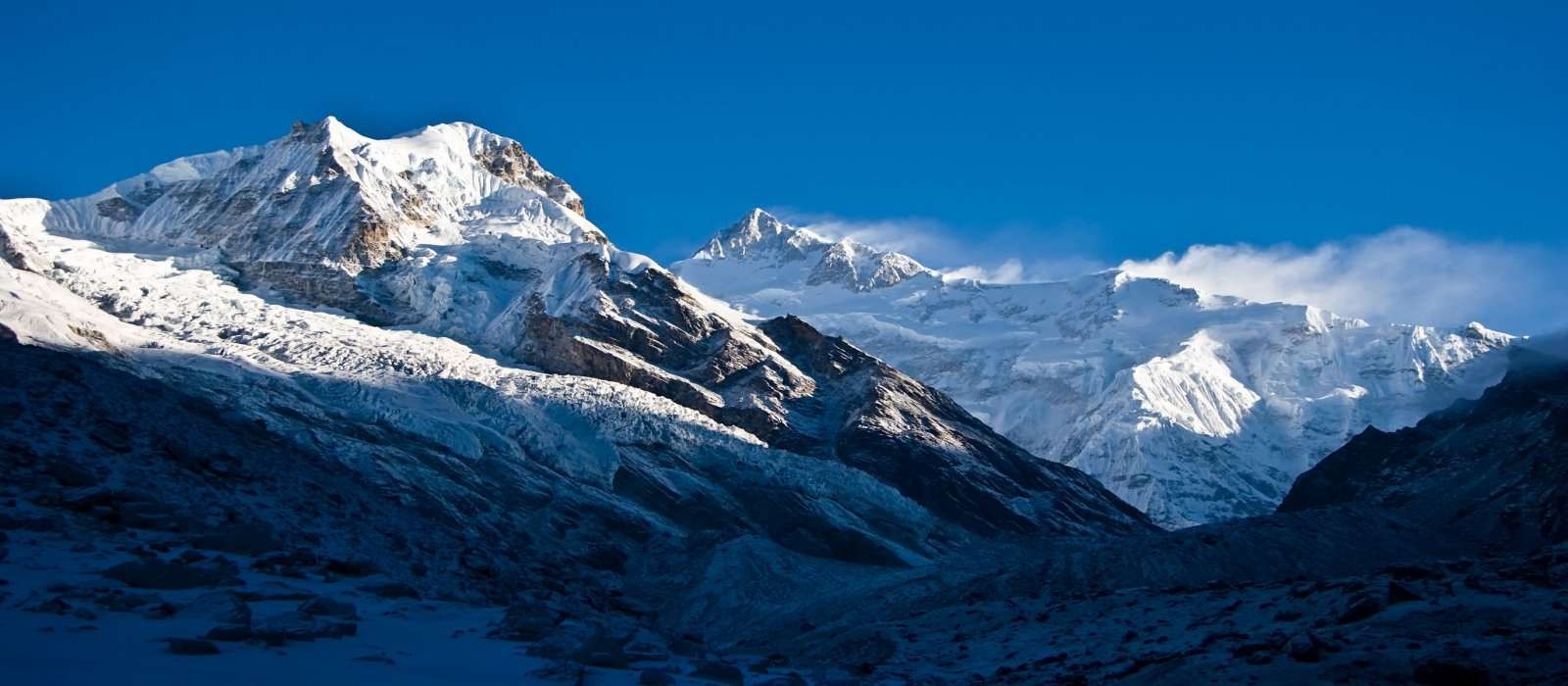
Kanchenjunga Base Camp Trek
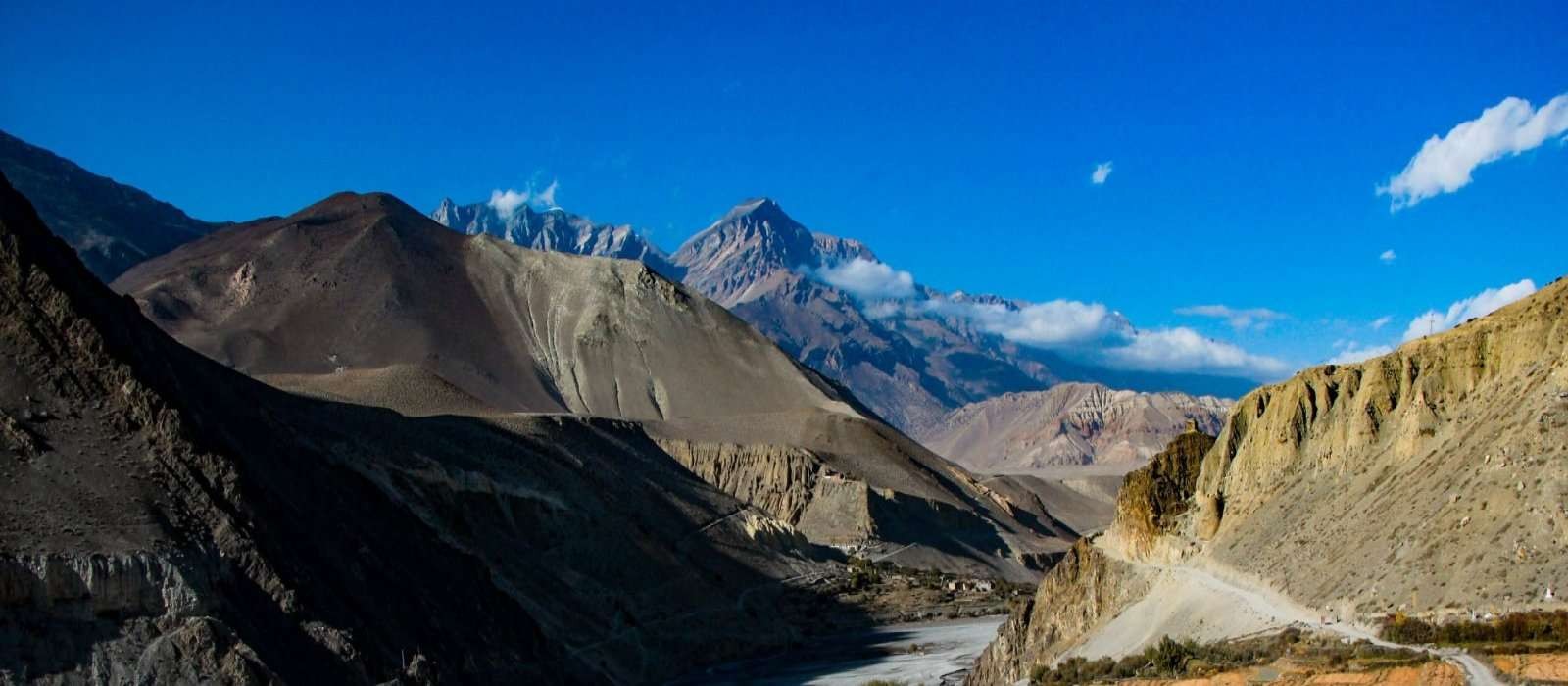
Jomsom Muktinath Trek
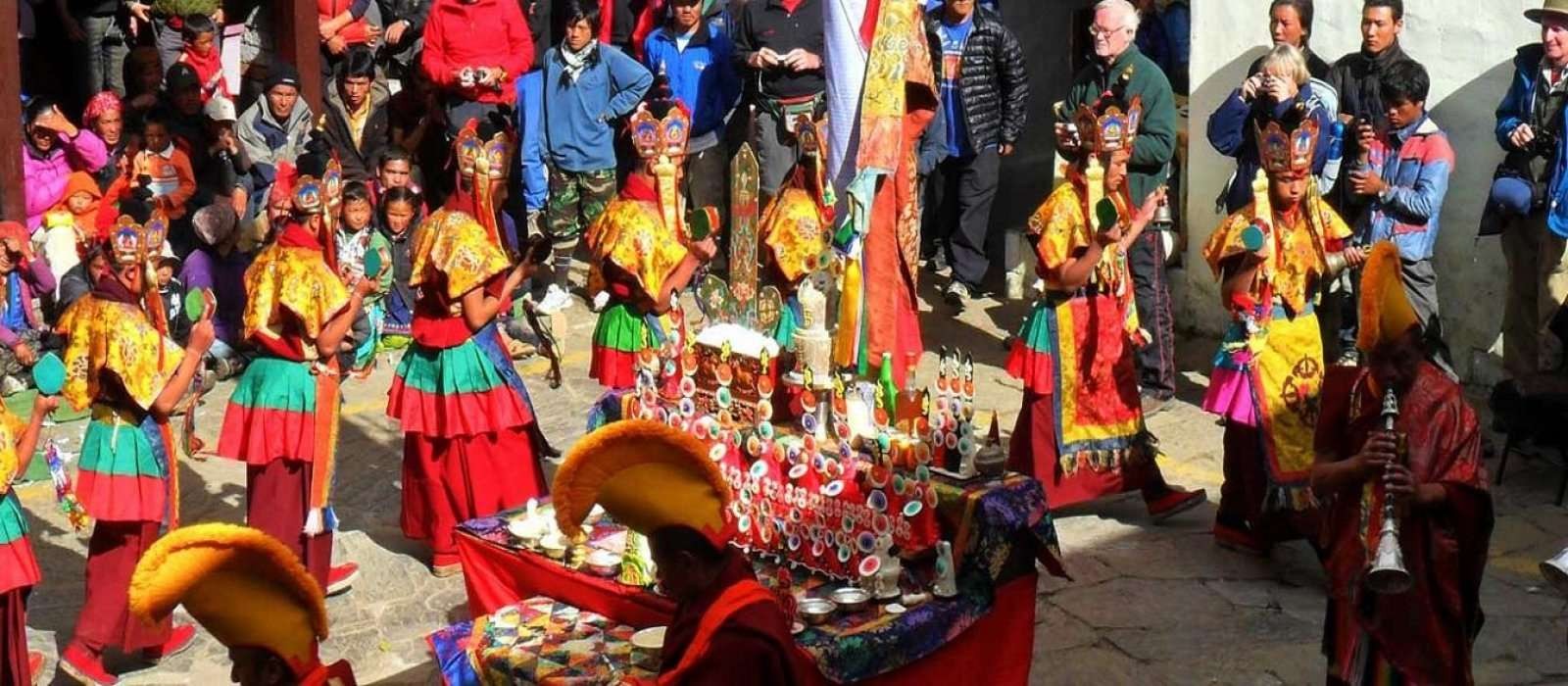
Everest Mani Rimdu Festival Trek
We are associate and certified.

- Partnership With Us
- Company Documents
- Travel Information
- Best Price Guarantee
- Trekking Gear List
- Terms & Conditions
- Privacy Policy
Get In Touch
- [email protected]
- +977 98510 16865 (WhatsApp, viber, wechat Available)
- +977 98510 67202
We are a leading tour operator in Nepal. We guarantee the lowest price on Nepal Tour Packages, Kathmandu Pokhara Chitwan Tour, and Trekking in Nepal. Nepal Tour and Trekking Service specialize in Cultural Nepal tour packages, Natural Beauty Packages, Pilgrimage tour in Nepal, Wildlife tour packages, Nepal Adventure tour packages, Budget Nepal Tour Packages, Trekking in Nepal, Everest Base Camp Trek, Around Annapurna trek, Annapurna Base Camp trek. Explore Nepal and Himalayan people with the best services with local experts with more than 24 years of experience in the tourism sector.
© Copyright 2024, Nepal Tour and Trekking Service | All Rights Reserved.
- Why Trek With Us
- Legal Documents
- Terms & Condition

Viber/Whats App
Enjoy your trip, makalu base camp trek.
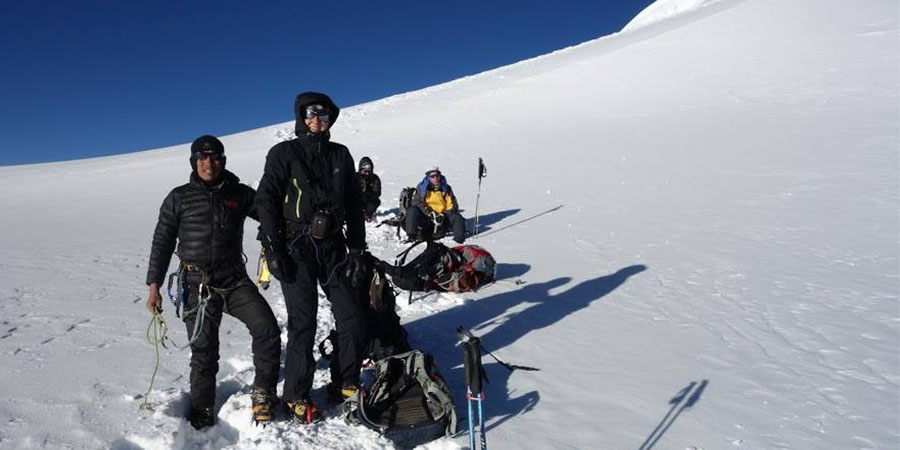
Makalu (8,465m) is the fifth-highest mountain in the world located close to the Everest region in the central part of Nepal. The Makalu base camp trek is an adventurous trek that offers a large diversity of the ecosystem, mountain vistas, pristine nature as well as unspoiled ethnic culture. Makalu base camp trek is the off-the-beaten trek that is less visited by the mass trekkers. The trekking trail of the Makalu base camp trek is utterly marvelous, still untouched, and irregular. This trekking region is protected by the Makalu Barun national park. On this trek, you can observe the superb panoramic view of the mountains like Everest- the highest in the world, Makalu, Lhotse, Kutumsang, Baruntse, etc. which are regal and fantastic. This region offers a pristine ecosystem and biodiversity. While trekking you visit different villages of different ethnicities which provides you the chance to get insight into their lifestyle, culture, religion, etc.
The remote adventurous Makalu base camp trek begins with the scenic flight from Kathmandu to Tumlingtar airstrip. In this trek, you walk through the Arun River valley traversing the quaint villages of Rai, Limbu, and Sherpa like Seduwa and Num, and Makalu Barun national park with views of the mountains and river valleys. Arun valley- the deepest valley in the world is the main attraction of the Makalu base camp trek. Arun valley is famous for the wide range of bird species where you can see more than 600 species of birds including the rare spiny babbler which is found only in Nepal. During the Makalu base camp trek, you can explore various types of flora and fauna and encounter the endangered Clouded Leopard, Red Panda, Musk Deer, etc. in this trek you cross the Shipton Col to the south side of Mt. Makalu. The best season to go for the Makalu base camp trek is autumn and spring when the weather is clear and you can have a clear view of the mountains as well as the natural scenery.
- Trek through verdant rhododendron forests, river gorges, sheer granite cliffs capped by hanging glaciers, spectacular waterfalls, high-altitude lakes, Himalayan landscapes, and Sherpa and Rai villages
- Pristine ethnic culture, lifestyle of Sherpa, Rai, Limbu
- Stunning panoramic view of the mountains Everest, Makalu, Lhotse, Kutumsang, Baruntse, Chamlang
- Arun valley- the deepest valley in the world, 600 species of birds including the rare spiny babbler which is found only in Nepal
- Makalu Barun National Park, various flora and fauna and encounter the endangered Clouded Leopard, Red Panda, Musk Deer
Short Itinerary
Day 01: Arrival in Kathmandu, transfer to hotel Day 02: Fly to Tumlingtar (399m), drive to Num (1,519m) Day 03: Trek to Seduwa (1,500m) 6-7 hours Day 04: Trek to Tashigaun (2,100m) 4-5 hours Day 05: Trek to Khongma Danda (3,500m) 6-7 hours Day 06: Acclimatization day in Khongma Danda Day 07: Trek to Dobate (3,650m) via Shipton La (4,229m) 6-7 hours Day 08: Trek to Yangle Kharka (3,557m) 6-7 hours Day 09: Trek to Langmale Kharka (4,410m) 5-6 hours Day 10: Trek to Makalu Base Camp (4,870m) 4-5 hours Day 11: Explore Makalu Base Camp (4,870m) 3 hours Day 12: Trek to Yangle Kharka (3,600m) 6-7 hours Day 13: Trek to Dobate (3,650m) 6-7 hours Day 14: Trek to Khongma Danda (3,500m) 5-6 hours Day 15: Trek to Tashigaon (2,100m) 4-5 hours Day 16: Trek to Seduwa (1,500m) 4-5 hours Day 17: Trek to Num (1,519m) 5-6 hours Day 18: Drive to Tumlingtar, fly to Kathmandu Day 19: Final departure
- All land transportation as required for trip,airport pick up-drop.
- Hotel in Kathmandu as mentioned itinerary.
- Foods and accommodation(tented camp) during the trek.
- Local flight cost KTM-Tumlingtar-KTM.
- Well equipped trekking guide,Sherpa,Camping special
- cook and necessary porters.
- All kind of permits for trekking.
- Allowances for Nepali crews and their insurance.
- Emergency evacuation service in case....
- Personal trekking gears and expenses
- Foods in Kathmandu
- Emergency rescue fee if in case
- Tip to guide and porters
Detail Itinerary
Day 01: arrival in kathmandu, transfer to hotel.
Upon your arrival, you are greeted by our representative. The representative then guides you and transfers you to your hotel in a private vehicle. Rest and relax. Stay overnight at a hotel.
Day 02: Fly to Tumlingtar (399m), drive to Num (1,519m)
After breakfast, with a guide fly to Tumlingtar. Upon reaching there, meet with other crew members and head towards Num. Take a short drive to Num traversing Gurung villages. Have lunch, take a rest and prepare for the next day’s trek. Overnight stay.
Day 03: Trek to Seduwa (1,500m) 6-7 hours
Walk in the vicinity of Arun valley and Makalu Barun National Park which is rich in pristine ecosystem and biodiversity. Walk through the quiet trail passing some villages along the riverside. Traverse a bridge over the river. From there, climb uphill admiring the surrounding scenery, and reach Seduwa. Overnight stay.
Day 04: Trek to Tashigaun (2,100m) 4-5 hours
Walk in a stone-paved forested trail and pass through small villages. The natural beauty of this region is wonderful. The traditional culture of the locals is a bonus. Keep on climbing hundreds of stairs to finally reach Tashigaun. Overnight stay.
Day 05: Trek to Khongma Danda (3,500m) 6-7 hours
The steep trail is challenging to walk and simultaneously elevation keeps on increasing. Slowly ascend through a forested trail to maintain the pace and traverse a grazing land. Keep moving on stone stairs and ascend to the top. Then, a quick short descent to reach Khongma Danda. Overnight stay.
Day 06: Acclimatization day in Khongma Danda
The first acclimatization rest day is to adjust to the surrounding environment and prevent altitude sickness. So, the day is fully utilized by exploring surrounding places and walking short hikes to nearby places. Then, enjoy some local foods and interact with locals and learn about their lifestyle and culture. Overnight stay.
Day 07: Trek to Dobate (3,650m) via Shipton La (4,229m) 6-7 hours
The trek begins with an uphill climb to Shipton La which is at an elevation of 4229m. It may take a few hours so climb slowly and carefully. The views of Chamlang Peak, Peak 6, and Peak 7 are fantastic. Traverse Keke Pass and slowly descend to reach Dobate. Overnight stay.
Day 08: Trek to Yangle Kharka (3,557m) 6-7 hours
Walk on a forested trail surrounded by rhododendron trees and arrive at the bank of the Barun river. From there, walk on a steep trail and then slowly move further to reach Yangle Kharka. Overnight stay.
Day 09: Trek to Langmale Kharka (4,410m) 5-6 hours
Walk through the green forest, and rock fields, and traverse yak pastures on a flat trail. Ascend further traversing Merek in the vicinity of Himalayan views. Overnight stay.
Day 10: Trek to Makalu Base Camp (4,870m) 4-5 hours
The main day to reach the Makalu base Camp. So, begin the trek from Langmale Kharka passing Shersong, and make your way to the base camp. Walk carefully as the trail may consist of icy glaciers. In the vicinity, relish the views of snow-capped mountains including Mt. Makalu. Overnight stay in a tent.
Day 11: Explore Makalu Base Camp (4,870m) 3 hours
Witness the stunning views of Makalu, Everest, Lhotse, and other surrounding peaks from the base camp. Visit the nearby glacial lakes, Barun Glacier, and spend some time exploring the places. Create some memories and take some pictures. The remaining time utilize to acclimatize and take proper rest. Overnight stay in a tent.
Day 12: Trek to Yangle Kharka (3,600m) 6-7 hours
After exploring the Makalu base Camp, descend to Yangle Kharka. Pass through Shershong, and Langmale Kharka, and keep on walking downhill to arrive at Yangle Kharka. Overnight stay.
Day 13: Trek to Dobate (3,650m) 6-7 hours
Walk downhill traversing the green forest, Barun river bank, adoring the greenery around. Keep on descending and reach Dobate. Overnight stay.
Day 14: Trek to Khongma Danda (3,500m) 5-6 hours
Ascend from Dobate to Nambuk and walk on a forested trail surrounded by rhododendron and fir trees. Traverse Shipton Pass and slowly descend to Khongma Danda. Overnight stay.
Day 15: Trek to Tashigaun (2,100m) 4-5 hours
An easy but long trek to Tashigaun. Walk on a steep descent passing through the dense forest and reach the beautiful Sherpa village of Tashigaun. Overnight stay.
Day 16: Trek to Seduwa (1,500m) 4-5 hours
Traverse through the Makalu Barun National Park and walk downhill to the Barun river. Then, traverse some villages and keep descending until you reach Seduwa. Overnight stay.
Day 17: Trek to Num (1,519m) 5-6 hours
Walk through the verdant forest and ascend for a few hours. Then, descend through a forested trail and pass Sherpa villages. Arrive at Num for an overnight stay.
Day 18: Drive to Tumlingtar, fly to Kathmandu
From Num, drive back to Tumlingtar. Upon reaching Tumlingtar airport, fly to Kathmandu. After reaching Kathmandu, transfer to the hotel for an overnight stay.
Day 19: Final departure
Makalu Base Camp trek comes to an end. We hope you had great fun and collect some sweet memories from the trek. Our representative transfer you to the airport for the final departure.
Travel Info
Accommodation
Accommodation in the Makalu Base Camp is mostly teahouses or lodges operated by locals. They are comfortable and simple with basic facilities. Extra facilities like hot showers, Wi-Fi, charging of electronic devices, and laundries are available by paying additional charges in the lower regions. Room sharing is common during the peak seasons and at high altitudes. So, prepared for it. Washrooms are mostly outside the teahouse or lodge. Tent camps as a means of accommodation in the Makalu Base Camp.
We provide only breakfast in Kathmandu and 3 meals (breakfast, lunch, dinner) a day are provided during the entire trek. Meals are provided from the teahouses or lodges which is simple but organic and healthy. Nepali Dal Bhat is a chief dish with fresh green vegetable curry. Besides, noodles, soup, bread, roti, Sherpa stew, and hot drinks are also available. A meal is arranged at the base camp and no need to worry.
Drinking Water
Drinking water in the Himalayas is pure and fresh. One can directly drink the natural freshwater stream from the Himalayas. Fill the water from taps or fill up the boiled water in a water bottle in the teahouses paying an extra charge. Always carry water purifying solutions for proper water treatment and to be safe. Drink plenty of water and keep yourself hydrated to prevent altitude sickness.
Internet connectivity & Mobile Network
The internet connectivity and mobile network are there only till Tashigaun. From there onward, it is hard to find or has no network at all. The electricity mostly runs from the solar in this region. So, in many places, it may be difficult to get electricity for charging electronic devices. So, carry a power bank and use fewer electronic gadgets. For emergencies, a satellite phone is there.
Makalu Base Camp Trek Starting Point
Makalu Base Camp Trek starts from Num and ends in Tumlingtar. " Num-Seduwa-Tashigaun-Khongma Danda-Dobate-Yangle Kharka-Langmale Kharka-Makalu Base Camp- Yangle Kharka - Dobate - Khongma Danda- Tashigaun- Seduwa- Num-Tumlingtar "
Required Permits
Makalu Rural Municipality permit: NPR 2000 per person Makalu-Barun National Park: NPR 3000 (Foreigners), NPR 1500 (SAARC)
Travel Insurance
Travel Insurance is quintessential when the region is unknown. In the case of trekking in Nepal, travel insurance is compulsory. It must cover all emergency evacuation, medical extremities, luggage loss/theft, flight cancellations, altitude above 4000m, etc. Thus, arrange travel insurance from a reputed agency that covers all essential facilities.
Safety and our guides
We assure you 100% when it comes to safety. Our client’s safety is our main concern. Our guides are certified and well-trained with years of expertise in this field. They are technically competent and have excelled in safety performance. They always carry essential safety equipment, gear, and first-aid kits. For the safety of our trekkers/climbers, the itinerary is properly scheduled and acclimatization rest days are properly set up to adjust to the high altitude and prevent altitude sickness. If any queries, feel free to share them with our guides. We are always there for your services.
Best time for Makalu Base Camp Trek
Makalu Base Camp Trek is challenging and physically demanding. Hence, it is best to trek in the peak seasons for safety and enjoy the spectacular views. Spring and Autumn seasons are the best time for Makalu Base Camp Trek. Winter and Rainy seasons are riskier due to unpredictable weather conditions, heavy rainfall, and snowfalls. Also, unavailability of accommodation during these seasons as most people come to the lower regions during these seasons. Overall, the spring season is best followed by the autumn season.
Makalu Base Camp Trek Difficulty
Makalu Base Camp Trek is truly demanding but exciting at the same moment. The trek is slightly tough due to off-beat paths, more rough trails, and longer routes. With the proper assistance and guidance of experts in mountaineering, it is achievable. When it comes to Makalu Base Camp Trek, experience in trekking at high altitudes is a plus point. Besides this, trekkers must be in good health, and physically, & mentally fit as it is physically demanding. So, we recommend you participate in exercises, and physical training months before starting the trek. Also, take necessary health tests before trekking to high altitudes. You can completely trust our assistance and guidelines throughout peak climbing.
Altitude Sickness & Acclimatization
Altitude sickness is common in mountains above the altitude of 3000m. The trek starts from Num (1,519m) and the altitude rises to the Makalu Base Camp (4,870m) during the trek. Khongma Danda and Makalu Base Camp are acclimatization resting places to adjust to the altitude and prevent altitude sickness.
Symptoms of Altitude Sickness
Primary : Headache, nausea, gasping, appetite & sleep loss, dizziness, fatigue, vomiting Extreme : primary symptoms and hallucinations & unconsciousness
Preventive Guidelines
- Immediately inform the guide
- Warm-up, and body stretch before the trekking journey
- Drink water and Hydrate yourself at regular intervals
- Frequent urination throughout the journey
- Ascend slowly and gradually
- Take plenty of rest and sleep
- Avoid salty foods, alcohol, and smoking
- Descend immediately when it’s difficult/uneasy
- Take medicine consulting a guide
Shoes: Trekking shoes, base camp shoes, crampon-compatible boots, Rubber sandals Clothes: Windcheater jacket, Thermals, Down Jacket, Base Layers, Fleece, Long sleeve shirts, Gloves, Towels, Inner garments, Trekking pants, Trousers, Shorts, Socks Accessories: Sunglasses, Ski Goggles, Hats/Caps, Beanie, Sunscreen, Lip Balm, Head Lamp, Pocket Knife, Trekking Poles, Personal Hygiene &Toiletries Sleeping: Warm Sleeping bag Travel Bag: Duffel bag, a day pack, pack cover Medicine Kit: Wash Kit, First-Aid Kit, Blister Repair Kit, Medicines for preventing Altitude sickness, Prescribed Medicines (Personal use) Extras: Heat/Leak proof water bottles, Water Purifying solution (Iodine based), Water filters, Insulated cup/flask, Map, Binoculars, Travel Documents, Sewing kit, Cash, Extra batteries, Power bank, Pen, Diary, Book, Reusable (spoon, cup, plate), Reusable bags, Large Waterproof Disposable Bags, Snacks (Choco-bars, Mints, Nuts, Granola Bars)
Note: Customize and rent the above list as a necessity.
Add your Review
Similar packages, amphu lapcha pass trekking, round dhaulagiri trek, kanchenjunga circuit trek, upper dolpo trek, gokyo lake to ebc via cho la pass trek, trip at a glance.
- +9779851276377
- 977 01 5348594
- [email protected]
- Follow us on:
Makalu Base Camp Trek
Makalu view from base camp, shipton la pass, you can also, things to know before trip, trip introduction.
Join the Makalu Base Camp Trek to be a part of an exclusive trekking opportunity and embark on a journey to the base of the world’s fifth-highest peak known for its outstanding diversity of flora and fauna. Open to the outside world after the trek by Eric Shipton crossing what became known as Shipton La pass , this trek helps you observe the lifestyle of a cross-section of people besides traversing through high altitude terrains, snow-clad landscapes, a steamy forest of low altitude, glaciers and glacial lakes and an array of awe-inspiring Himalayan peaks.
Suitable mostly for the experienced Himalayan trekkers, Makalu Base Camp Trek challenges your adventurous spirit. The trek surprises you with Mount Everest’s Kangshung (east) face, views extending from Makalu to Kanchenjunga Peaks. It also takes you through pretty terraced farmlands of interesting villages. Makalu Base Camp Trek waits for you with the pristine and never-seen beauty of the Himalayan region.
Overview of Makalu Base Camp Trek
Makalu Base Camp Trek begins from the hill town of Tumglingtar and gradually leads into the heart of Makalu Peak. From the humid lowlands, the trek passes through diverse ecosystems and cultures. From the Rai community in the lower region to the Sherpa community at higher altitudes.
And the lush hills and twisting ridgelines before joining the Arun River again. And entering into Makalu Barun National Park, between Num and Seduwa villages. Continuing our trek through the villages of Tashigaon we enter the premise of Makalu Barun National Park to reach Unshisa village.
On the ascent over the ridge of Khongma Danda, we shall cross the famous Shipton La Pass and venture into the remote Barun River valley. Traversing through the rough terrain across the several summer settlements we shall reach the Makalu Base Camp.
Intermittently, we shall have beautiful views of the Himalayas including Everest, Lhotse, Kanchenjunga, Chamlang Peak, and several snowy mountains. As well as walk, through some of the last remaining areas of alpine meadows and pristine forests. While returning along the same trail, we shall return to the airport in Tumlingtar. And then take the flight back to Kathmandu to complete the trek.
Who can join this trek and how?
Makalu Base Camp Trek is a demanding trekking expedition requiring trekkers to walk around 6-8 hours on average on difficult terrains and have very good physical fitness with a regular exercising routine. Spring (March to May) and autumn (September to November) are the preferred seasons for this trip. You don’t need previous trekking experience but a positive attitude and endurance to complete this trek. Hence, join our professional team and a carefully planned itinerary to explore this isolated yet truly beautiful region in eastern Nepal.
If this itinerary doesn’t suit your requirement or if you want to customize it, please feel free to contact us. This trek could be customized as per your required time frame and budget limits.
- Day 1 Arrive at Kathmandu:
- Day 2 Kathmandu Sightseeing and trek preparation:
- Day 3 Fly from Kathmandu to Tumlingtar (518m/1,700ft) then drive to Num (1,560m/5,119ft) : 50 mins flight, 4-5 hours drive::
- Day 4 Num to Seduwa (1,500m/4,922 ft): 6-7 hours::
- Day 5 Seduwa to Tashigaon (2,100m/6,890ft): 4-5 hours::
- Day 6 Tashigaon to Khongma Danda (3,500m/11,483 ft): 6-7 hours::
- Day 7 Acclimatization day at Khongma::
- Day 8 Khongma to Mumbuk (3,570 m/11,712 ft)::
- Day 9 Mumbuk to Tonhe Kharka::
- Day 10 Tonhe Kharka to Sherson::
- Day 11 Sherson to Makalu Base Camp (4,870m/15,978ft): 6-7 hours::
- Day 12 Day Hike to Makalu Advanced Base Camp::
- Day 13 Makalu Base Camp to Mumbuk (3,570 m/11,712 ft)::
- Day 14 Mumbuk to Khongma la (3,500m/11,483 ft)::
- Day 15 Khongma la to Seduwa(1,500m/4,922 ft): 5-6 hrs::
- Day 16 Seduwa to Chichila (1,980m/6,497ft): 5-6 hrs::
- Day 17 Chichila to Tumlingtar (518m/1,700ft): 3-4 hrs::
- Day 18 Flight Tumlingtar to Kathmandu.::
- Day 19 Relax and Souvenir Shopping::
- Day 20 Departure Day::
Detail Itinerary
Day 1 : Arrive at Kathmandu::
Be welcomed by our representative at the airport and meet the group at the hotel in Kathmandu. Transfers from Tribhuvan International Airport in Kathmandu are available to you. Depending upon your time of arrival, you may have time to explore the immediate surroundings and get acclimatized to this bustling city. Stay overnight in Kathmandu.
Day 2 : Kathmandu Sightseeing and trek preparation::
Head on to the ancient heritages of Kathmandu and have insightful sightseeing today. We may start from the nearby Kathmandu Durbar Square, an ancient royal residence with a historical palace, unique temples including the residence of Living Goddess Kumari , resting places, and intricate carvings on the monuments. We shall also pay a visit to the ancient pilgrimage of Swayambhunath Stupa or the Monkey Temple with a beautiful whitewashed main stupa, brightly colored prayer bells, some Hindu temples, and a pleasant view of Kathmandu valley. Boudhanath Stupa is another ancient heritage that boasts of being one of the largest stupas in the world and is considered a haven of Tibetan Buddhism. Pashupatinath Temple, a Hindu sacred place, at the bank of the holy Bagmati River is another prominent heritage in Nepal. Your trekking guide will give you information on the treks about the days ahead. You may clarify your doubts in this regard. Stay overnight in Kathmandu.
Day 3 : Fly from Kathmandu to Tumlingtar (518m/1,700ft) then drive to Num (1,560m/5,119ft) : 50 mins flight, 4-5 hours drive:::
To begin with the adventure in eastern Nepal, we shall begin the day with an early morning drive to the Domestic Airport and take on a flight to the hill town of Tumlingtar, perched on a broad plateau to the east of Arun River, along the chain of Himalayas. There we shall enjoy our breakfast and introduce ourselves to our local porters. From this village, which provides a view of Makalu and Chamlang Peaks in clear weather, we shall set off on a drive to the trailhead of Chichila where we will have our lunch and get to know about the local indigenous people. On a rough road and through the landscape with the terraced fields, we drive towards Num enjoying the beautiful sceneries of terraced fields, rivers, and mountains. Num is a spectacularly placed village from where we have a tantalizing view of the Arun River and Sedua village. Stay overnight in Num.
Day 4 : Num to Seduwa (1,500m/4,922 ft): 6-7 hours:::
The settlement we saw Num village shall become the destination, albeit the view seemed pretty close yesterday. We shall have steep and terraced slopes from the Num village and continue along the trail to the Arun River for several hundred meters. Before crossing the Arun River over a suspension bridge, we shall traverse through the densely forested and slippery sections in our initial section of today’s trek. Following the crossing over this impressive glacial river, our uphill climb begins. Through the twisting trails, we reach the village of Runruma, and ahead through the steep trail, we finally settle Seduwa. This village provides a marvelous view of cascading hills covered with green and lush forests. Stay overnight in Seduwa.
Day 5 : Seduwa to Tashigaon (2,100m/6,890ft): 4-5 hours:::
We shall begin our trek with the checking up of our permits at the entry checkpoint in this village and then ascend through the rhododendron and bamboo forest to move out of the valley. Navigate the ways through terraced fields to settle Manigaon. Here onwards, we shall trek through the forest, beautiful farmlands and school to reach the Tashigaon village, the last village in our walk into Makalu Base Camp or before Chhukung in the Everest region. We settle for today in this village, i.e. have an overnight stay in Tashigaon village.
Day 6 : Tashigaon to Khongma Danda (3,500m/11,483 ft): 6-7 hours:::
Today we have a long trekking day before we hike across the challenging pass of Shipton La. We shall begin our trek with the steep ascent through the dense forest with rhododendrons and oak trees. After trekking for some time the trail gradually starts to open up to the view of more rhododendron forest and we shall continue through to the small settlement at Chipla village. March ahead in the trail along the ridge to continue to the destination of Khongma Danda. This settlement has a few teahouse lodges with comfortable facilities even for a tented terrace. Stay overnight in Khongma Danda.
Day 7 : Acclimatization day at Khongma:::
This is a rest and acclimatization day of this trekking expedition before we climb to higher altitudes. We shall be crossing over the formidable Shipton La Pass (4,216m) tomorrow and for this today we shall hike to a higher altitude as well. The acclimatization mantra of climbing high and trekking low must be followed by every trekker and we are no exception. We shall thus be having a climb towards the Shipton La Pass on the Kongma Danda ridge for some time in the morning. The view of Kanchenjunga Peak from Kongma Ridge is beautiful. Stay overnight at Khongma.
Day 8 : Khongma to Mumbuk (3,570 m/11,712 ft):::
Today we shall have one of the most challenging trekking sections till today as we shall be crossing over the Shipton La Pass. After the acclimatization, our trekking for the day shall take us through a steep trail along the switchbacks and some of the most beautiful views of the Makalu, Chamlang, and Kanchenjunga mountains overlooking the trail. Through the stone staircase and rhododendron forest, we shall reach the base of Shipton La Pass. Hike in a steep trail to reach the top of the Pass, only to witness the breathtaking view of the Himalayas, cascading hills, and scenic landscapes with green lush forests. The rocky trail then takes us down to the Kalo Pokhari Lake. Further on the trail, we shall reach the Keke La ridge on a steep trail from where the previous ridge of Shipton La Pass seems a little below us. Trek down from this high ridge through the ridge with terraced and cascading hills as well as silver fir forest surrounding the trail and looked over by the Himalayas to reach the destination for today, the Mumbuk. Stay overnight in Mumbuk.
Day 9 : Mumbuk to Tonhe Kharka:::
Trekking deeper into the Arun valley, today we shall initially descend to the Barun River and all along the day, our trek shall be accompanied by this mighty and glacial river till we reach the destination of Tonhe Kharka. Traverse up along the trail, yet in an overall descent, to reach the summer settlement of Temanthang Kharka along the Barun River. Climbing up and down carefully and cautiously, we shall trek through several areas prone to landslides where we shall walk around huge boulders and have some sections with unclear trails. On both sides of the trail, we shall see big cliffs and a couple of prominent caves considered holy by the locals of the region. The trail, after a long slope, now starts opening to a valley after a gentle climb. We further continue through the view of alpine pastures with beautiful flowers dispersed with the spruce trees and rocky cliffs, and increasingly improving views of mountains such as Peak 6 we reach Tonhe Kharka. Stay overnight in Tonhe Kharka.
Day 10 : Tonhe Kharka to Sherson:::
In an increasingly strenuous trail, we shall today take a rest at the Sherson before our final ascent towards Makalu Base Camp . In today’s trekking, we shall trek through the densely forested area with strands of fir, bilberry, juniper, and rhododendron, across several small streams originating on the glaciers at a higher altitude and marveling at the close view of Peak 7, Chamlang Peak, Kongku Chuli Peak and some unnamed peaks, huge cliffs with caves, long waterfalls running down, and summer grazing areas before approaching Lenhmale Khaka. Further on, we have an alpine environment with shrubs, and prayer walls at Ramara though the forest with rhododendrons and juniper and berberis are found for some time initially. Further walking through the grassy plain we reach Sherson, the base camp area for Makalu Peak, with the view of Lower Barun Glacier, the upper part of Makalu’s south face, and other neighboring peaks. Stay overnight in Sherson.
Day 11 : Sherson to Makalu Base Camp (4,870m/15,978ft): 6-7 hours:::
Today we shall trek to the base of the Makalu Peak or the Makalu Base Camp slowly and gradually. In a trail surrounded by glaciers and filled with rocks, we shall continue climbing to the higher altitudes. Accompanied by the majestic Himalayas and icy glaciers we shall reach the Makalu Base Camp. Get soaked in the Himalayan panorama surrounding us and be relaxed at the camp. Enjoy the breathtakingly beautiful sunset over the Himalayas. Stay overnight in Makalu Base Camp.
Day 12 : Day Hike to Makalu Advanced Base Camp:::
Today we shall have a big day of our expedition and the ultimate adventure as we shall be hiking towards the Makalu Advanced Base Camp. Beginning from the base of the peak very early, long before the day breaks, we shall encounter glacier crossings and steep snowfields to hanging icefall to reach a plateau above the ice-fall. In this strenuous trek, you need a clear understanding of the alpine trekking techniques and mental endurance to overcome the odds. From the Makalu Advanced Base Camp , you shall closely witness the tallest Everest and other mountain peaks such as Lhotse, Nuptse, Cho Oyu, and several other peaks on the Nepalese and Tibetan sides besides glaciers. Capture the memorable moments in pictures and then descend gradually to the base camp. Stay overnight in Makalu Base Camp.
Day 13 : Makalu Base Camp to Mumbuk (3,570 m/11,712 ft):::
After reaching the pinnacle of our adventure, from today onwards we shall be returning to lower altitudes. We follow the same trail that we took on our way upwards. Look out for the scenery and view more carefully today as we might have missed many outstanding views because we were too busy to turn around while climbing. Accompanied by the Barun River, trek slowly and gradually to reach the settlement of Mumbuk. Stay overnight in Mumbuk.
Day 14 : Mumbuk to Khongma la (3,500m/11,483 ft):::
The return trek continues today as well as we descend to the Khongma La where the challenging Shipton La pass once again comes before us. Before this, we shall trek past the Kalo Pokhari Lake and cross over the Keke La. Further, we shall ascent to the challenging pass and trek down from the summit along the trail with stone steps after which we shall reach Khongma La continuing along the trail. The ascent and descent today shall be a bit easier for us because we are now used to higher altitudes, fitter than before, and also better acclimatized. We shall end today’s undulating trek at Khongma La. Overnight stay at Khongma La.
Day 15 : Khongma la to Seduwa(1,500m/4,922 ft): 5-6 hrs:::
The downhill trek in our trekking continues today as well where we shall be losing a greater altitude than the previous day. Through the cloud forest, frequent long and steep sections, paths marred by landslides, several lively settlements, and scenic environment before a short hike to Murmidanda and a gradual descent to Seduwa, we shall complete our trekking for today. Stay overnight in Seduwa.
Day 16 : Seduwa to Chichila (1,980m/6,497ft): 5-6 hrs:::
We leave Seduwa village and reach the other side of the mighty Arun River after we exit the Makalu Barun National Park . After crossing over the mighty river, we traverse to the villages of Num and Mudhe. Trekking along the hillsides, traversing across several villages and settlements, and exploring the dense forests and the views of the Himalayas including the glorious Makalu Peak, we complete our trek for today to reach Chichila village. Stay overnight in Chichila.
Day 17 : Chichila to Tumlingtar (518m/1,700ft): 3-4 hrs:::
In the final leg of our return trekking from the base of Makalu Peak, we continue ahead from the Chichila village with one last view of the majestic Makalu Peak. Trekking through the settlements at the foothills and on the hillside, terraced hills, and green lush landscape, and accompanied by the deluged Arun River, we shall reach the hill town of Tumlingtar. Prepare your bags and pack your equipment as we shall be leaving for Kathmandu tomorrow. Stay overnight in Tumlingtar.
Day 18 : Flight Tumlingtar to Kathmandu.:::
Flying along the humongous peaks and over the green and lush hills, we shall reach Kathmandu after a flight of around 50 minutes. You shall be transferred to the hotel where you can take a rest for the whole day, get in touch with your loved ones or go for some souvenir shopping later in the day. Pack your bags for the onward journey and later in the evening celebrate the successful adventure to the Makalu Base Camp with other team members. Stay overnight in Kathmandu.
Day 19 : Relax and Souvenir Shopping:::
After proper rest and relaxation, now it’s time for souvenir shopping and visiting the places near the hotel you stay in. Later in the evening, we will have a farewell dinner in a Nepali cultural restaurant and share our remarkable experience from our adventure-filled journey with the crew. Stay overnight in Kathmandu.
Day 20 : Departure Day:::
The adventurous journey of Makalu Base Camp Trek comes to an end today. In case you are not extending your stay in this Himalayan nation, our representative shall escort you to the international airport approximately 3 hours before your flight schedule. You shall have enough time to plan your next adventure in Nepal. For now, cherish the adventure in the Makalu region, one of the milestones of your life!
Price Includes
- Airport pick-up and drop service
- 4 nights Hotel in Kathmandu( Hotel Green Horizon or similar standard)
- Sanitation: The accommodation we provide will be neat and clean with warm hospitality and quality services.
- Single Accommodation: You won’t have to share your accommodation with anyone else so your privacy is protected.
- We provide hygienic and safe meals to re-energize you.
- We request you not to waste your meals for it is difficult to transport food in the rural area.
- You are not allowed to share your meals with anyone else from another group.
- Domestic Flight and Private Vehicle
- Local Staff: Our guides are locals of the region which ensures that you will surely get to explore a bit more during the trek than with any other guides.
- Experienced: With an experience of more than a decade of working in this field, our trekking guides possess excellent knowledge of briefing during the trek as well as they are experts in handling all kinds of critical situations which might occur during the trek.
- Insurance: Nepal Mountain Trekkers have an insurance policy for all our trekking staff.
- Local Staff: The porters we hire belong to the same region where we trek to provide employment opportunities to the locals as well as to make you explore every prospect of the region.
- Trekking permits: TIMS card and Makalu Barun National Park Permits
- Trekking gear like a sleeping bag and down jacket made available on rent
- 13% VAT and 10% service charge.
- First aid medical box.
- Farewell Dinner
Price Excludes
- Visa fee to enter Nepal ( Visa Information )
- International flight tickets and extra baggage charges
- Food in Kathmandu
- Extra night accommodation and meal costs in Kathmandu due to any change in the scheduled itinerary
- Travel insurance / Rescue operation costs
- All personal expenses
- Tip for guides and porters
Trip Gallery
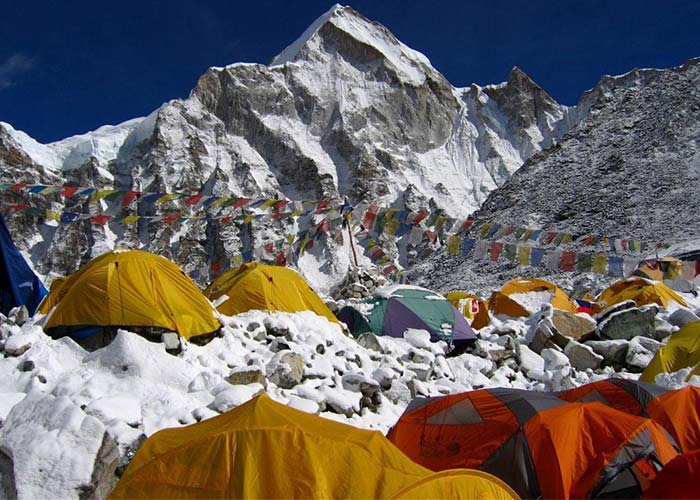
- Sun hat or scarf
- Light balaclava or warm fleece hat
- Suncreams(40+) and Lip Balms
- Cotton t-shirts and thermals
- Fleece jacket
- Waterproof jacket
- Down jacket
- Lightweight cotton pants (long)
- Waterproof pants
- Inner thermals
- Thin inner socks (3 pairs)
- Thick, warm wool hiking socks
- Comfortable hiking boots
- Shower sandals
- Gloves (Cotton and Waterproof)
Accessories
- Sleeping bag rated to -10°C +
- Trekking bag (Rucksack)
- Large plastic bags (for keeping items dry inside trek bag)
- Trekking poles (optional, recommended)
- Water bottle or camel bag
- Toiletries and Tissue Papers
First Aid Kits
- Personal Regular Medicines
- Blister Tape
Miscellaneous
- Medicines: We recommend you bring your regular medicines; we will provide a first aid kit from our side.
- Light-weighted Towel
- Swiss Knife
- Passport and extra passport photos
- Water Purifying Iodine Tablets, Drop or Sterilizer
Related Trips
You will also like …
- View Details
- Enquire Now
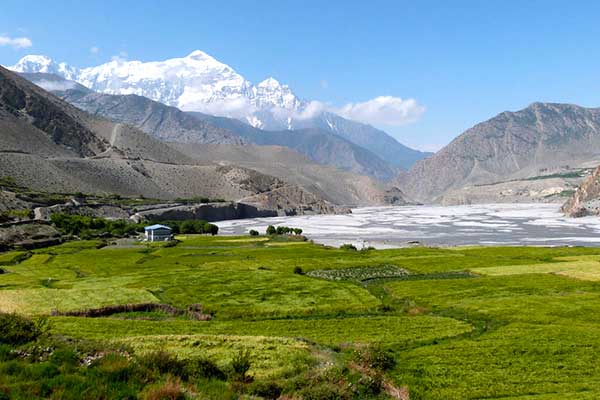
Arun Valley Trek
Lumba Sumba Pass
- Leisurely Plus
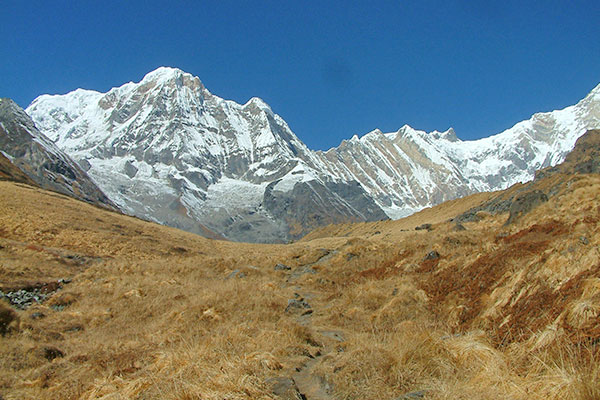
Annapurna Base Camp Trek
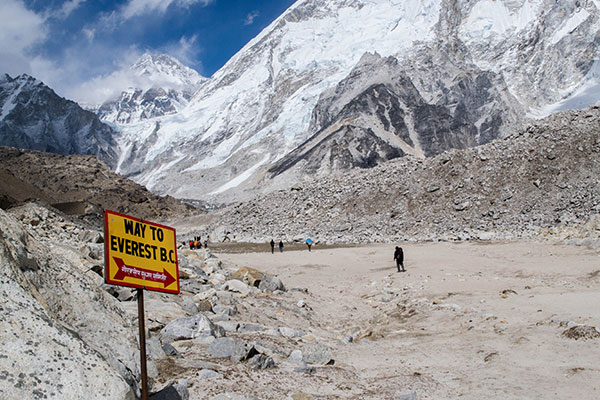
Everest Base Camp Trek
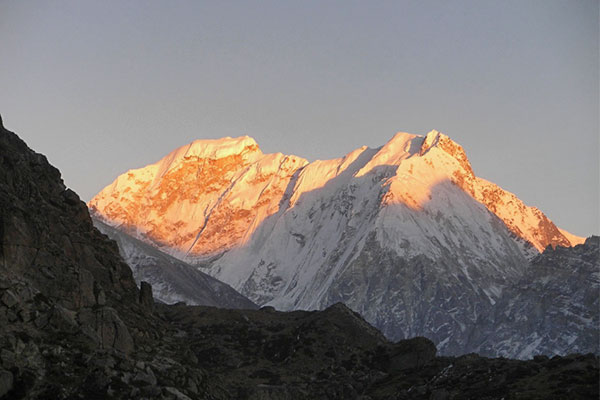
Kanchenjunga Trek
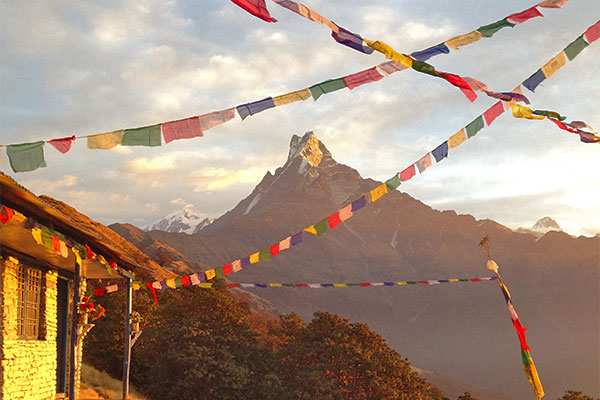
Mardi Himal Base Camp Trek
We are associated with.
SEND US A MESSAGE
Makalu Base Camp & Barun Valley Trek

Max Altitute
Makalu Base Camp 5000
Starts from
Trips Ends at
Makalu Base Camp & Barun Valley Trek Overview
Mt. Makalu is the world’s fifth highest peak and certainly a proud neighbor of Mt. Everest . The Makalu Barun National Park, established in 1992, is an absolute virgin land spread out over 1500 sq km in eastern Nepal.
Located in the Barun Valley, which stretches east from Solukhumbu National Park and passes through the high plateau of Tibet and deep sub-tropical gorge formed by Arun river.
This remote area is under an agreement between Nepal and China, therefore falls under the International Protected Area. It spreads over two districts, Solukhumbu and Sankhuwasabha.
Additionally, the Makalu Region is also well known for one of the most popular trekking peaks, the Mera Peak . (6,654 m). The region also provides amazing views of the majestic snow-capped Himalayan peaks including Mt. Makalu (8463m), Mt. Chamlang (7,319m) and Mt. Baruntse (7,129 m).
The Makalu Barun Valley is an epic of contrasting features where you find high waterfalls cascading into deep gorges. It is followed by weather-beaten rocks rising proudly from lush green forests and the carpet of colorful flowers beneath the snow-white peaks.
The Makalu Barun region has a rich biodiversity. Thus, it is home to a variety of exotic flowers like the rhododendrons and orchids. Similarly, you can also find an abundance of wildlife like the snow leopard, red panda, wild boar, musk deer, wild yak, himalayan thar, etc.
Furthermore, this region is a home for more than 420 species of avian life. Among the unique species, Spiny Babbler is the bird only found in Nepal.
The trek takes off after we reach Tumlingtar in mid-eastern Nepal. The Makalu Trek starts from Chichila, which is a 3 hours drive from Tumlingtar. We pass the beautiful Barun River Valley in the Makalu Barun National Park. This stretch of the trek will see us crossing some really high passes like the Shipton La, Keke La and also some beautiful lakes like the Kalopokhari and so on.
During this trek, you walk from the lowlands of Tumlingtar on the Arun River to one of the highest Base Camps the Makalu Base Camp at 5,000m above sea level. Autumn is considered to be the best season to do this trek.
Some Glimpse of this Amazing Trek:
- Trek to fifth Highest Mountain in the world – Makalu.
- Trek through Makalu Barun National Park and Conservation Area.
- Walk to one of the most remote and isolated areas of Nepal.
- Stunning view of Mt. Everest, Mt. Lhotse, Mt. Baruntse, Mt. Chamlang and Makalu.
- Explore the diverse flora, Fauna and geographic diversity comprising rare Snow Leopard, Musk Deer, Red Panda, Wild Boar, Himalayan Thar, and Wild Yak.
- Experience the warm hospitality of Sherpa, Limbu, and Rai.
- Guaranteed Satisfaction
- Transparent Price
- No hidden fees
- Experience of a More than two decade
- Personal Touch & Professional Service
US $2141.20
Note: This expense includes bank charge of 4.5%
Itinerary Detail
Day 1 arrival in kathmandu, day 2 kathmandu sightseeing & trek preparation, day 3 fly to tumlingtar & drive to chichili, day 4 trek to num, day 5 trek to sedua, day 6 trek to tashi gaon, day 7 trek to kauma, day 8 rest/spare day, day 9 trek to mumbuk, day 10 trek to nhe kharka, day 11 trek to sherson, day 12 trek to the final destination – the makalu base camp, day 13 explore makalu base camp, day 14 return journey to nhe kharka, day 15 trek to mumbuk, day 16 trek to kauma, day 17 trek to tashi gaon, day 18 trek to balung, day 19 trek to pukuwa, day 20 trek to bumling, day 21 trek to tumlingtar, day 22 scenic flight to kathmandu, day final departure.

What is Included / Not Included
- Airport Pick-up and Drop
- Transportation as per itinerary
- Guide, Driver, and Porter
- Meals (Breakfast, Lunch, and Dinner with Tea)
- Accommodation
- First-Aid Kit
- Welcome/Farewell Dinner

Upper Mustang Trek, Itinerary, Cost, Permit and Guide

Kanchenjunga Expedition

Kanchenjunga South Base Camp Trek

Kanchenjunga Circuit Trek- Cost, Map, Itinerary

Upper Dolpo to Mustang Trek

Lower Dolpo Trek
Quick navigation.
- Multicountry Treks and Tours
- Nepal Budgets Tours
- Nepal Motorbike Tours
- Adventure Bike Tours
- Day Hikes in Kathmandu
- Cultural and Religious Tours
- Photography Tours
- Peak Climbing in Nepal
- Legal Documents
- Terms and Conditions
- Privacy Policy
- Gears List for Trekking and Climbing
Associated with:
Payment methods possible, contact information.
Mr Raj Dhamala
+977 98510 42334
[email protected]
Thamel-26, Kathmandu, Nepal
Mr Sadeep Dhungana
+614 516 05387
4/8 Florence StCoburg, 3058, Melbourne, VIC Australia

- Everest Region Trek
- Annapurna Region Trek
- Manaslu Region Trek
- Mustang Region Trek
- Langtang Region Trek
- Makalu Region Trek
- Dolpo Region Trek
- Kanchenjunga Region Trek
- Best Selling Treks
- Nepal Trekking
- Luxury Treks in Nepal
- Challenging Treks in Nepal
- Family Treks in Nepal
- Peak Climbing
- Mountain Climbing in Nepal
- Nepal Tour Packages
- Luxury Tours in Nepal
- Helicopter Tours
- Nepal Family Tours
- Bhutan Tour
- Kailash Tour
- Pokhara Day Tour
- Kathmandu Day Tours
- Jungle Safari in Nepal
- Nepal Visa Information
- Packing List for Trekking
- Bhutan Visa
- Fitness Training
- 10 Comprehensive Nepal Trekking Tips
- Flight Cancellation
- Travel Insurance
- The Differences
- Terms & Conditions
Tell us about your adventure
You're interested in
Makalu Base Camp Trek

Trip Duration 20 Days

Max, Altitude 5200

Type Trekking

Best Season Sept - May

Meals Included

Accommodation Guest House

Activity Trekking

Difficulty Strenuous
- Capture Mount Everest from a unique angle, it’s eastern Kangshung face
- See the views of eastern Nepal, as far away as Kangchenjunga
- Pass from green terraced farmland to glaciers and waterfalls
- Experience the rural life of Nepal’s distinct Rai and Sherpa culture
- Spot some of the rarest wildlife in Nepal, including the Red Panda
The Makalu Base Camp Trek commences in Tumlingtar. It is a beautiful place in eastern Nepal. You will get to explore amazing landscapes, like dense forests with colorful rhododendron flowers. This is going to look beautiful along the way.
The charming villages where the Gurung people live will make you understand life in the remote places in Nepal. Also, the winding river valleys and the stunning Makalu Barun National Park will be the highlights.
As you go higher up the mountains, you will see some incredible views of the Himalayas. The crystal-clear lakes up in the hills will melt your heart. And some of the challenging paths that take you to the rocky base camp of Makalu will be a real challenge.
Best Time for the Makalu Base Camp Trek:
The Makalu Base Camp Trek is most enjoyable during two seasons: one is spring (March to May), and the other is autumn (September to November).
You will be surrounded by colorful rhododendron flowers and lush green landscapes during the spring. While autumn brings clear skies and breathtaking Himalayan views, These times of year offer the ideal weather for an unforgettable and easy-to-go trekking adventure.
How Difficult is the Makalu Base Camp Trek:
The Makalu Base Camp Trek in Nepal presents a challenging yet immensely rewarding journey for trekkers. Understanding the difficulty and fitness requirements is crucial for a successful expedition.
Trek Difficulty:
- Terrain: The trail involves diverse landscapes, from lush forests to high-altitude alpine zones. Trekkers encounter steep ascents, rocky paths, and occasional moraines.
- Altitude: The trek reaches high elevations, with the Makalu Base Camp situated at around 5,000 meters (16,404 feet). Acclimatization days are essential to adapt to altitude changes and prevent altitude sickness.
- Weather: Conditions can be unpredictable, with temperatures fluctuating widely. Weather conditions may include snow, rain, and strong winds, especially at higher altitudes.
Fitness Requirements:
- Physical Fitness: A good level of physical fitness is necessary. Regular cardiovascular exercises like hiking, running, or cycling help prepare for long days of trekking.
- Strength and Endurance: The trek demands strength and endurance to walk for several hours each day, often on challenging terrain. Building leg muscles and core strength is beneficial.
- Altitude Adaptation: Acclimatization is crucial to minimize the risk of altitude-related problems. Slow and steady pacing allows the body to adjust gradually to higher altitudes.
- Mental Preparedness: Trekking at high altitudes can be mentally taxing. Being mentally prepared for the challenges, including long hours of walking and potential weather changes, is vital.
Preparation and Planning for Makalu Base Camp Trek in Nepal
Preparing for the Makalu Base Camp Trek involves several key aspects to ensure a safe and enjoyable experience in the Nepalese Himalayas.
Here’s a detailed guide on preparation and planning for this trek:
Physical Conditioning:
- Fitness Level: The trek to Makalu Base Camp is demanding and includes steep ascents and descents. Prioritize cardiovascular exercises, endurance training, and strength-building workouts to prepare.
- Hiking Practice: Familiarize yourself with trekking by undertaking shorter hikes with elevation gain. This helps condition your body for the demands of trekking at higher altitudes.
Acquiring Necessary Permits:
- Permit Requirements: Obtain the necessary permits, including the Makalu Barun National Park entry permit and the Trekkers’ Information Management System (TIMS) card. These are usually arranged through a licensed trekking agency in Nepal.
- Documentation: Ensure you have your passport, passport-sized photos, and any required forms filled out accurately for permit applications.
Gear and Equipment:
- Appropriate Clothing: Pack clothing suitable for varying weather conditions, including warm layers for high altitudes and waterproof gear for potential rain or snow.
- Footwear: Invest in sturdy, well-fitted trekking boots with ankle support and proper traction for rocky and uneven terrain.
- Trekking Gear: Carry a comfortable backpack, sleeping bag suitable for low temperatures, trekking poles for support, a headlamp, and a water purification system.
Accommodation and Food:
- Lodging Options: Research and pre-book accommodations in teahouses or guesthouses along the trekking route. These options provide basic amenities like meals and shelter.
- Food Supplies: While teahouses provide meals, carry energy bars, snacks, and electrolyte supplements for additional sustenance during the trek.
Altitude Acclimatization:
- Gradual Ascent: Plan the itinerary with gradual altitude gain to allow your body to acclimatize effectively. Adequate acclimatization prevents altitude sickness.
- Hydration and Rest: Drink plenty of water to stay hydrated and factor in rest days for acclimatization during the trek.
Hiring Guides and Porters:
- Local Guides: Consider hiring an experienced guide familiar with the region for navigation, cultural insights, and potential emergency situations.
- Porters: If necessary, arrange for porters to carry heavy equipment, allowing you to trek with a lighter load and reducing strain.
Insurance and Health Considerations:
- Travel Insurance: Purchase comprehensive travel insurance that covers medical emergencies, evacuation, and trip cancellations or interruptions.
- Health Precautions: Consult a healthcare professional for vaccinations, medications for altitude sickness, and general health advice before embarking on the trek.
Final Checks:
- Weather Forecast: Stay updated on the weather forecast for the trekking period to pack accordingly and anticipate potential weather challenges.
- Communication: Share your itinerary with friends or family and carry a charged mobile phone or satellite communication device for emergencies.
Effective preparation and planning significantly enhance the trekking experience, ensuring safety and enjoyment adventure.
Conclusion:
Joining the Makalu Base Camp Trek is more than just a trek; it’s a transformational adventure. It’s a chance to push your physical and mental limits and connect with nature and its breathtaking Himalayan scenery.
With over two decades of experience as Nepal’s top trekking company , we at Himalayan Trekking and Tours extend our warm invitation to you.
Itinerary of Makalu Base Camp Trek
Day 1: arrival in kathmandu.
Upon your arrival at Kathmandu’s international airport, our team will greet you there and assist with your hotel transfer. Our guide will provide all trek and Nepal stay details. In the evening, savor a Nepali dinner at a traditional restaurant to kickstart your Nepal adventure!
Day 2: Sightseeing tour in Kathmandu
Enjoy a half-day sightseeing tour in Kathmandu, exploring its rich historical and religious sites. Then, in the afternoon, prepare for your early morning flight to Tumlingtar, the starting point for your Makalu Base Camp trek.
Day 3: Fly to Tumlingtar 475 m (45 mins) drive to Num 1,485 m - 04 hrs.
Tumlingtar is a charming town by the Arun River. Transfer to a local vehicle and drive to Num via scenic farm villages, Khandbari, and Chinchela. Stay overnight in a local lodge with stunning views of Jalajala Himal and Makalu peaks.
Day 4: Trek to Seduwa 1,540 m- 05 hours.
Descend for an hour to cross Arun River bridge, then uphill to Seduwa village. Overnight camp in Seduwa.
Day 5: Trek to Tashi Gaon (2,135m) - 4 hours.
Today, we have a short trek from Seduwa to Tashigaon, a Sherpa farm village. It Is the last village before reaching Makalu Base Camp. We will walk through farmland and reach Tashigaon.
Day 6: Trek to Kongma Danda 3,556 m - 05 hours.
Leaving Tashi Gaon, we will trek through a dense forest, past cattle herder’s shelters. After a few hours, we will climb to the Kongma ridge. Our campsite offers views of Mt. Kanchenjunga, Mt. Makalu, and nearby peaks.
Day 7: Trek to Mumbuk 3,553 m - 06 hours.
We will walk through a wilderness ridge, visit Thulo Pokhari (large) and Sano Pokhari (small) glacial ponds. Then cross Tutu-la and Shipton la passes (over 4,453 m), and descend into a dense forest for our overnight camp at Mumbuk.
Day 8: Trek to Nehe Kharka 3,760 m - 05 hours.
Descend to the beautiful Barun valley, known for rare, almost extinct plants and medicinal herbs, as well as mountain animals.
Hike up gradually with stunning peak views on both sides of the valley. Pass Yak herder shelters and a small Buddhist Gompa before reaching our overnight camp at Nehe Kharka in the scenic Barun valley.
Day 9: Trek to Shersong 4, 572 m - 05 hours
Today, we will trek from Barun valley to Shersong, which is located at the end of the valley near Makalu Base Camp. The trail involves a gradual uphill walk, crossing streams, and offering stunning views of Mt. Makalu and Baruntse peaks.
Day 10: Free day in Sherson
After 7 days trekking, you will enjoy this relaxing day. As you prefer, you could stay at the basecamp to have a rest or explore the area to enjoy the view of Makalu Peak, the Kangshung face of Everest (part of Tibet) and Barun glacier. If you still have motivation you could walk an hour to find a large prairie that offer you a breath-taking views of the Himalaya.
Day 11: Trek to Makalu Base Camp 4,812 m - 04 hours
Hike from Sherson to Makalu Base Camp, passing through rocky terrain, moraines, and icy patches. The camp is near a glacial pond by Baruntse Himal.
Overnight stay beneath Mt. Makalu’s towering South Face, offering stunning views of the surrounding peaks.
Day 12: Trek to Yangle Kharka 3, 598 m - 06 hours
Start from Makalu base camp, backtrack toward the lower Barun valley, and arrive at Yangle Kharka.
Day 13: Trek to Mumbuk - 05 hours
Enjoy Barun valley, then hike to Mumbuk for camping.
Day 14: Trek to Kongma Danda / Ridge - 05 hours
In the morning, we will hike back along the scenic trail to Kongma Ridge. The trek begins with a one-hour climb through the forest. After leaving the tree line, we will pass glacial ponds and cross Tutu La and Shipton La before reaching Kongma Hill for our overnight camp.
Day 15: Trek to Nawa Gaon via Tashi Gaon - 05 hours
Today, we start our descent from the high-altitude trek with a morning walk through a forest of tall trees. We will reach Tashi Gaon and continue towards Nawa Gaon or Narbu Gaon. Our route takes us through shaded forests and farm terraces until we reach the large Sherpa village of Nawa Gaon, where we’ll stay overnight.
Day 16: Trek to Num via Seduwa - 05 hours
Our final day of trekking takes us to Num village via Seduwa. We start with a descent to cross the Arun River on a bridge, followed by a steep climb. This is our last night in the beautiful Makalu Himalaya region.
Day 17: Drive to Tumlingtar
In the morning, our adventure concludes with an exciting drive to the charming town of Tumlingtar, passing through scenic farm villages like Chinchila, Manebhanjyang, and the bustling town of Khandbari.
Day 18: Fly to Kathmandu and transfer to a hotel.
Enjoy stunning mountain views on your morning flight from Tumlingtar to Kathmandu. Once in Kathmandu, our staff will assist you in getting back to your hotel. You have the rest of the day to relax after your memorable Makalu Base Camp Trek.
Day 19: Final departure from Nepal.
Today marks your final day in Nepal. Our staff and guide will transfer you to Kathmandu airport after an unforgettable experience on the Makalu Base Camp Trek.
The above price is based on services we provide for this trek. The price is always negotiable if you have more number of groups. So Please contact us with detail.
Price includes
- Kathmandu Airport – Hotel – Airport Transfers by private vehicle
- Three meals a day (Breakfast, Lunch and Dinner) during the trek.
- Fresh fruit every evening after the dinner.
- Trekking Lodge (basic Tea House) accommodations throughout the trek.
- Makalu National Park permits & Trekkers Information Management System(TIMS) permit.
- Round trip flight fare Kathmandu-Tumlingtar-Kathmandu with including airport transfer.
- A highly experience, helpful, knowledgeable, friendly , English speaking well trained, Government License holder guide with all his salary, food, drinks, accommodation, transport and insurance.
- Strong, helpful porters with proper safety equipment and walking equipment his salary, foods, accommodation and insurance (one porter for two people).
- Arrangement of Emergency Helicopter service which will be paid by your Travel Insurance Company.
- Use of sleeping bag, down Jacket, Duffel bag and walking Poles (if you don’t have your own, To be return after trip completed).
- Government taxes and official expenses.
- Makalu base camp trekking map.
- Oxymeter to check your pulse and oxygen saturation and heart rate twice daily (Very useful to check Altitude Mountain Sickness(AMS) symptoms) Which will ensure you trek is in the safest hands possible for all levels of trekker.
- Assistant guide group size above 10+ person.
- Government Tax and Service Charge
Price Excludes
- Meals in Kathmandu Except Breakfast.
- Nepal entry visa fee $50 USD visa on arrival.
- Your Travel Rescue Insurance (compulsory).
- International airfare.
- Your personal expenses.
- All the alcoholic and non alcoholic drinks.
- Tips for the guide, porter and driver (Tipping is expected).
- Hot shower and battery charging on the tea houses.
- Excess baggage more than 20kgs for Tumlingtar flight.
Have any Questions? Check out FAQ'S
Frequently asked questions (faq), is previous trekking experience necessary for the makalu base camp trek.
While previous trekking experience is definitely beneficial, it’s not mandatory. However, a good level of fitness and stamina is essential to tackle the challenging terrain.
What is the accommodation like during the Makalu Base Camp Trek?
You will stay in teahouses and lodges along the trail, providing comfortable and authentic Himalayan experiences.
Are permits required for the Makalu Base Camp Trek?
Yes, you will need permits for the Makalu Barun National Park and Conservation Area. Our team will assist you in obtaining them.
How can I prepare for the high altitude on the Makalu Base Camp Trek?
Please do not worry. We got you covered, as we prioritize safety at a paramount level. Our experienced guides will help you acclimatize properly. It is essential to listen to their advice and stay hydrated.
What should I pack for the Makalu Base Camp Trek?
We provide a detailed packing list upon booking, but essentials include warm clothing, trekking boots, a good quality backpack, and a sleeping bag.
Select Date and Travelers
© 2024 - Himalayan Trekking and Tours (P) Ltd. All Rights Reserved.
- Fixed Departures

- Customize Your Trip
- [email protected]
- +1-7024271413 (USA)
- 24/7 support
- Trekking in Nepal
Makalu Base Camp Trek
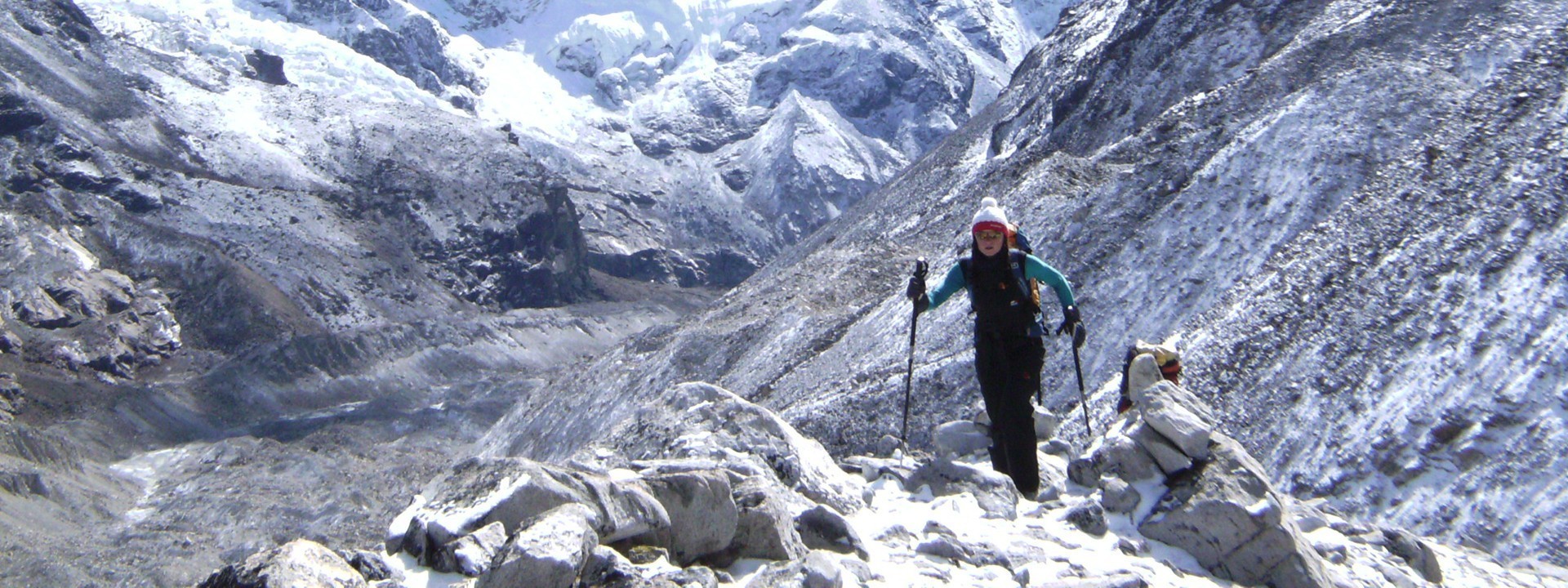
Like the trek to Kangchenjunga Base Camp , the trail to Makalu Base Camp is never crowded, although a true Himalayan gem, few undertake this demanding, but very rewarding trek.
min 2 people
Included (B,L, D)
Private Vehicle & Flight
Hotel & Guest House
4,870m / 15,978ft.
Mar-May / Sep-Dec
16 to 79 years old
5-6 hrs walk per day
Live Guide/Instructor
- --> Quick Enquiry -->
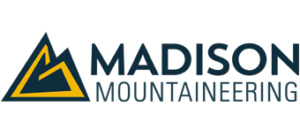
– Russia, Europe 5,205m / 17,077ft.

Russia, Europe
$ 12,500.00
Classic Cockin North Ridge Route
- Dates and Costs
- Why Madison Mountaineering?
Day 1 : Arrive Moscow and fly to Mineralnye Vody (“Min-Vody”) . After retrieving your bags and clearing customs at Moscow’s Sheremetyevo International Airport (SVO), transfer to your domestic flight to Mineralnye Vody (MRV). You will be meet at the Min-Vody airport by a Madison Mountaineering representative and transferred to the hotel. Overnight in Min-Vody hotel.
Day 2 : Travel to Bezengi Base. From Min-Vody, we travel by motorcoach to the town of Nalchik. In Nalchik, we transfer to 4WD vehicles for the last 20km (about 2½ hours) to Bezengi Base. Accommodation in a modern cottage, double rooms with private facilities.
The famous and very popular in Russia Bezengi mountain base, located in Central Caucasus in the upper part of the Bezengi valley, 18 km upstream of the Balkar village Bezengi in the most interesting mountaineering and historical district of Kabardino-Balkaria, was founded in 1959. Today – this is the only profile mountain base in the Caucasus with a high quality infrastructure and an extensive set of the services offered. Visiting Bezengi base would be interesting both to beginners and to the experienced mountain climbers as well – the potential of the region in which the Bezengi mountaineering base is located is very high – here, in this small geographic area of the Main Caucasian Ridge, are concentrated numerous interesting alpine routes to the summits of the most legendary and challenging peaks of Caucasus. Six of the eight Caucasian five-thousanders are located in the area of the Bezengi mountaineering base – Dykh-Tau (5203 m), Mijirghi (5025 m), Jangi Tau (5058 m), Shkhara (5068 m), Peak Pushkin (5100 m), Koshtan Tau (5152 m). In the Bezengi camp area, in a radius of 1-3 day walk, there are numerous simple and medium difficulty peaks and mountain passes, which can be climbed as useful training and acclimatization objects.
Day 3 : Begin Dykh-Tau climb – Russian Camp (3550m/11,647ft). In the morning, we sort and organize our gear and supplies. Then we make the 4 hour hike to the Russian Camp (3550m/11,647ft). Camping in tents.
Day 4 : VCSPS Camp (4750m/15,256ft). From Russian Camp, we make the 10-12 hour climb to the high camp, VCSPS Camp at 4750m/15,256ft. Camping in tents.
Day 5 : Dykh-Tau Summit Day. We make an alpine start for the 9-10 hour round trip to the summit of Dykh-Tau (5205m/17,077ft) returning to our VCSPS high camp to overnight.
Day 6 : Descend to Bezengi Base. We descend from VCSPS to Russian Camp and then continue on to Bezengi Base. Overnight in cottage.
Day 7 : Travel to Min-Vody. We travel by 4WD vehicles back to the town of Nalchik and continue on by motorcoach to Min-Vody (~4.5 hours total). Overnight in Min-Vody hotel.
Day 8 : Fly from Min-Vody to Moscow and Depart Russia. Fly from the Mineralnye Vody airport (MRV) to Moscow’s Sheremetyevo International Airport (SVO) and transfer to your international flight as we bid farewell to Russia and depart for home.
Days 9-12 : Contingency. Extra days to account for weather, travel, or other expedition delays.
- Postponed until further notice
Costs Include :
- Airport pick up and transfer to the hotel upon arrival in Mineralnye Vody, Russia
- All accommodations and transportation in-country during the program on regular itinerary
- All hut fees
- Park entrance fees
- Tents, ropes, and other group climbing equipment
- All expedition logistics including climbing permits
- All equipment necessary to make a strong and safe attempt for the summit
- All expedition staff including mountain guide and local support staff
- All breakfast and dinners while climbing (snacks not included)
Costs Do Not Include :
- Bank and wire transfer fees (if applicable)
- Russian tourist visa fees
- International air travel to and from Russia
- Russian domestic flights
- Food or dining outside of the climbing period
- Alcoholic beverages
- Bottled or canned beverages
- Specialty coffee or espresso drinks
- Personal clothing and equipment
- Personal travel insurance, trip cancellation insurance and medical or security evacuation insurance
- Any rescue costs or costs of early departure from the expedition
- Costs from arriving early or leaving late
- Any costs due to flight delays/cancellations
- Personal excess baggage costs
- Customary gratuities to local expedition staff, porters and guides
- Personal climbing equipment (see equipment list)
- Incidental expenses such as tips, telephone, bar, laundry, or other personal expenses
- Force majeure / costs for delays that are beyond the control of Madison Mountaineering LLC and the expedition
Cancellation/Refund Policy
- There are no refunds for the deposit or balance payments for this expedition. This includes but is not limited to, expeditions that conclude without reaching or making progress towards expedition objective(s) (for example, the summit) due to route conditions, weather, insufficient manpower, or any other factor outside the control of Madison Mountaineering.
- Expedition leader has the final say on the expedition conclusion and will make all best efforts towards reaching expedition objective(s) within our margin of safety.
- Participants that choose to leave an active expedition for any reason are not entitled to any refunds
- Madison Mountaineering, LLC highly recommends trip cancellation insurance for all expeditions
- Due to the nature and heavy costs of government and operator permits, Madison Mountaineering must adhere to a stringent refund policy
- Deposit due with registration materials
- All balances are due 120 days prior to departure date unless otherwise specified
- Participants whose balances are not received by the 120-day deadline as stated above, risk forfeiture of their funds and their place on the expedition
Note: Madison Mountaineering, LLC reserves the right to waive any fees. As we offer personalized service, we will attempt to accommodate changes and cancellations when necessary, waiving certain fees when feasible. Deposits paid by participants acknowledge the above cancellation terms.
Print Gear List
Base Layers
- Synthetic Short Underwear: non-cotton style underwear
- Lightweight Long Underwear: long sleeve shirt and long pants
- Heavyweight Long Underwear
- Short Sleeve Synthetic Shirt
- Soft Shell Jacket: to be worn over other layers
- Soft Shell Pants: very breathable and water repellant
- Lightweight Nylon Pants (optional)
Windproof/Rain Layers
- Hard Shell Jacket with hood: waterproof and breathable shell jacket
- Hard Shell Pants: waterproof and breathable shell pants
Insulation Layers
- Insulated Down or Synthetic Jacket with hood
- Insulated Pants (optional)
- Warm Hat: synthetic or wool hat (ski hat)
- Balaclava: to protect your neck and face in high winds
- Baseball Cap or other sun hat: to shade your face/neck from the sun on a hot day
- Bandana or Buff: to protect your neck/face from the sun
- Glacier Glasses: full protection with side covers or wrap around
- Ski Goggles: to be worn in the event of high winds
- Lightweight Synthetic Liner Gloves: for wearing on warm days
- Soft Shell Gloves: to wear for moderate cold/wind
- Shell Glove with Insulated Liner: to wear for severe cold/strong wind
- Liner Socks (3 pairs)
- Wool or Synthetic Socks (3 pairs)
- Mountaineering Boots
- Hiking Shoes/Boots: comfortable hiking boots
Sleeping Equipment
- Sleeping Bag: rated to at least 20°F
- Self-inflating Sleeping Pad: full length is preferred
- Closed-cell Foam Pad: to be used in conjunction with the inflating pad for warmth and comfort when sleeping
Mountaineering Gear
- Expedition Backpack: approximately 65L
- Compression Stuff Sacks: for reducing the volume of the sleeping bag, down parka, etc. in your pack
- Trash Compactor Bags: to line backpack and stuff sacks as well as for separating gear
- Backpack Rain Cover (optional)
- Trekking Poles with Snow Baskets: adjustable
- Ice Axe: general mountaineering tool (~60cm)
- Crampons: general mountaineering crampons
- Climbing Helmet: must be able to fit over your warm hat
- Alpine Climbing Harness: mountaineering harness, with adjustable leg loops. Not a rock-climbing “sport” harness
- Carabineers: 2 regular and 4 locking
- Belay/Rappel Device
- Headlamp: with 2 extra sets of new batteries
Travel Items
- Large Duffel Bag with Lock: for transporting gear and storing street clothes, etc. at hotel/car
- Travel Clothes: for days in cities and towns
- Lightweight journal, sketchbook, pencils, pen
Additional Food Items
- Snack Food: bring a few days’ supply of your favorite climbing snack food such as bars, gels, nuts, beef jerky, etc. variety of salty and sweet is good
Other Equipment
- Cup: plastic 16 oz. minimum cup or mug
- Bowl: large plastic bowl for eating dinner or breakfast
- Spoon: plastic spoon (Lexan)
- Water Bottles (2): wide mouth bottles with 1-liter capacity
- Water Bottle Parkas (2): fully insulated with zip opening
- Thermos (optional): 1-liter
- Water Treatment
- Sunscreen: SPF 40 or better
- Lip Screen (2 sticks): SPF 30 or better
- Toiletry Bag: include toothbrush, toothpaste, toilet paper, baby wipes and hand sanitizer (2 small bottles)
- Pee Bottle: 1-liter minimum bottle for convenience at night in the tent
- Female Urination Device (FUD)
- Knife or Multi-tool (optional)
- Small Personal First-aid Kit: include athletic tape, band-aids, Ibuprofen, blister care, etc.
- Medications and Prescriptions: bring antibiotics (Azithromycin, etc.), and altitude medicine such as Diamox, etc.
- Handkerchiefs/Bandanas (optional)
Optional Electronics
- Country-appropriate power plug adapters and power transformers
- Adventure Sports Watch: such as Garmin fēnix 6
- GPS/Personal Satellite Communicator: such as Garmin inReach Mini
- Personal Power System: such as Goal Zero Nomad 28 Plus Solar Panel and Sherpa 100AC Power Bank
- Digital Entertainment: movies, tv shows, music, books loaded on to smartphone, iPad, Kindle
- Camera: bring extra batteries, charger, and memory cards
Madison Mountaineering is recognized for well thought out strategy in leading high altitude climbing expeditions, as well as high-quality service throughout. We have two decades of experience in the planning and coordination of mountaineering expeditions, our reputation is excellent. We strive to make each expedition the best possible experience for our climbers and focus on our 3 primary goals of success in reaching the summit, returning safely, and having fun! Safety is always our number one priority.
Our guides are some of the best and most experienced in the industry, having a strong grasp of technical climbing, expedition, and high altitude experience, along with strong interpersonal skills. Our teams are small and equipped with the best support available to ensure the highest chance of success. We are renowned for our comfortable base camps, high-quality food, first-rate communications, and medical support services, all of which are overseen by a professional member of our team.
Most of our climbers have either climbed with us before, been referred by a friend who has climbed with us, or met one of our teams while attempting another peak and decided to join us for their next expedition. We work hard to facilitate safe, successful, and enjoyable expeditions for all of our climbers. Our track record and past climber testimonials prove we are highly competent experts in our field and love what we do!
Meet Your Guides
Garrett madison, president / expedition leader, conan bliss, terray sylvester, what others are saying about us.
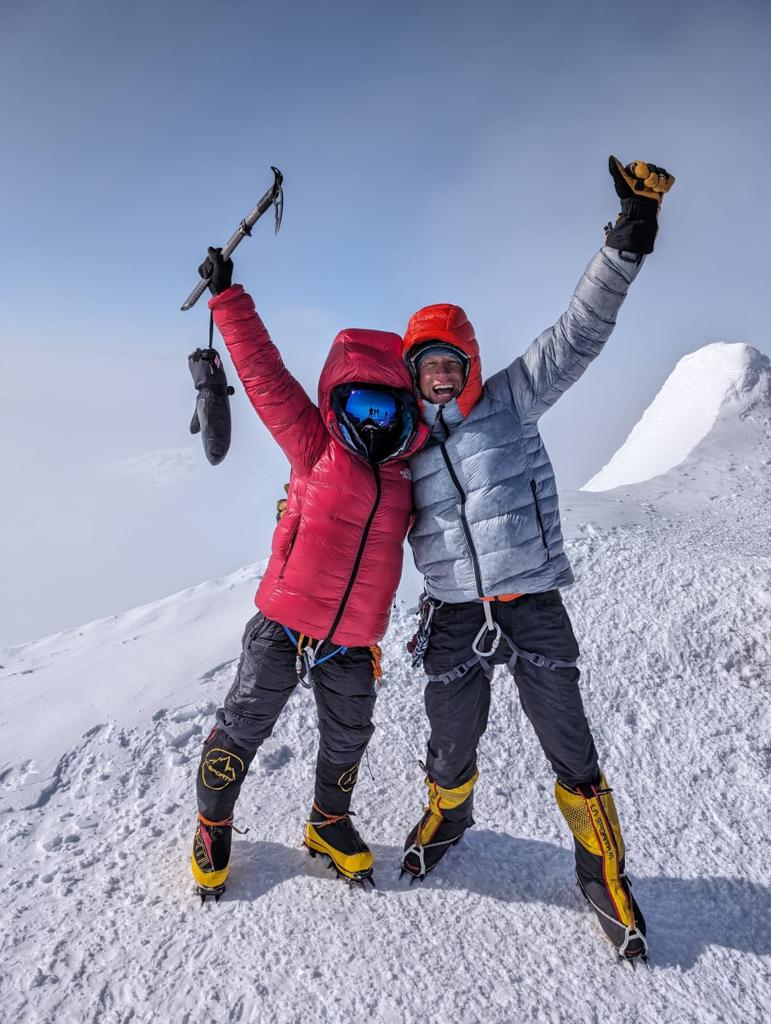
If Antarctica is on your list, you should consider Mount Sidley just as highly as Mount Vinson. Both mountains offer beautiful views and challenges, but are very different experiences. Mount Vinson is vibrant with several climbing teams attempting the summit. Each camp acts like a micro-city, offering climbers opportunities to interact with others outside of their group. In stark contrast, very few humans have ever stepped foot on Mount Sidley, providing a unique experience to truly be in one of the most remote places in the world. You feel like an explorer, dependent upon your teammates to support one another for a successful climb in an endless expanse of untouched ice. I will never forget my time on the continent, and a lot of my positive experience can be directly attributed to the world-class operation of Madison Mountaineering. The entire trip felt seamlessly executed, a reflection of their great organizational skills and logistics management. Our guides, Garrett and Benny, are unmatched in the level of care they provide their clients. Their attention to detail, leadership, cooking skills, and impeccable vibes made for a fun and memorable climbing experience. I would climb with Madison Mountaineering anywhere in the world, and look forward to being in the mountains with them again soon!
Kathryn Gilson
2024 mount vinson and mount sidley climber.
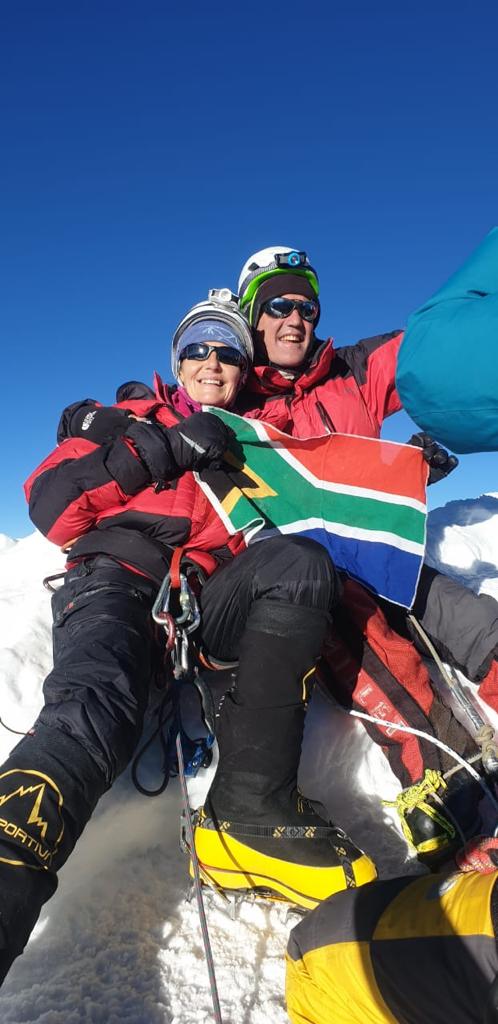
I signed up with Madison Mountaineering because I want full support from a top operator on 8000m peaks
Matthew Holt
Veteran climber in the himalayan & karakoram ranges.
This is a huge thank you for a fantastic expedition. Everything was first class, from the comforts of base camp to the care and attention I received on the mountain. There were many times over the course of those weeks that I was glad to be part of your team rather than one of the others. I also want to acknowledge Hannah and Terray - both wonderful humans who made a hugely positive impact on my experience in so many ways. And of course your Sherpa team...
Mandy Ramsden
Ama dablam 2022.
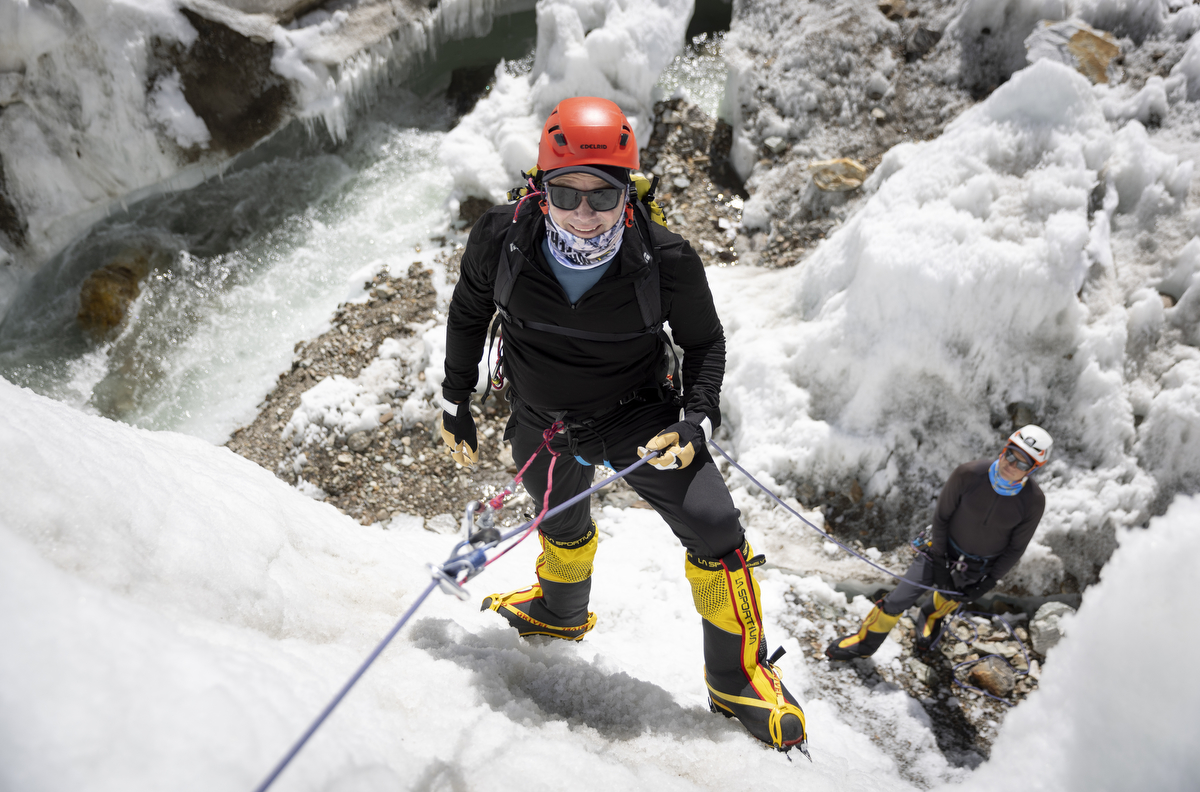
Madison Mountaineering delivered the most smoothly organized and supportive expedition in my 20+ years climbing big mountains. Felt very safe, totally comfortable at base camp, and surrounded by great Sherpas and guides. I can't speak highly enough about the whole team, logistics, pre-trip comms, and great conversations and experience in north-eastern Pakistan. Get amongst it!
Matthew Kitchin
2022 k2 climber.
Caleb and Max, representing Madison Mountaineering, displayed professionalism and organizational skills that made the summit experience exactly what I hoped for in my first of many climbing trips. Communication was clear and precise, and we learned more than my wildest dreams. The pictures and new friendships from this trip will last a lifetime. Thank you again.
July 2022 Mt. Rainier summiteer
Great climb with amazing guides. The entire trip, from pre-planning to wrap-up was organized, professional, educational, and above all, fun! I can’t wait to climb with Madison Mountaineering again!
July 2022 Mt. Baker summiteer
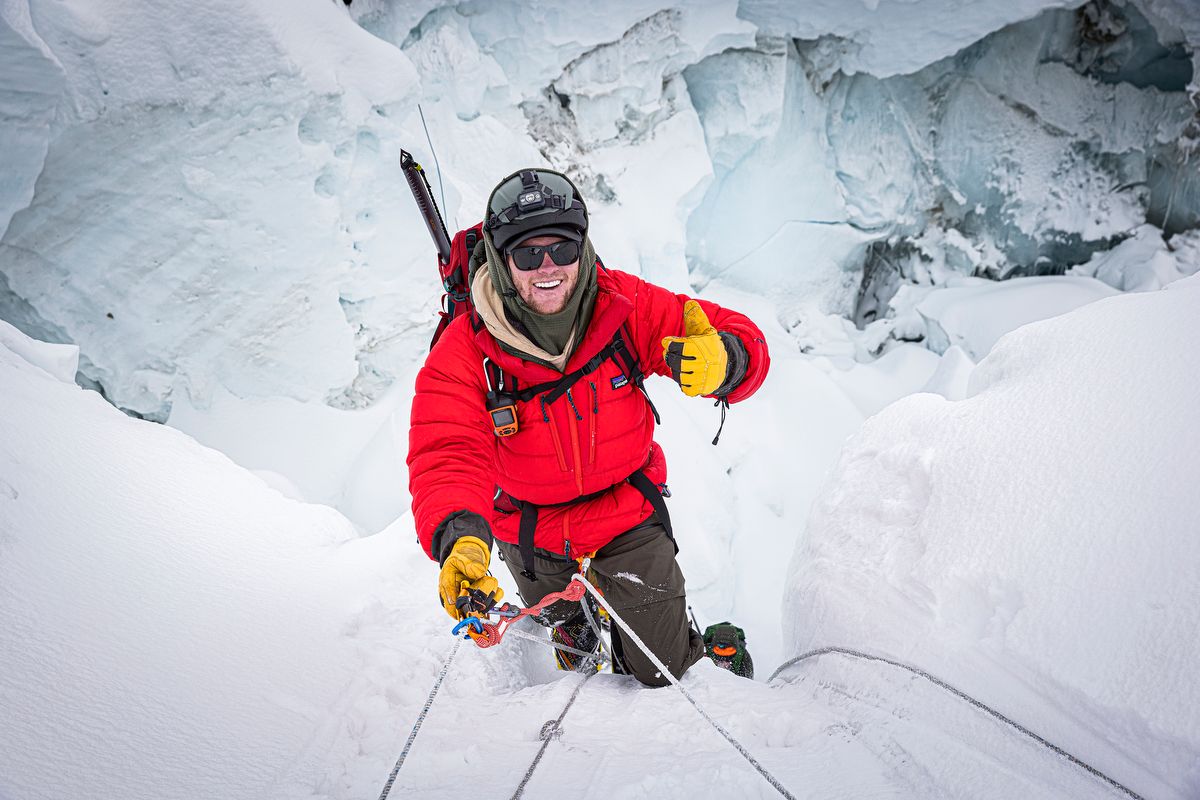
I have nothing but positive things to say about Madison Mountaineering and our expedition in its entirety. I have told everyone I’ve spoken with that it was 10/10 and exceeded all expectations. There’s no question in my mind that you are #1 in the business and mountains.
Mount Everest/Lhotse 2022
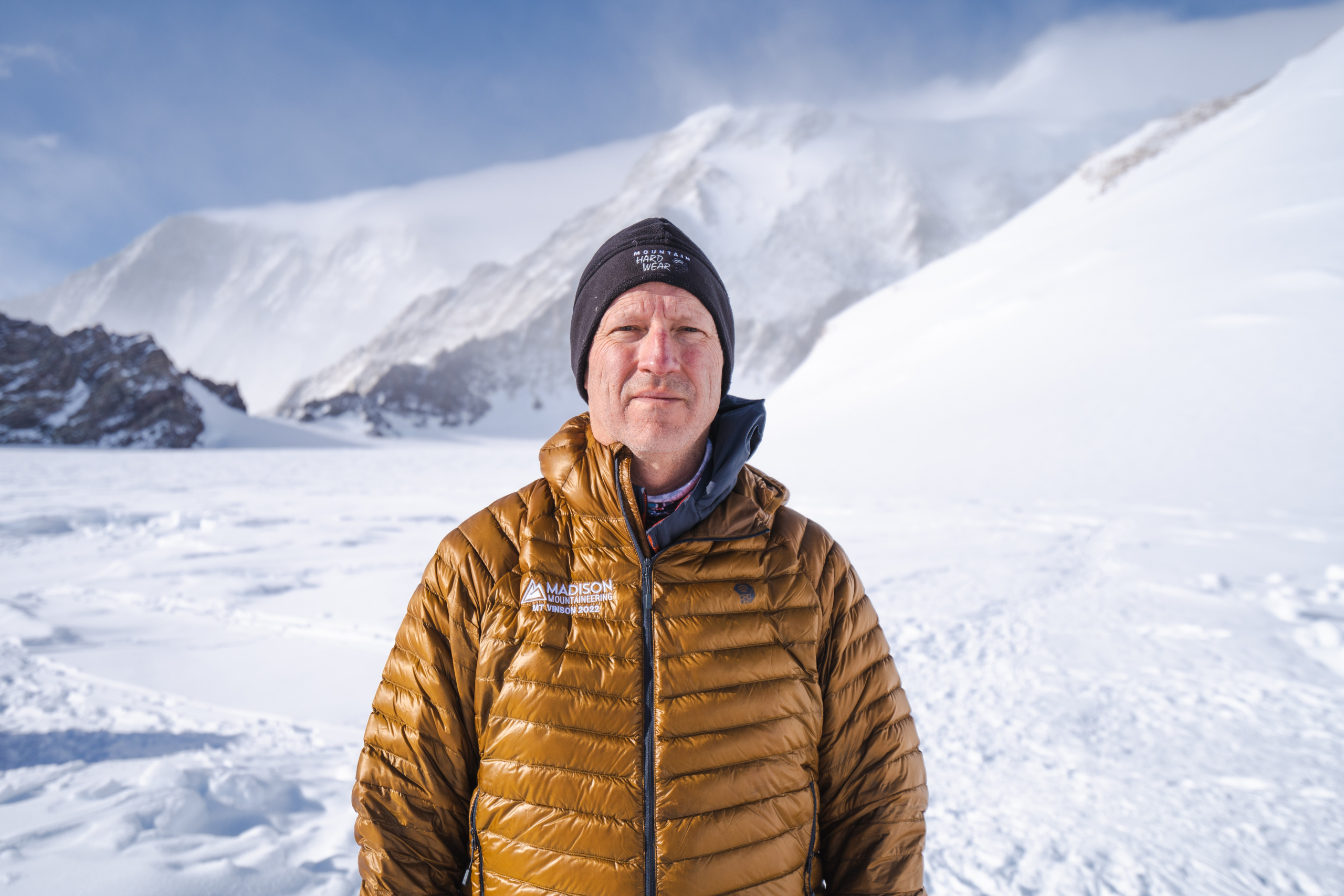
Fantastic guides - as good as it gets! Very good food while climbing all things considered. This was a truly exceptional trip and I deeply admire the Madison Mountaineering approach, values, attitude, and attention to the clients.
Steve McConnell
2022 mount vinson.
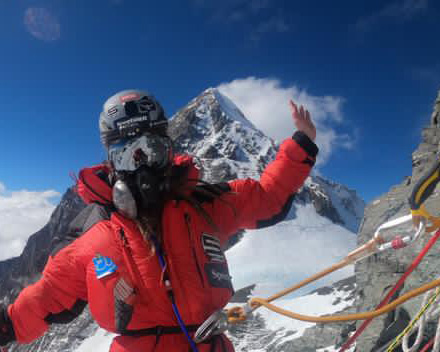
The best expedition I have ever been on, and I have been on many expeditions...I really like Garrett's style
Kristin Harila
2021 everest & lhotse summits.
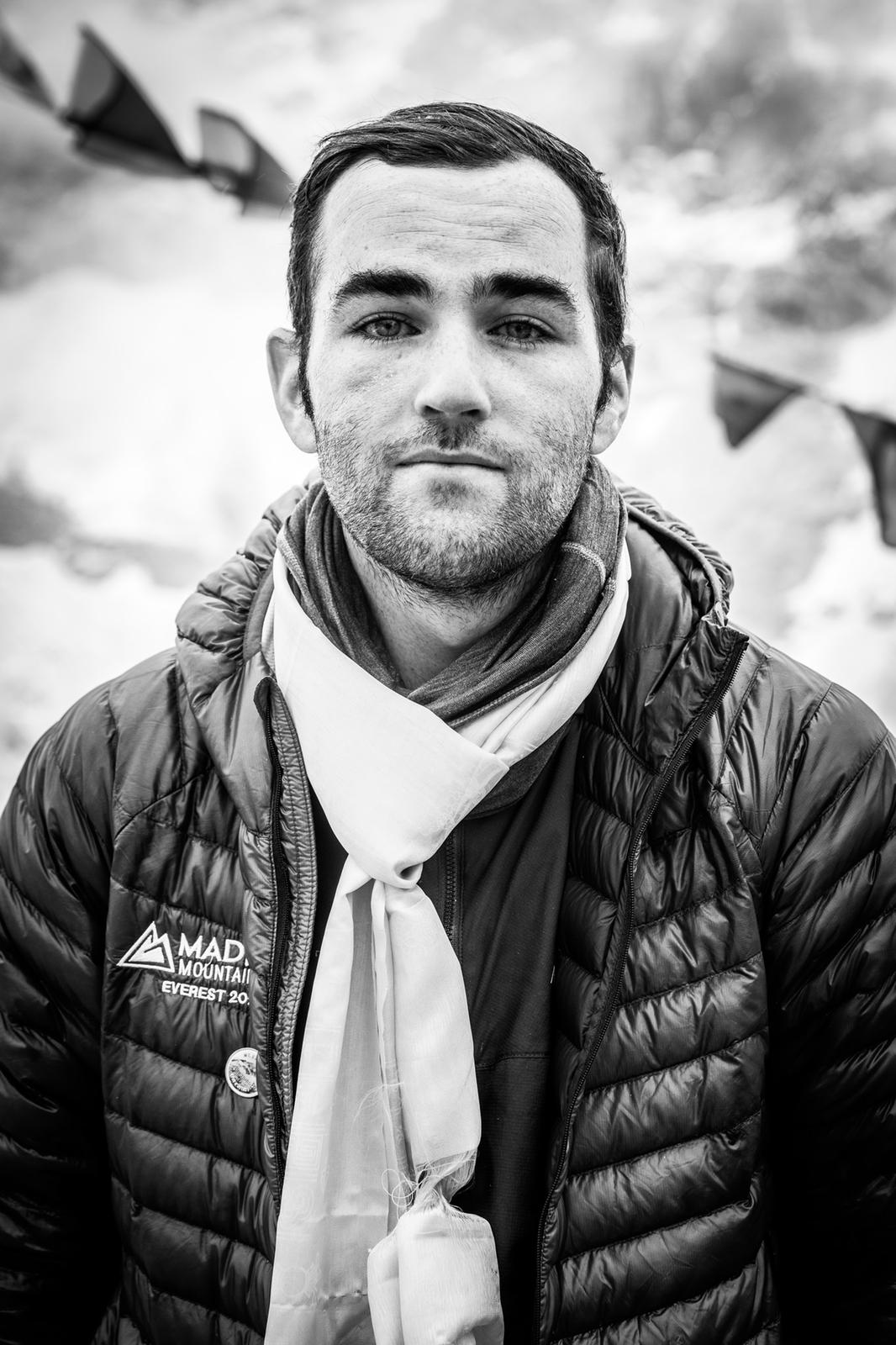
Thanks for an awesome expedition - we were definitely blessed to have that good weather but also it would not have been possible without the expert guiding and logistics.
Mount Everest 2021
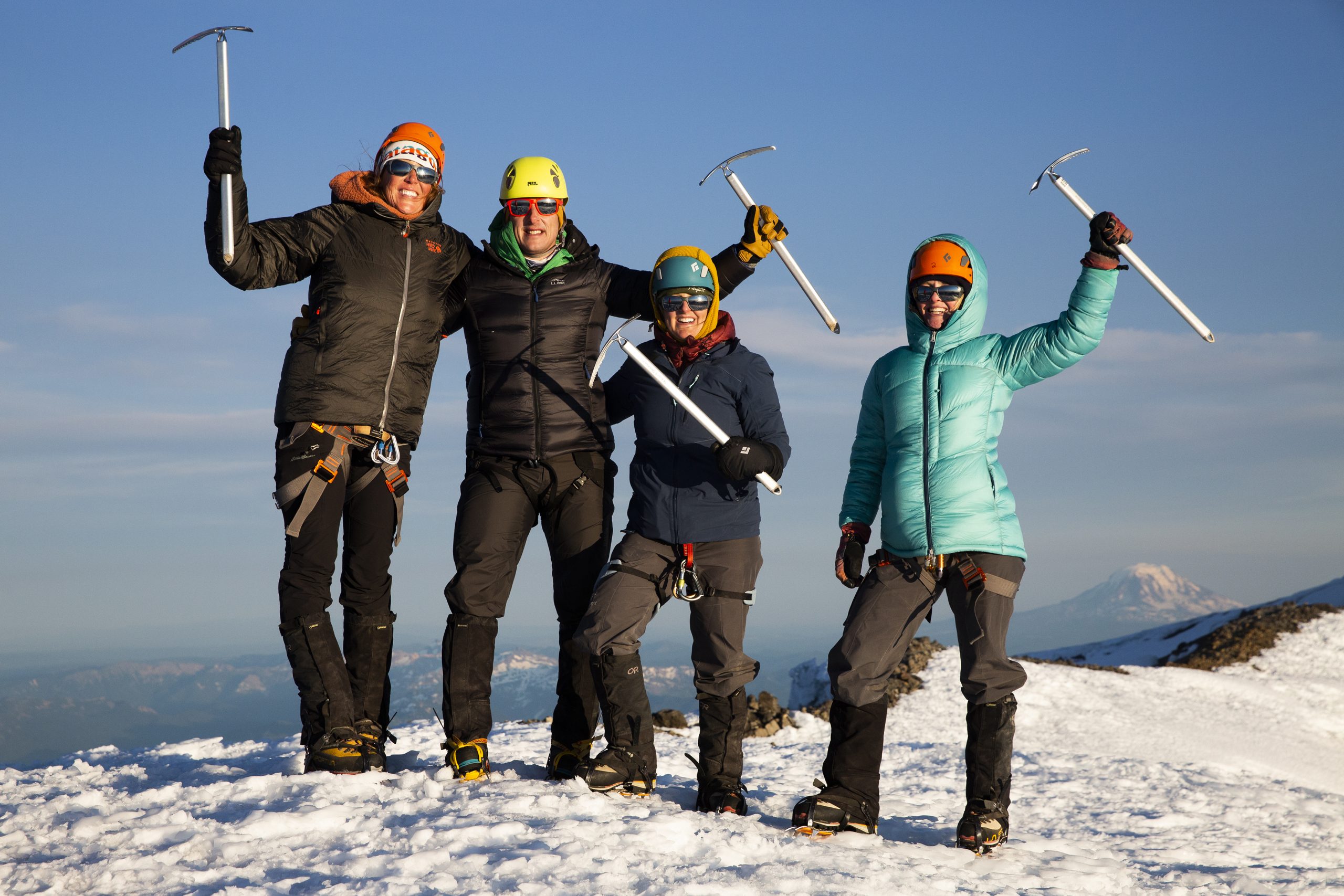
We will never be able to thank you enough for the entire experience. I know I can speak for the group when I say: The entire experience was amazing. The attention to detail was constantly on display. We learned a tremendous amount of detailed information. The mental strength and composure displayed by our guides, as far as being able to manage every situation we experienced, definitely proved to us that you can effectively manage any possible situation.
Zach Pashea
Mt. rainier 2020.
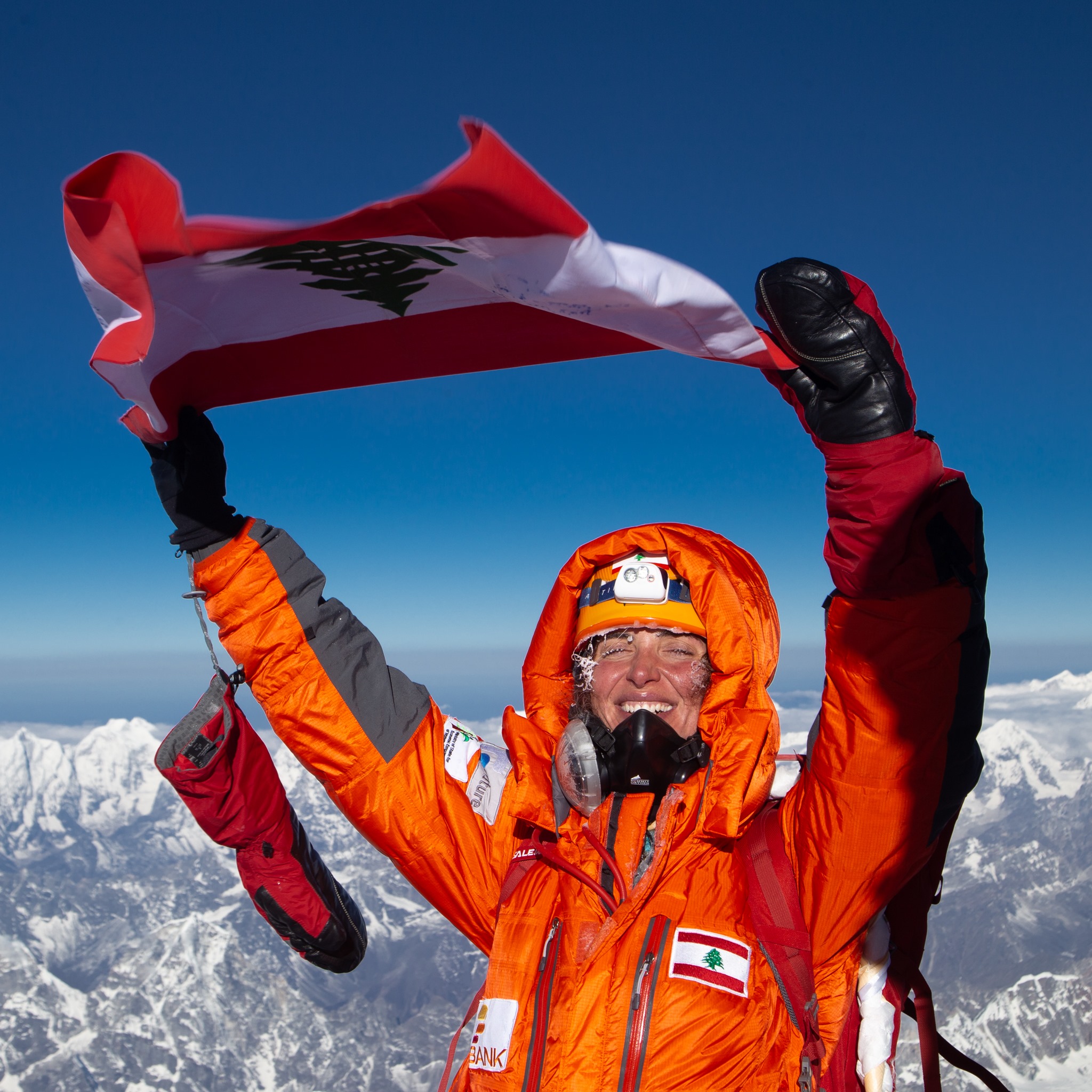
I was very lucky to be part of your team and under your leadership, Garrett! It looked easy and fun because you were leading on all logistics. Management is everything!
Joyce Azzam
Mount everest 2019.
Madison Mountaineering is the best run operation on the mountain
Kenton Cool
Britain's foremost everest climber and guide.
Thank you so much for such an incredible climb. It felt safe and proficient the whole time because of you. Undeniably the most dialed crew on the mountain….Excited to climb with you in the future!
Mount Everest 2018
Garrett... Thank you again for the adventure of a lifetime. What a team of guides and sherpas you have built! I can't imagine spending 7 weeks at base camp or higher without the MM approach to acclimatization, rest, nutrition, and teamwork. I could not have succeeded without your support and attention. Keep doing what you love.....it shows in your results.
You run a first-rate operation. There may be some (a few perhaps) that are as good in terms of staffing and experience, but there are none that are better and most are clearly inferior.
Every step of the way with you was remarkable. I couldn’t have enjoyed the experience more. You run a wonderful business with a world-class team. It is only when you live it every day, and see the carnage that the alternatives can bring, that you fully appreciate how well we were all treated!
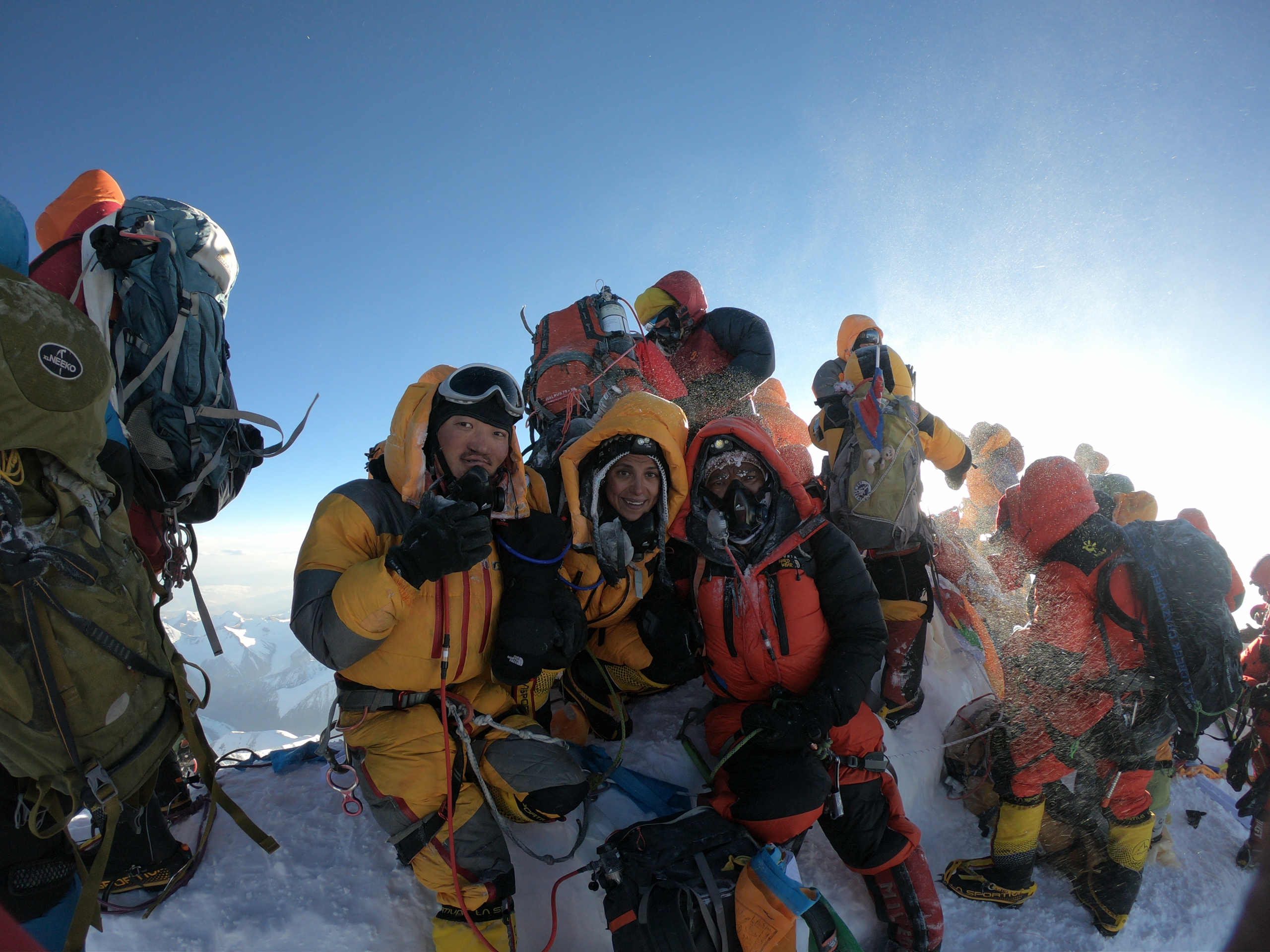
Thank you for a journey of a lifetime Garrett. I had an absolute blast and I can finally say I climbed with Madison Mountaineering. THE ONLY WAY TO GO :)
I wouldn’t hesitate to join Madison Mountaineering on any future 8000m expeditions they put together. Garrett and his team have the expertise to make the most challenging climbs safe, comfortable and fun. Madison Mountaineering provides a balance of expertise, comfort, and safety that is unparalleled by any other guiding service I have used. They make the farthest-flung corners of the world fun to adventure in. I would not have summited K2 without Garrett and his team.
Matthew Du Puy
17th american to summit k2 thanks to madison mountaineering.
Despite the bad weather and unsafe route conditions that prevented us and all other climbers on K2 in 2015 from making the summit, I felt the expedition was safe, enjoyable, and a great experience. The base camp was well equipped with a spacious dining tent, comfortable personal tents for individual climbers, great food, a satellite modem that all climbers could use to get on the internet, and nightly films on a big screen. The highly skilled sherpas and our experienced/qualified guides were a key part of our success and safety on the mountain. Even though we did not summit the experience was priceless
Thomas Boyer
2015 k2 climber.
We were very satisfied with the Madison Mountaineering K2 Expedition, especially the staff, the logistics, the base camp, and how the expedition was managed start to finish. We very much appreciated the experienced sherpas and Garrett’s ‘previous summit’ knowledge of K2.
Tanel Tuuleveski & Andras Kassik
2015 k2 climbers.
It was a pleasure and a privilege to be a part of the 2015 Madison Mountaineering expedition to K2. Garrett did an outstanding job of managing the logistics, personnel, equipment and most importantly the safety of the climb. Despite the difficult conditions that resulted from the poor weather this season in the region the trip was an absolute success delivering a well organized, safe and dynamic experience for all those that participated. Madison did a terrific job in balancing all the complexities of organizing such a complex expedition to a region that has it challenges in terms of access, communications, comfort and safety. I would absolutely sign up again.
Brant Didden
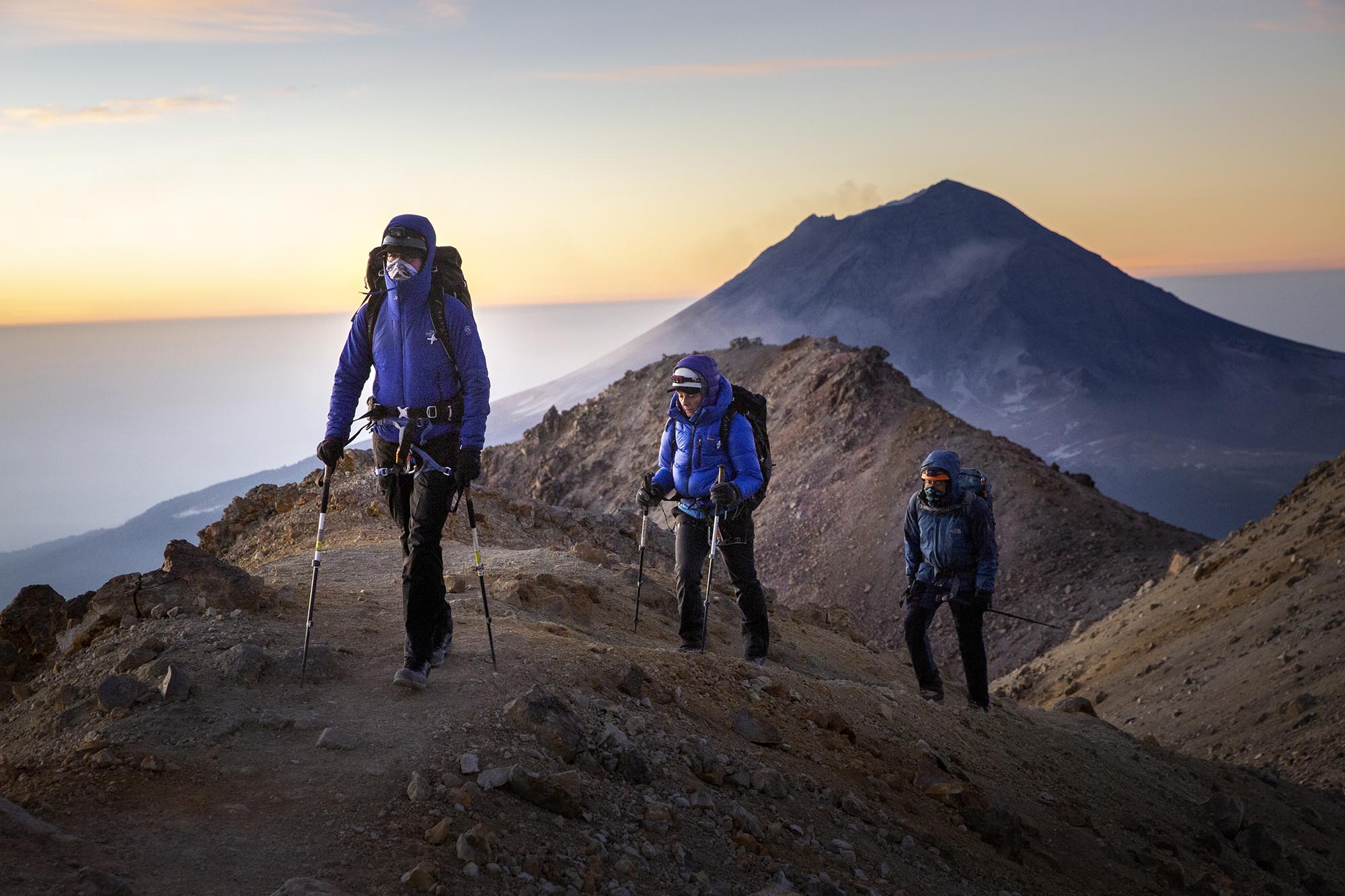
The quality of the experience was second to none. Everything just worked! The logistics were easy, the accommodations terrific, and our guide was one of the best we've ever worked with.
John Horgan
Mexico volcanoes, dec 2019.

You guys knocked it out of the park. It was a 10. It was a great experience from beginning to end. Best expedition I've ever been on! Madison Mountaineering is by far the leader on the mountain.
2019/2020 Mount Vinson
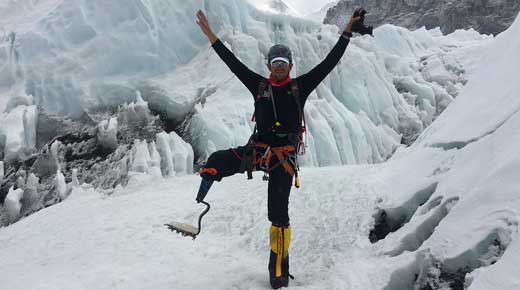
Absolutely the best prepared, most experienced, and safest guide company on Everest. Climbing Everest with Madison Mountaineering exceeded my expectations, I could not be more satisfied with my experience.
Jeffrey Glasbrenner
2016 mount everest.
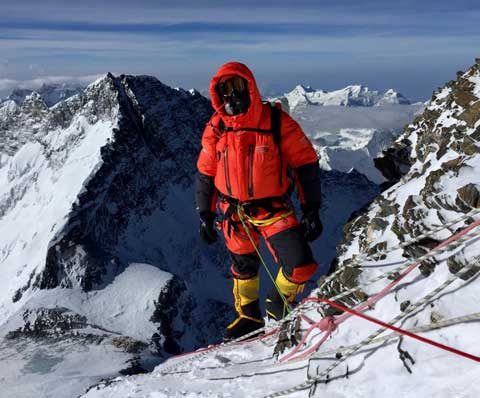
I’ve climbed with a number of outfits throughout the years and Madison is hands down the best in all aspects. I have no need to work with anyone else in the future. Madison has an incredible success record because of the importance that they place on climber strength and teamwork. They employ the best guides and local staff of any outfit. I would climb with any one of them anywhere in the world.
John Stenderup
Everest & lhotse 2017.
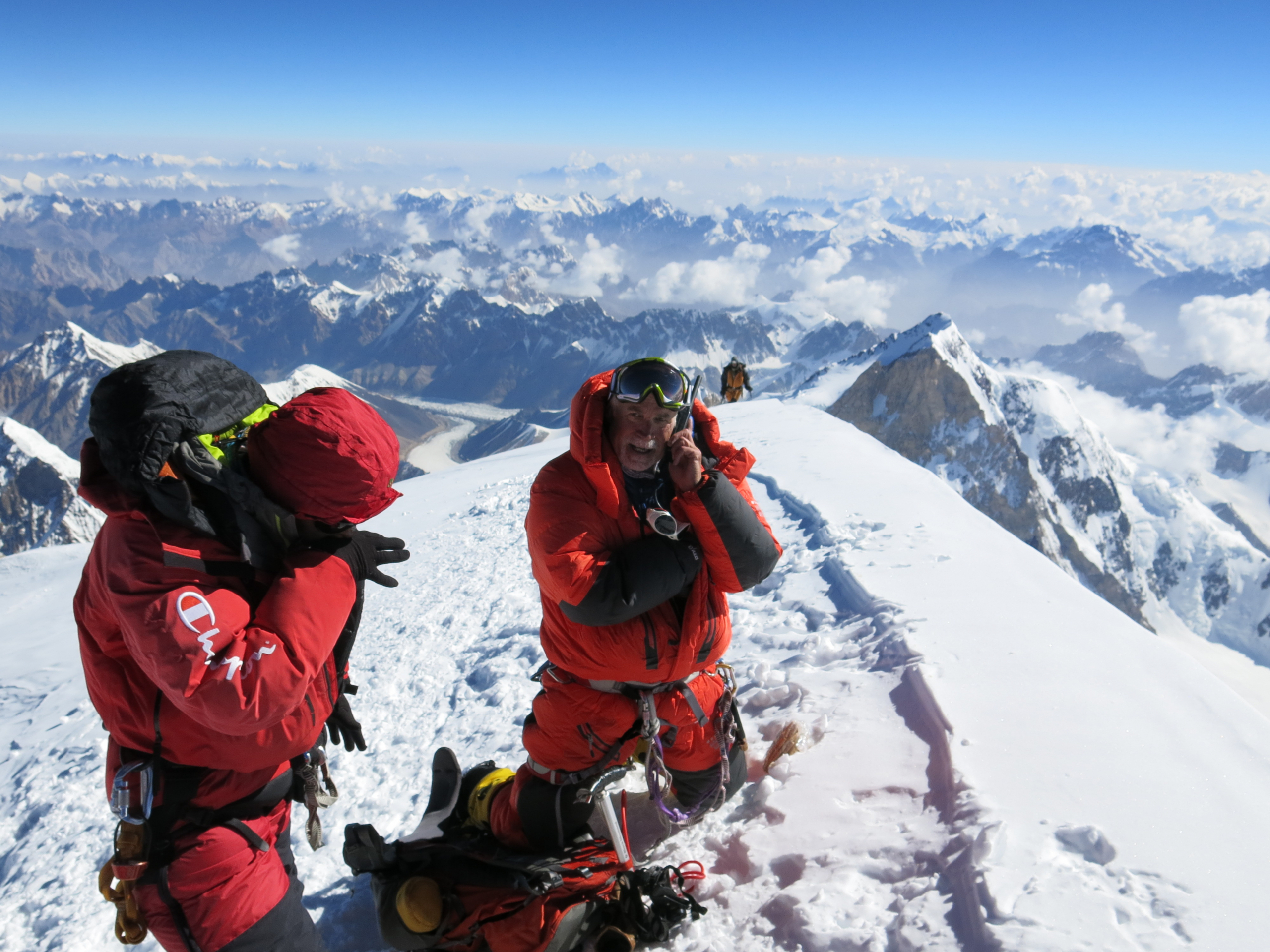
On July 27, 2014, my birthday, I became the oldest American to summit K2. The professionalism and skill of Garrett Madison was key in this achievement. His attention to detail, plus leveraging his extensive Everest experience gave our team the best chance to summit and descend safely and quickly on arguably the world’s toughest mountain.
Alan Arnette
Recent dispatches.

Back in Base Camp!
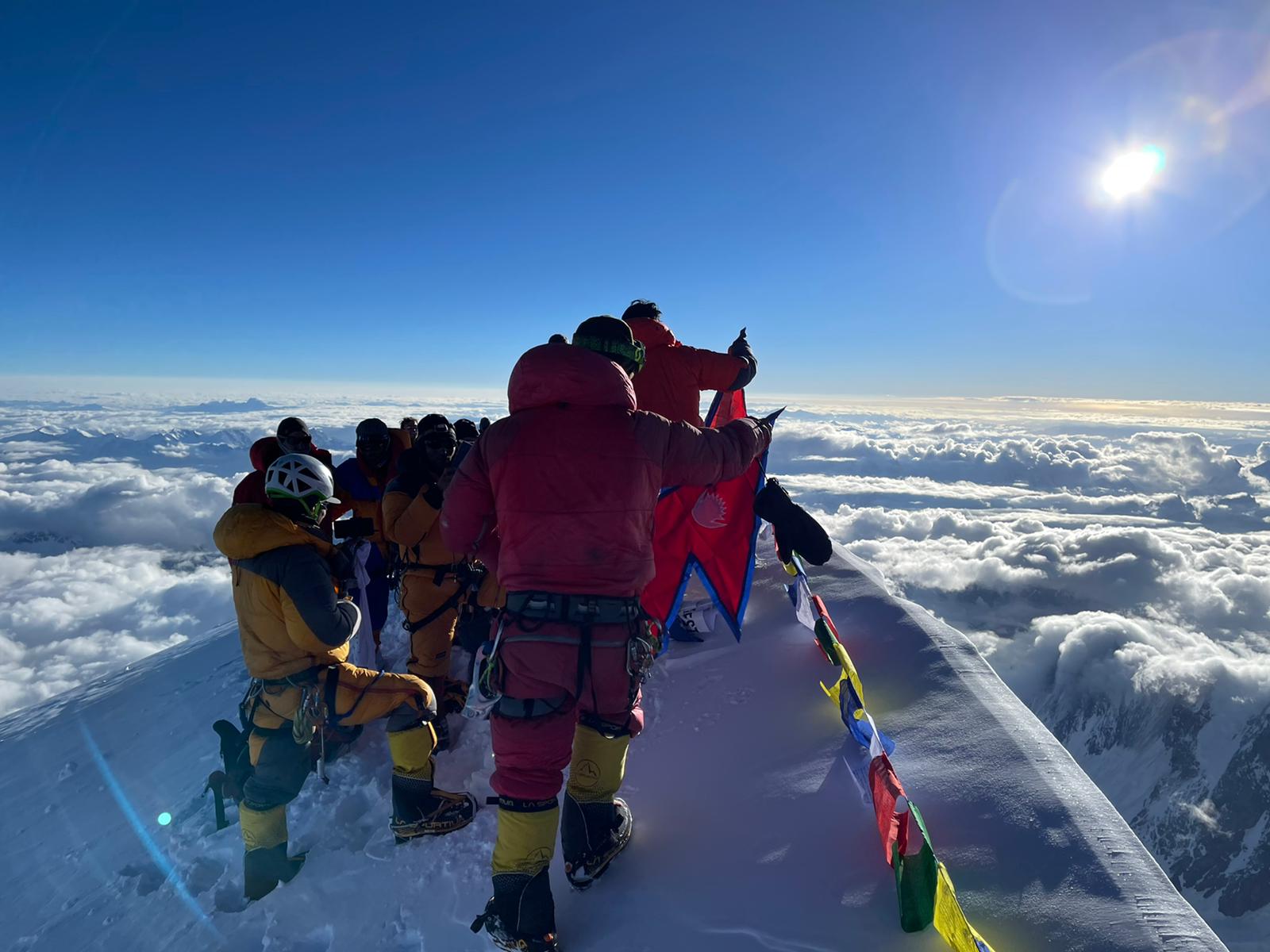
Summit Success on K2!
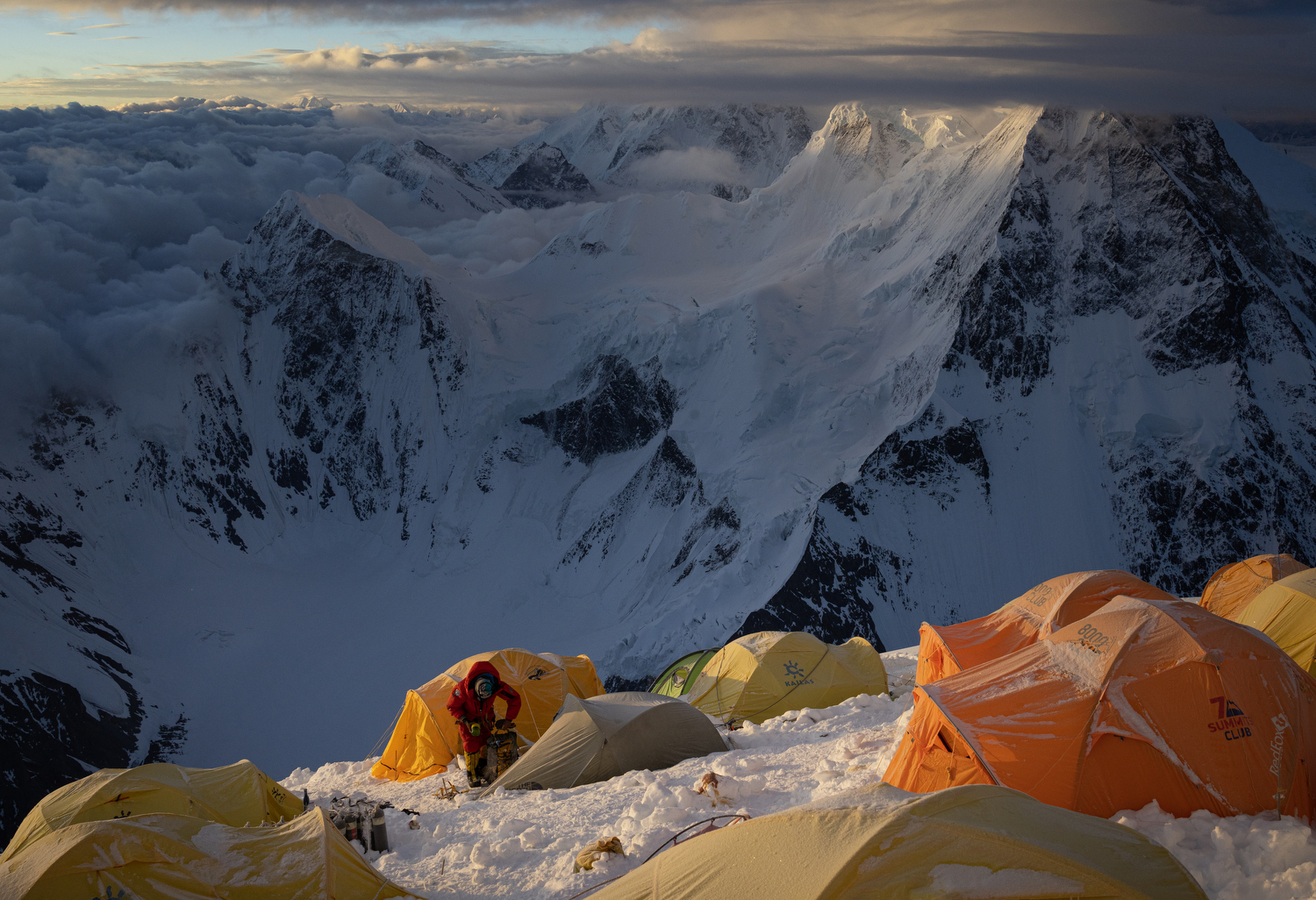
Broad Peak Summits!
Reach us about this trip.
- First Name *
- Last Name *
- Phone Number
- Country of Residence Afghanistan Åland Islands Albania Algeria American Samoa Andorra Angola Anguilla Antarctica Antigua and Barbuda Argentina Armenia Aruba Australia Austria Azerbaijan Bahamas Bahrain Bangladesh Barbados Belarus Belgium Belize Benin Bermuda Bhutan Bolivia Bonaire, Sint Eustatius and Saba Bosnia and Herzegovina Botswana Bouvet Island Brazil British Indian Ocean Territory Brunei Darrussalam Bulgaria Burkina Faso Burundi Cambodia Cameroon Canada Cape Verde Cayman Islands Central African Republic Chad Chile China Christmas Island Cocos Islands Colombia Comoros Congo, Democratic Republic of the Congo, Republic of the Cook Islands Costa Rica Côte d'Ivoire Croatia Cuba Curaçao Cyprus Czech Republic Denmark Djibouti Dominica Dominican Republic Ecuador Egypt El Salvador Equatorial Guinea Eritrea Estonia Eswatini (Swaziland) Ethiopia Falkland Islands Faroe Islands Fiji Finland France French Guiana French Polynesia French Southern Territories Gabon Gambia Georgia Germany Ghana Gibraltar Greece Greenland Grenada Guadeloupe Guam Guatemala Guernsey Guinea Guinea-Bissau Guyana Haiti Heard and McDonald Islands Holy See Honduras Hong Kong Hungary Iceland India Indonesia Iran Iraq Ireland Isle of Man Israel Italy Jamaica Japan Jersey Jordan Kazakhstan Kenya Kiribati Kuwait Kyrgyzstan Lao People's Democratic Republic Latvia Lebanon Lesotho Liberia Libya Liechtenstein Lithuania Luxembourg Macau Macedonia Madagascar Malawi Malaysia Maldives Mali Malta Marshall Islands Martinique Mauritania Mauritius Mayotte Mexico Micronesia Moldova Monaco Mongolia Montenegro Montserrat Morocco Mozambique Myanmar Namibia Nauru Nepal Netherlands New Caledonia New Zealand Nicaragua Niger Nigeria Niue Norfolk Island North Korea Northern Mariana Islands Norway Oman Pakistan Palau Palestine, State of Panama Papua New Guinea Paraguay Peru Philippines Pitcairn Poland Portugal Puerto Rico Qatar Réunion Romania Russia Rwanda Saint Barthélemy Saint Helena Saint Kitts and Nevis Saint Lucia Saint Martin Saint Pierre and Miquelon Saint Vincent and the Grenadines Samoa San Marino Sao Tome and Principe Saudi Arabia Senegal Serbia Seychelles Sierra Leone Singapore Sint Maarten Slovakia Slovenia Solomon Islands Somalia South Africa South Georgia South Korea South Sudan Spain Sri Lanka Sudan Suriname Svalbard and Jan Mayen Islands Sweden Switzerland Syria Taiwan Tajikistan Tanzania Thailand Timor-Leste Togo Tokelau Tonga Trinidad and Tobago Tunisia Turkey Turkmenistan Turks and Caicos Islands Tuvalu Uganda Ukraine United Arab Emirates United Kingdom United States Uruguay US Minor Outlying Islands Uzbekistan Vanuatu Venezuela Vietnam Virgin Islands, British Virgin Islands, U.S. Wallis and Futuna Western Sahara Yemen Zambia Zimbabwe
- Expedition Interest * choose Everest K2 Vinson Carstensz Pyramid Nepal Unclimbed Peak Elbrus Mont Blanc Everest Base Camp Cho Oyu Lhotse Island Peak Makalu Ama Dablam Great Trango Tower Kilimanjaro Aconcagua Peru Ecuador Volcanoes Mexico Volcanoes Eldorado Peak Mt. Baker Mt. Olympus Mt. Shuksan Denali Mt. Rainier Ski the Last Degree -- any --
- Hidden Expedition interest * Aconcagua– South America 6,961m / 22,837ft. Ama Dablam– Nepal, Asia 6,812m / 22,349ft. Bolivia Cordillera Real– Bolivia, South America 6438m / 21,122ft. Broad Peak– Pakistan, Asia 8,051m / 26,414ft. Carstensz Pyramid– Oceania 4,884m / 16,024ft. Cho Oyu– China, Asia 8,188m / 26,864ft. Denali– North America 6,190m / 20,310ft. Dykh-Tau– Russia, Europe 5,205m / 17,077ft. Ecuador Volcanoes– Ecuador, South America 6,263m / 20,549ft. Eldorado Peak– Washington, USA 2,703m / 8,868ft. Everest Base Camp Trek– Nepal, Asia First Ascent of Unclimbed Peak in Nepal– Nepal, Asia High Peaks of Peru– Peru, South America 6354m / 20,846ft. Gokyo Ri / Lobuche / Island Peak– Nepal, Asia 6,189m / 20,305ft. Island Peak– Nepal, Asia 6,189m / 20,305ft. Unclimbed Peak in Pakistan– Pakistan, Asia K2– Pakistan, Asia 8,611m / 28,251ft. Kilimanjaro– Africa 5,895m / 19,341ft. Lhotse– Nepal, Asia 8,516m / 27,940ft. Lobuche East– Nepal, Asia 6,119m / 20,075ft. Makalu– Nepal, Asia 8,463m / 27,766 ft. Manaslu– Nepal, Asia 8,163m / 26,781ft. Mexico Volcanoes– Mexico, North America 5,636m / 18,491ft. Mont Blanc– France, Europe 4,808m / 15,774ft. Mount Elbrus– Europe 5,642m / 18,510ft. Mount Everest and Lhotse Combination– Nepal, Asia Mount Everest Express– Asia 8,848.86m / 29,032ft. Nuptse– Asia 7,861m / 25,791ft. Mount Everest– Asia 8,848.86m / 29,032ft. Ice Climbing with Conrad Anker– Nepal, Asia Mount Kenya– Africa 5,199m / 17,057ft. Mount Sidley– Antarctica 4,285m / 14,058 ft. Ski the Last Degree & Climb Mount Vinson– Antarctica 4,892m / 16,050ft. Mt. Baker– Washington, USA 3,286m / 10,781ft. Mount Vinson– Antarctica 4,892m / 16,050ft. Mt. Olympus– Washington, USA 2,432m / 7,980 ft. Mt. Rainier– Washington, USA 4,392m / 14,411ft. Mt. Shuksan– Washington, USA 2,783m / 9,131 ft. Ojos del Salado– Chile, South America 6893m / 22,615ft. Ski the Last Degree– Antarctica
- Prove you're human. What is 11-8? *
Ecuador Volcanoes
– ecuador, south america 6,263m / 20,549ft..
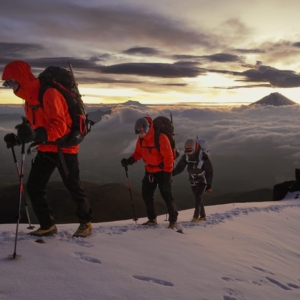
– North America 6,190m / 20,310ft.
Find Your Tour
Main navigation.
- Subsidiary Company
- Legal Documents
- Terms and Condition
- Why Himalayan Magic Treks
Himalayan Vehicle Services Pvt. Ltd.
- Vehicle Rental in Nepal
News and Events
- Traveling to Nepal
Trekking in Nepal
Annapurna trekking.
- Annapurna Base Camp Trek
- Ghorepani Poon Hill Trek
- Annapurna Circuit Trek
- Mardi Himal Trek
- Mohare Danda Trek
- Annapurna Tilicho Lake Trek
- Annapurna Royal Trek
- Siklis village Trek
- Annapurna Express Trek
- Annapurna Short Hiking
- Panchase Trek
- Annapurna Sunrise View Trek
- Annapurna Khayer Trek
- Lamjung Himal Trek
- Nar Phu Kangla Pass Tilicho Trek
- Siklis Trek
- Dhaulagiri Circuit Trek
- Annapurna Mini Trek
- Annapurna Dhaulagiri Panorama Trek
- Annapurna Dhampus Pokhara Trek
- Kaligandaki Valley Trek
- Annapurna Ghale Gaun Trek
- Annapurna Tilicho Mesokanto la Pass Trek
Everest Trekking
- Everest Base Camp Trek
- Everest Base Camp Heli Trek
- Everest View Trek
- Everest Gokyo Trek
- Everest short Hiking
- Everest Gokyo Kalapathar Trek
- Everest Gokyo Chola Pass Trek
- Everest Three High Pass Trek
- Rolwaling Trek
- Pikey Peak Trek
- Dudh Kunda Trek
- Solu Village Trek
- Jiri Everest Base Camp Trek
- Basa Everest Gokyo Trek
- Basa Village Cultural Trek
- Everest Base Camp via Basa Trek
- Gaurishankar Trek
- Salpa Pass Trek
- Ama Dablam Base Camp Trek
Langtang Trekking
- Langtang Gosainkunda Trek
- Langtang Gosainkunda Helambu Trek
- Langtang Ganja-La Pass Trek
- Helambu Valley Trek
- Ganesh Himal Trek
- Bhairav Kunda Trek
- Panch Pokhari Trek
- Langtang Valley Trek
- Tilman Pass Trek
Manaslu Trekking
- Manaslu Circuit Trek
- Manaslu Tsum Valley Trek
- Manaslu Circuit Tsum Valley Trek
- Rupina La pass Trek
- Bara Pokhari Trek
- Manaslu Mini Trek
Dolpo Trekking
- Upper Dolpo Trek
- Dolpo Jumla Trek
- Dolpo Mustang Trek
- Rara Lake Trek
- Lower Dolpo Trek
- Dolpo Great Himalayan Trail
- Humla Limi Valley Trek
Mustang Trekking
- Upper Mustang Trek
- Jomsom Muktinath Trek
- Lower Mustang Trek
- Mustang Damodar Kunda Trek
- Nar Phu Valley Trek
- Nar Phu mustang Teri-la Pass Trek
- Upper Mustang Overland Tour
Western Region Nepal
- Saipal Himal Trek
- Dhorpatan Trek
Eastern Region Nepal
- Kanchenjunga Trek
- Kanchenjunga Phidim Trek
- Kanchenjunga Circuit Trek
- Kanchenjunga Base Camp Trek
- The Great Himalayan Trail
Peak Climbing in Nepal
- Island Peak Climbing
- Mera Peak climbing
- Lobuche West Peak Climbing
- Chulu East Peak climbing
- Dhampus Peak Climbing
- Thorong Peak Climbing
- Yala Peak Climbing
- Mera Island Peak climbing
- Everest Three Peak Climbing
- Naya kanga Peak Climbing
- Nirekha Peak Climbing
- Pokalde Peak Climbing
- Singu Chuli Peak
- Mt. Cholatse peak Climbing
- Khongma Tse (Mehra) Peak climbing
- Tharpu Chuli Peak
- Kusum Kangru Peak Climbing
- Mt. Ombigaichen peak climbing
- Ramdung Peak Climbing
- Kongde Peak Climbing
- Chulu West Peak climbing
- Pisang Peak Climbing
- Paldor Peak climbing
- Kyajo Ri Peak Climbing
- Pharchamo Peak Climbing
- Mt. Chekigo Peak Climbing
- Mt. Langsisa Ri Peak Climbing
- Saribung Peak Climbing
- Tukuche Peak
Mountain Expedition
- Everest Expedition
- Himlung Himal Expedition
- Manaslu Expedition
- Ama Dablam Expedition
- Baruntse Expedition
- Shishapangma Expedition
- Annapurna Expedition
- Makalu Expedition
- Pomari Expedition
- Dhaulagiri Expedition
- Kanchenjunga Expedition
- Nuptse Expedition
- Lhotse Expedition
- Mt. Ratna Chuli Expedition
- Gyajikang Expedition
- Putha Hiuchuli Expedition
Nepal Tour Packages
- Lumbini Tour
- Bandipur Sunset view Tour
- Muktinath Pilgrimage Tour
- Chitwan Sightseeing Tour
- Best of Nepal Tour
- Kathmandu Pokhara Tour
- Kathmandu Pokhara Lumbini Tour
- Kathmandu Chitwan Pokhara Tour
- Himalayan view Tour
- Himalayan Panorama tour
- Cultural Tour Nepal
Adventure Sports in Nepal
- Tenzing Hillary Everest Marathon 2025
Rafting in Nepal
- Arun River Rafting
- Tamor River Rafting
- Bhote Koshi River Rafting
- Trishuli River Rafting
- Kaligandaki River Rafting
- Seti River Rafting
- Sunkoshi River Rrafting
Helicopter Tours in Nepal
- Kathmandu Heli Tour
Mountain Biking in Nepal
- Annapurna Half Mountain Biking
- Upper Mustang Mountain Biking
- Kathmandu Valley Rim Mountain Biking
- Daman Biking
- Mountain Flight
- Tibet Motorbike Tour
- Paragliding in Nepal
Jungle Safari in Nepal
- Koshi Tappu wild life Safari
- Chitwan National Park Safari
- Bardiya National Park Safari
Hiking in Nepal
- Chisapani Nagarkot Hiking
- Nagarjung Hiking
- Shivapuri Day Hiking
- Gosaikunda Helambu Hiking
- Langtang Short Hiking
- Mustang Short Hiking
Botanical Trekking in Nepal
- Shivapuri Botanical Trek
- Langtang Botanical Trekking
- Shey Phoksundo Botanical Trek
- Makalu Botanical Trek
Home stay Trek in Nepal
- Solu Basa Village Trek
- Nepal Mountain Flight Tour
Christmas Tour in Nepal
- Everest Panorama Trek
- Traveling Facts and Tips
Volunteering in Nepal
- Himalayan Magic Guide Fund
- Himalayan Children Fund
- Bird Watching in Nepal
- Family Tour in Nepal
- Tibet Overland Tour
- Lhasa EBC Trek
- Kailash Tour
- Simikot Kailash Trek
- Tibet Everest Base Camp Trek
- Tibet Cultural Tour
- Kathmandu Lhasa Tour
- Tibet Saga Dawa Festival tour
- Samye Valley Tour
- Tibet Kharta Valley Trek
- Tibet Lhasa Nam Tso Lake Tour
- Tibet Ganden Samye Trek
- Tibet Kham Valley Trek
- Lhasa Sightseeing Tour
- Tibet Kunming Lhasa Tour
- Dragon Heart Tour
- 4 Night’s 5 Days Bhutan tour
- Bhutan Tour 6 Nights 7 Days
- 9 night's 10 Days Bhutan Tour
- 13 Night's 14 days Bhutan Tour
- Laya Trek In Bhutan
- Travel Guide
Safe Journey in the Himalayas !
- : 009779851166578 (Nabin)
- : +0633735377 (Eric)

Please share your experience if you have already travelled with Himalayan Magic Treks P.Ltd
- Eastern Region Nepal »
- Trekking in Nepal »
Milke Danda Trek

Highest access:
Group Size:
Best season:
Transportation:
Accommodation:
Milke Danda Trek is one of the best trekking destinations in Nepal, which is less crowded also natural beauty as well as Rhododendrons flowers blooming during the month of April to May would be fantastic in this region and great views from Milke Danda, off-course you will enjoy allot this trip with our professional Team into the wilderness, Pure Nature and snowcapped mountains in the ridge of eastern part of Nepal Milkde Dada Trekking Trail offer Alpine types (either Lodge and Camping Based) because this wouldn’t be fully camping while there will be some of the place is possible to have Lodge for the accommodation and it will be easy for you as well as much cheaper on alpine style so there will be a Guide with you and porters to carry your Luggage , tents, Food, Kitchen gears for you and some light Food, soups, meat items, kitchen stuff , cooking and portion materials to arrange this trip easily, where is not available Home stay (Lodge). You can check our propose Milke Danda Trekking itinerary details as given below, if you want to change anything about duration of the Trekking feel free let us know for the modification of program as per your dream desire to be well satisfaction.
Uncover the Beauty of Milke Danda Trek in Eastern Nepal Embark on an unforgettable journey through the Milke Danda Trek, a captivating adventure that traverses the extensive forest ridge separating the Arun and Tamur Valleys in eastern Nepal. Whether starting from Basantapur or Tumlingtar, this 7-11 day trek promises breathtaking views of iconic peaks such as Mount Makalu (8,463 m) to the West and the world's third-highest mountain, Mount Kanchenjunga (8,586 m), situated in the Eastern part of Nepal.
Highlights:
- Spectacular Mountain Views:
- Witness the majesty of Mount Makalu and Mount Kanchenjunga, providing an awe-inspiring backdrop to your Milke Danda Trek. The panoramic vistas along the ridge create a visual feast for nature enthusiasts.
Floral Delight: Milke Danda is renowned for its diverse flora, including Nepal's national flower, rhododendrons. Marvel at the vibrant colors of rhododendron flowers that paint the forest during the spring season (March - April), adding a stunning touch to the trek.
Cultural Exploration: Immerse yourself in the local culture and lifestyle as you traverse the trekking route. Encounter the warm hospitality of the inhabitants and gain insights into their unique traditions along the way.
Rhododendron Forests: Traverse through expansive rhododendron forests, creating a picturesque setting along the ridge. The trek offers a rare opportunity to witness the rhododendron flowers in full bloom, transforming the landscape into a vibrant canvas.
Trek Itinerary: Commencing the journey from either Basantapur or Tumlingtar, the trek spans 7-11 days. The Milke Danda ridge concludes with stunning views from its high peaks. The return journey retraces the trail back to Chainpur, leading through vast rhododendron forests, culminating at Tumlingtar or Basantapur.
Cost and Customization: The trip cost varies based on factors such as group size, duration, and selected services. Customize your adventure by forming your team and contact us via email at [email protected]. Share your details to receive a personalized quote for your Milke Danda Trek experience.
Conclusion: Milke Danda Trek beckons adventure seekers to explore the untamed beauty of eastern Nepal, offering a harmonious blend of mountain grandeur, vibrant flora, cultural immersion, and a memorable trekking experience. Plan your customized journey today for an unforgettable Himalayan adventure.
Short Itinerary
Milke danda trek : 10 days.
Day 01: Arrival at Kathmandu 1,310 m. welcome program by Himalayan Magic Treks and direct transfer to hotel with Breakfast Day 02: Drive to Basantpur (2,200 m) via Dharan over night Lodge Day 03: Drive to Gupha Bazzar (2,930 m).overt night Guest House Day 04: Trek to Milke Danda over night Tent Camp Day 05: Excursion day at Milke for Panoramic views over night Tent Camp Day 06: Trek to Nundhaki over night Tent Camp Day 07: Trek from Nundhaki to Tatopani again drive by local jeep over night Pokhari, Guest House Day 08: Trek to Chainpur 2 hours and drive to Tumlingtar over night Guest House Day 09: Flight from Tumlingtar to Kathmandu, evening farewell in Typical Nepali Culture Day 10: Departure from Kathmandu to your onward destination
What are included in my Package?
- Airport picks up and drops by private transport
- All Transportation
- 3 meals per day during the trek (Breakfast Lunch Dinner) including Tea or coffee
- Accommodation on Tea House (Lodge) or provided Tents during the trek as mentioned in the trek type
- 2 Nights Hotel in Kathmandu with Breakfast
- Kathmandu to Basantapur by bus
- Tumlingtar to Kathmandu flight Guests + guide
- An English Speaking Guide
- Porters to carry your luggage + other extra Foods, tent etc during the trek
- Tumlingtar to Kathmandu transportation for porter
- All Government local Taxes
- Park Fees
- (TIMS) Trekkers Information Management System)
- First Aid kit and general equipment for Porter
- Guide and porter salary Staff insurance during the trekking and extra services according to the guest per Demand
- Duffle Bags Non refundable to protect your Luggage
- Himalayan Magic Trek’s Appreciation Certificate after the successful trek
- Company T-shirt as a Souvenir
- Farewell dinner with typical Nepali culture
What are Excluded from my Package?
- Lunch and Dinner in Kathmandu
- Trekking equipment any type of personal expenses such as Alcoholic Beverage drinks,phone and Laundry.
- Emergency Rescue and Travel Insurance.Trip Cancellation cost accident or Health, Loss Theft or Damage and personal effects. we Advice you to take out personal Travel Insurance & Tips

Airport Reception:
Upon your arrival at the airport our representatives person with a Himalayan Magic Treks (LOGO) sign board, to show you on your arrival exit gate. Who taking care of you with reception then safely drive to the hotel, Briefing about program details before going to Mountains. At the airport we cannot enter the interior of the airport because a person who doesn’t have a plane ticket is not allowed to enter.
Accommodations:
We give our first priority to serve the customers with the most standard level. As for the accommodation, we have been providing star hotels in Kathmandu and even Mountain guest houses during the trek according to their need and requirement. We provide convenient Guest House with sound environment and hygienic foods for the guest to make healthy their trip. Everest region is popular and has wonderful accommodation facility compared to the condition of elderly times.
We get a paradise of delicious food in Kathmandu valley. We have a lot of restaurants with different cuisine in city but during the Lodge trek we get to eat Continental, Indian and Nepali menu choices like Pasta, Pizza, Mo: Mo, Soup, Dal Bhat, Hot drinks Tea & Coffee etc. Our Guides (Leader) will manage and advice the Food for beloved Guests to be satisfy
Trekking Team:
Being homeland of Himalayas, it’s obvious to have challenging routes, High altitude problems, Weather and other conditions; any of those situations is big enough to ruin your trip. Leading around the steeply hills and rocky routes is not a job of common climbers and trekkers. Himalayan Magic Treks have been providing native leaders and staffs working in this field perfectly since long years to overcome tough challenges and make your trip a golden memory. They are trained and well certified by the Government of Nepal. All of our staffs have received emergency guidance in Himalaya’s and have knowledge of first Aid for our guest. We never compromise giving safety to our staffs; therefore we provide insurance and medical services during the trek and compensation when they need especially to Porters, Kitchen member and other.
Field Staffs Rules:
To pass through challenging routes and to ensure your safety and comfort, we need adequate number of staffs. It includes guide, porter, driver, assistant guide and so on. We provide guide in every trip while one assistant guide to every 4-9 group of guests and two with every 10 crew. As for the porters, we send 1 porter for every 2 guest. The number of porter also varies to the load of the clients; a porter’s maximum load is 25 kg. Our staffs are professional and expert guides (leader) who can speak languages like English, French, Germany, Italian, Spanish, Chinese, Japanese, Korean and other as required. We can also manage any other staffs as per your demands.
Trekking Equipment:
Equipment does matter to make your trip comfortable and better so you must be serious about check list before going to trek. We advice to take general equipment for the trek click here on link about equipment lists.
We believe equipment does matter to make your trip easy and comfortable. Caring excessive quantity of equipment doesn’t make your adventure more interesting but the drawback. So, we request you to carry only selected and needed one and save your extra expenses for other need in trek though we have our potential porters. Warm Clothes, Down Jacket, Trouser, T-shirt, Hiking Boot, Sunglass, Sun cream, Knife, Walking Steak, day back pack, Head Light, Sleeping Bag etc. These are the equipment's which you most carry during the trek.
Clothing
Liner socks, Trekking shirts short sleeve, Thermal underwear, fleece sweaters lightweight, one heavier Easy drying long sleeved base layer shirts, woolen blends trekking socks, pair trekking pants with zip off bottoms
Outer layers
down vest, wind/rain proof over layer - jacket and pants, peak hat, headband, Warm winter hat, lightweight thermal layer hat, pair gloves, down jacket, Pair trekking boots, pair down booties Great for keeping feet warm in room and while sleeping and for in the lodge. Pair flip flops (for late night bathroom runs)
Safety & Security:
Security is our primary concern from your first day you will be under our service and protection. Our staff will pick you up at the airport and will assist you to your hotel. We have proper remedial services during the trek with professional staffs and services like first aid, and we will help to arrange oxygen bag and helicopter service for emergency rescue. We also focus on acclimatization days to get rid of altitude sickness. We will take care of you on arrival to till on in your final departure date (airport drop services)
Best Season to Trek in Nepal:
Autumn (September - November) and spring (March - May) is the best season for trekking and mountaineering in Nepal. Weather is mostly clear and temperature is moderate in these seasons which offer beautiful views without any obstruction. Spring grants you beautiful flowers, plants and rare animals. Walking is favorable during these seasons. Summer (June - August) and winter (December - February).
Though summer has heavy monsoon rainfall, it is very much clearer to trek around Upper Mustang Trek , Upper Dolpo Trek and Nar Phu Valley Trek since they are rain shadow areas. Everest Base Camp Trek , Langtang Valley Trek , Annapurna Base Camp Trek , as well as Pikey Peak Trek are always better to trek in winter season.
Experience & Fitness:
Trekking can be challenging and exhausting. So you might need some fitness training and experience for some tough trial. Nepal Trekking in Everest Base Camp does not require past experience or extreme fitness even though we have more challenging routes in different region compared to that of Everest. Trekking in Himalayas always takes us to challenging altitudes and rocky routes. You could ask for proper rest time and acclimatization to sustain your strength. Mountains can never be achieved in a day. We always provide the detail in our itinerary. However certain training like running, skipping and other workouts will definitely be beneficial in such challenging routes.
Acclimatization:
Altitude sickness is a major risk when trekking. You might experience it on any trails above 2,500 m however; good health, proper care and drinking plenty of water will definitely help you to prevent from altitude sickness. Every trekkers needs to be familiar with the heights and altitude so, for this we have life saving appropriate acclimatization days during the trek, We also provide certain medical support for your relief and emergency rescue through helicopter whenever the situation gets worse.
Eco Friendly:
Our only goal in the Himalayas is to leave the memories and foot prints; Himalayan Magic Treks is concerned on environment pollution issue and global warming. We are always serious and genuine about our garbage during the trek especially during camping. We collect the rubbish and dump it to the proper place to protect our environment and also appeal our clients to do the same. We partake in every program conducted in KEEP ( Kathmandu Environmental Education Project ) and other environmental conservation programs. We want to promote Safe environment act and stand against pollution & global warming.
Tailor-made Itinerary:
Sometimes trekking in the Himalayan region passes through unexpected complication like natural calamity, health challenges and many other problems that might result to the changes of the itinerary so, we kindly request you to cooperate with your guide and the team in such situation.
Helping Hands:
Profit oriented is not only our priority! We have been helping some of ours every villager from different corners of Nepal to sustain their social life and help them with education and required materials. We are always looking forward for interested candidates in this field to give helping hand to support and inspire them for their better beginning and good future. If you are interested please contact us:[email protected] they really need us, Support us to be their Helping Hands.
Answer & Question
Please kindly request some further more questions and answer on this section regards your trips - trekking tour holidays in Nepal. I hope this will be helpful for you before booking your trip to Nepal. If you have any question, please drop us e-mail or call us at any time from any corner of the world
How can I enter into Nepal ?
You can enter into Nepal both by land and flight. Several Airlines have direct flights to Kathmandu from London, Paris, Frankfurt, Doha, Osaka, Shanghai, Moscow, Bangkok, Singapore, Hongkong, Karachi, Bombay, Delhi, Calcutta, Paro, Dhaka, Lhasa and Varanasi.
Do I need a visa to travel Nepal ?
All foreign nationals except Indian require a visa to enter Nepal. Please, keep in mind that all countries
What if I decided to stay more than 60 days in Nepal? Where and what should I do to extend my Tourist visa ?
The Immigration department of Kathmandu or Pokhara can extend the tourist visa. Indeed the visa can be extended for a total of 120 days, an additional 30 days visa may be granted on reasonable grounds from the Immigration Office. Nevertheless, tourist cannot stay in Nepal under tourist visa for more than 150 cumulative days.
Can I charge Camera batteries along the trek ?
Yes, most of the places, you can charge batteries along the trek. It costs US$ 1-2 per hour for charging while you are doing Trek in Everest region
Is it ok to take photographs of people of Villages ?
Yes, it is ok and they really get a kick out of seeing themselves in print. So if you take photographs, please take copies and post them back that will make sure they get delivered back to the people on one of your treks. But it is better to take permission from them before taking photographs. Sometimes they may angry in taking photos without asking them
Do I have to tip my guide/porter ?
Tipping is expected - though not compulsory - and shows an expression of satisfaction with the people who have assisted you on your tour. Although it may not be customary to you, it is of considerable significance to the people who will take care of you during your travels. There are several times during the trip where there is opportunity to tip the local guides or drivers you use. Recommendations for tipping guides/porter would range from 5 -7 USD per person per day depending on the quality and length of the service.
How much weight do I allow for my porter ?
We provide one porter for every two travelers; your trekking gear will be carried by the porter. The maximum the porters are allowed to carry is 10 Kg per passenger. The flight from Kathmandu to Lukla only allows for a personal weight limit of 5 Kg for hand luggage. Some of your luggage can be left in Kathmandu
Should I feel embarrassed expecting a porter to carry my pack ?
Definitely not. If you can afford a personal porter it is highly recommended. It gives wages to the people who earn a living for trekking. This is the terrain where they grew up. Hence they make walking up and down mountain look easy. How fit do I have to be for Trekking ?
You don’t to be a marathon runner or training for the Olympics. But you do have to be healthy fit and mentally prepared for trekking in Nepal. Depending on your walking/trekking speeds, you may have to trek for 5 to 7 hours per day on a trek, and no mountaineering skills needed for Nepal trekking.
Is there any trek briefing ?
You will have trek briefing, and meeting with fellow travelers before departure of Trek.
How do I book my trek ?
You can book trekking with us from anywhere in the world. Booking can easily be made online using our secure booking engine accessed from each tour page on this website. You can contact our office by phone or by email. Please email us for further information if you are unsure how to book with us.
Why should I travel with Himalayan Magic Treks ?
Himalayan Magic Treks has been the clear "Vision" on Eco tourism and green tourism since decade long. Through green tourism, we have the experience and the commitment to provide you with the trip of lifetime. We can offer you a quality holiday at an affordable price and we will show you places you could not see while traveling alone.
Are there any age restrictions ?
No, there is any age restriction. We can design trek for children/teenager/ pensioner. For children and pensioner, we offer short and easy trek around Kathmandu and Pokhara Valley. For adult and teenager, we offer moderate to hard trek to Everest Base Camp/ Manaslu/ Dolpo/ Mustang/ Annapurna/ Langtang etc.
What if I haven't camped before ?
Don't worry, we make it easy! Most of our first time clients actually grow to love sleeping in the great outdoors. You will sleep in good quality, two men tent which you share with only one other trekkers of same sex. We provide all Trekkers with a thermal sleeping mat. For those who want added comfort, you can bring your own mattress. On lodge/Teahouse Trek, normally single trekkers share rooms with only one other of same sex
Can you arrange flight tickets ?
Of course, we arrange all domestic and international flight tickets
Do I need travel insurance ?
Yes. Insurance is compulsory on all trek regions for your safety. When selecting a travel insurance policy please bear in mind that all clients must have medical coverage and that we require a minimum coverage of USD 10,000 for repatriation and emergency rescue. We strongly recommend that the policy also covers personal liability, cancellation, curtailment and loss of luggage and personal effects
What to take for trekking in Nepal ?
We have listed a few essentials that you will have to bring along and when you make your booking we will send you out a full list of essentials. Travel documents: passport, visa, travel insurance, air tickets, voucher, passport photo (x 1) Pocket hand warmers (for winters) Hand sanitizing lotion Reading/writing material Binoculars First-aid kit (should contain lip salve, Aspirin, Band Aids, anti-histamine, Imodium or similar tablets for mild cases of diarrhea, re-hydration powder, extra prescription drugs you may be taking, Chlorine Dioxide (water purification tablet for water sterilization). Wet wipes for cleaning can be purchased at Kathmandu. Protein bars, chocolate, dried fruits, candies and snack foods. Health requirements arranged Money: cash/credit card Money pouch Swiss army knife Whistle to attract attention in the event of an emergency. Spare Boot Laces Sleeping Bag/Sleep sheet - Four season bag is recommended for high altitude trekking in summers and -20 degrees sleeping bag in winters. Sleeping Bags can be rented in Kathmandu at reasonable rate Light weight Towel Toiletries Day pack to carry your personal needs during the day Alarm clock and torch/flashlight - headlamp style is ideal Insect repellent, sunscreen and lip balm Ear plugs & eye mask can assist light sleepers Refillable water bottle - Min 1 Litre Aluminium or Nalgene polypropylene are best Nepali phrase book Warm Hat Sunhat/bandana Sunglasses Gloves - wool or fleeced and gore tex Scarf Sarong a multitude of uses Bag Liners to waterproof your bags Sewing Kit Wind and waterproof Jacket & Pants Comfortable and sturdy walking shoes (worn frequently prior to departure) Socks: thick wool blend and thin cotton to be worn in combination - ensure boots fit such combination Running shoes or sandals for evening Wool jumper / sweater / fleece. Lightweight during summer, 1 heavyweight or 2 lightweights during winter months, Down jackets in winter, Down jackets can be hired in Kathmandu. Fleece Jacket T Shirts 2 or 3 Shirt - Long Sleeved Pants - lightweight long trousers (jeans are unsuitable) Thermals upper and lower Extra warm clothing during winter (December to March) layered clothing - thermals.
What is the best season for trekking in Nepal ?
The best time for trekking in Nepal is October to early Dec, then March to mid June, even though you can trek all round the year. June/August is better to do trek in rain shadow like Upper Mustang, Dolpa in Nepal and Mt. Kailash in Tibet
Is Communication to home possible on trek ?
There are telephone and internet in many villages along the popular trekking routes from which you can make international calls. We inform daily trekking report to your relatives to home.
Do I get Nepal Visa on arrival ?
Foreigners other than Indian citizen, who intend to visit Nepal, must hold a valid passport prior to apply for a Nepal visa. The passport must have six months validity from the date of arrival. Travelers can obtain a Nepalese visa upon arrival at Kathmandu airport, or at a border immigration office. One recent copy of a passport size color photo is required to apply for Tourist Visa to Nepal. The fees payable only in USD dollars for obtaining a visa on arrival at any border are as follows: A Tourist Visa with Multiple Entry for 15 days: US$ 25 payable only in USD dollars. A Tourist Visa with Multiple Entry for 30 days: US$ 40 payable only in USD dollars A Tourist Visa with Multiple Entry for 90 days: US$ 100 payable only in USD dollars
How fit do I need to be on Nepal trekking ?
Most treks are suitable for anyone who is moderately fit. No previous experience is required. To make fit for trekking in Nepal, some physical fitness programs such as regular walking, running, swimming, and hiking are recommended before your journey. Any person suffering from a pre-existing medical condition or diseases must seek medical advice before considering a trek. Whilst on a trek, it is common to experience some discomfort before you become fully acclimatized to altitude.
What meals can I expect on Trekking Nepal ?
Breakfast, Lunch & Dinner each day as per itinerary is included. If you have any special dietary requirements please inform us beforehand.
Can I charge my digital camera and other batteries on trekking ?
Electricity will not always be available, especially in more remote areas. Carry a second set of charged batteries with you – and don’t forget your adapters! Your guide will know where you will be able to charge your batteries next. But most of the places in Langtang, Annapurna and Everest Trek, you can charge battery but need to pay extra cost.
Is it possible to communicate while we are on trek ?
There are telephones in a few villages along the routes from which you can make international calls. Cell phone reception is not reliable on in the mountains and in many regions not at all. If required, we can supply a satellite phone service. Please inform us if you need this service, which must be at your expense. Can I use a credit card while on trekking ?
In most cities yes, to some extent, however once you leave the cities behind, you can only use cash. Make sure that you take sufficient Nepalese rupees for your needs in small denominations. In some places, Dollars, Euros and Pounds will be accepted.
How much extra money do I need per day ?
It all depends on your spending habits. 15 to 20 US$ a day will be enough to buy bottles of water, chocolates, souvenir shopping of local crafts when available and a few drinks. You can buy these things only in certain villages.
Do I need to tip my guide and porters? How much would that be ?
Tips are always expected. It is good to tip trekking staff at the end of a trek. The standard recommendation for tipping is for each person in a group of 10 or more persons, tip to the guide US$ 10 per day and each porter US$ 3 per day. For groups of one or two persons and above USD$ 12 per day for guide and USD$ 5 per day for porter is recommended.
Do I need to bring purifying tablets and filter ?
Please bring a water bottle to fill with purified water. We will provide you with purified water to each day. So you don’t need anything unless you want to bring your own water purifier (If so, please inform us beforehand). You can also buy mineral water in some villages along the trail.
Where do I store my unnecessary trekking stuff and how much does it cost ?
All stuff what you have, not necessary to take to trekking as this makes your porter extra heavy and things can be lost and damaged during the trek. You can leave such stuff at your Hotel in Kathmandu or our office store. Luggage storage facility is absolutely free of cost.
When do the treks leave? How are trek dates arranged ?
We plan each trek to depart at our customer’s convenience. Usually, a day or two after you fly into Kathmandu; spend a day or two in the capital, meeting the team, checking on all the gear and then departing after breakfast on the pre-arranged day What essential documents do I need to carry with me on the trek ?
Passport must be valid for at least 6 months after you return from your tour. It needs to contain few blank pages. Bring minimum five copies of passport size photos to issue your Nepal visa on arrival which is payable only on USD cash and trekking permit. Travel insurance; keep a separate photocopy with Mountain Mart Trek and into your main baggage, Cash, Flight tickets, Emergency contact numbers for T/C’s, banks, insurance, family contacts, Passport photos: One Nepal visa at the airport and four for your trekking permit and more photos for a multiple entry visa for onward trips to your next port. Visa fees are: US$ 25/40/100 for 15 days/30 days/90 days multiple entry that is payable only in USD cash. Maximum number of days should be included in the section about extending a trek. Departure taxes are included in flight tickets to any destination since 2005
Is all your staff insured ?
Yes, our company insures all our trekking staff: guides, cooks, Sherpa and porters.
Do you use Yaks/porters on the trek or do we need to carry all of our own gear ?
On a trekking, our porters will take care of your luggage as per the “Price Includes” section. Your porter may carry a maximum of 12kg of luggage per person in a soft bag. A porter carries two trekkers’ bags (25kg). All you need to carry is your small day bag with important personal belongings like camera, water, sun cream, sufficient warm and rain clothing for the day.
What weather conditions can I expect on trekking in Nepal ?
Weather in the Himalayas is difficult to predict: expect the unexpected. Nights are generally much cooler than the day. In winter (December to February) nights can be cold when the sun is out while days are beautiful and warm. Snow can fall at any time of the year. Temperatures can range from 15°C to 25°C above 5000m. It is important to stay warm and dry in any conditions – so carry sufficient gear in your pack each day.
Being a leader of a large group, can I trek for free ?
Yes, providing your group size meets tour agreed minimum, we include a free place for a leader, company representative and teacher so if you have a group in this number please ask once before sending quotation for FOC with us. 14 participants in a group – get free trekking packages for one leader. 23 participants in a group – get free trekking package for two persons. 36 participants in a group – get free trekking packages for three persons
How do you minimize risk to ensure a group’s safety ?
The safety and well-being of our clients is our first priority. Acknowledging that there are inherent risks in all travel that can never be totally eliminated, we endeavor to minimize any risks or dangers that have the potential to lead to any more than reasonable level of physical or emotional distress for our clients, staff and partners. We aim to do this by: Ensuring the chosen itinerary is appropriate for your group Seeking medical assurance from you that medical advisor prior to trekking departure to ensure all travelers are suitable for the challenge ahead. Ensuring that our guides are all first aid trained, carries a comprehensive first-aid kit and are fully competent in handling emergency evacuation procedures. Ensuring that our guides carry mobile or satellite phones: Mobile or satellite phone communication is available on most trekking routes which provide direct access to our company. Providing a doctor to escort all school trekking groups and on request for charity challenges. Insisting that a complete risk assessment be provided prior travel and trek Requiring each client to complete and sign our risk assessment form prior to departure for a trek. Insisting that travel insurance is compulsory for all travelers and trekkers. Insurance documentation to be provided prior to any trek
Is it possible add an extra days to my trek ?
A trekking holiday should never be about making it to the final point quickly. Along the route we can add days at your request at additional costs to cover guides, porters, accommodation and food if given sufficient time to make the arrangements.
I would like to extend my holiday, any recommendations ?
Yes, there are many options and choices to extend your holiday before or after your main trek. Please browse our trip extension on home page and the following suggestions offer a few possibilities. Everest Flight: A one hour early morning flight to see Mt Everest and its surrounding peaks. A ticket includes the flight plus transfers to and from the airport weather permitting. Trisuli River Rafting: A one or two day package, including return road transport.
Does your guide/porter speak English ?
Our cultural tour guides are pretty proficient. The trekking guide (Sirdar) and his assistants speak a reasonable amount of English are good enough to explain you about the places, local culture or any sight that catches your eyes or is of interest to you
How big is the group ?
We try to bring together a small group of like minded people to give them a memorable and insightful adventurous experience, and this is an invaluable opportunity to interact with each other in a fun-filled environment. Our travel group generally comprises of a maximum 12 members. We need a minimum of 2 participants to run our trek programs. For private trips, no minimum or maximum numbers apply
How about security during trekking ?
Security of our clients is of foremost & vital importance for us. All our guides and other support crew are carefully chosen for your trips. Our guides hold licenses issued by the Government of Nepal. They are very honest and reliable. But we would also advise you to take care of your own personal belongings. If you are on 'camping treks' please do not leave your bags unattended at any time for your own safety. Take your main bag inside the tent once you reach campsite. At night, put all bags and belongings in the middle of the tent. Your guide assigns a Sherpa on turn wise basis to guard the campsite throughout the night. If you are on a 'Tea house or GAP trek' arrangement, you will be sleeping in a local tea house. You have to take sensible precautions yourself at all times. Never leave your baggage unattended and keep your lodge room locked when you go out. Prevention is always the best kind of cure
Do you provide any equipment while trekking ?
On all our Camping treks we provide all the tents, sometimes dome tents, sometimes sturdy A frames and normally people share one tent between two; a foam mattress each; all the cutlery and utensils, cooking pots, stoves; candles/kerosene lantern, tables and stools, kitchen tent, a dining tent and toilet tent; and all the main meals while trekking but not snacks. On Tea house treks, there is no necessity to provide any equipment.
What happen in case of an emergency ?
In the event of a serious sickness or a casualty, which we surely believe will not happen; you will be rescued by a helicopter. Since you are entirely liable for all the expenses incurred in the event of your having to be evacuated; please make sure that it is covered by your insurance before assigning for it or u must be prepared to pay on your own after getting back to Kathmandu. Ask your guide to arrange a runner to the nearest communication point and inform our office about the requirements of a helicopter. While asking for the helicopter, please send a name of the sick person and always give the exact location from where the helicopter can airlift you. Our guides will help you on this; do not leave your stationed point even if you are getting better once you have called in the helicopter.
Can we change the itinerary ?
Depending on any given situation, you can modify it to some extent after consulting with your guide. However, the date of your trek completion should always coincide with the original itinerary. You should keep in mind that this is an adventure trip into some of the most remote regions on earth, where any unforeseen events may compel you to go for a change in your itinerary. In such cases, we or your guide will suggest the best alternative similar to your original itinerary.
Are you a licensed trekking company ?
Yes, we are a licensed trekking agency. We have been organizing tours, treks and expeditions for our valued clients for more than a decade. We enjoy our work.
Do you arrange private trek ?
Yes, we do. If you prefer to travel independently, or with your friends, families and colleagues you are invited to choose any of the trips at a timeframe suiting your convenience. The number could range from a group of people that could be minimum 1 and maximum 100 at a time. Costs for private trips can be fixed on the basis of group size, trek area; duration and trek style, and is negotiable. We also arrange Trek for single women if required. However, if none of our fixed group departure dates work for you and you do not have anyone to accompany you; you can still be able to make your preferred trip with us. There is absolutely nothing to worry about if you wish to do a solo trip. We can assign a local professional guide, porters etc whom you could trust with your life
What is a gap trekking ?
This is an abbreviation for 'Guide Accommodation and Porters' (GAP). This trek option is for those who only want basic support services from us. This is the most economical way to do trekking in Nepal. We provide an English speaking local Sherpa guide, book and pay for the accommodation in local lodges during trek and arrange required porters and trekkers who pay for their meals directly to the local lodge owner. This option works only on certain routes in the Everest, Langtang and Annapurna regions where trekking routes are served by the local folks in their tea house or lodges. You pay for your own meals. We take care of all the expenses of our staff
How do we get safe drinking water during trek ?
On camping treks, our staff will boil and cook meals treated by potassium or iodine. On GAP treks, you will be able to buy safe hot drinks in the tea house. We recommend that you to bring water purification pills. On the trail, water from the streams is safe if away from settlements.
How fit must be for trekking in the Himalayas ?
You should be moderately fit, used to some regular exercise and enjoy walking in high altitude conditions. Living up to a physical challenge is always good for you, no matter what. Trekking once a year is always the best regimen for your body's needs; as per recommendations from most health journals throughout the world.
How should I dress during trek ?
The clothing you bring will need to allow for both the warmth of the days and the chill of the nights. While trekking during the day at lower altitudes, lightweight trekking trousers and T-shirts are recommended. It's always a good idea to carry a waterproof jacket and some warmer clothing with you though as mountain weather is notoriously unpredictable. For the cold nights, thermal underwear, a warm fleece jacket and even a down jacket will help to keep you warm. Good shoes are of great importance. They must be sturdy and comfortable. For higher altitude treks where you may have to tread snow for long hours, good boots are available for rent in Kathmandu. In view of local customs, try not to wear too skimpy or revealing clothes. Your reception by locals can vary greatly on the way you dress.
Is it possible to change lodge if it is not to my choice ?
Yes, you can definitely change the lodge if you feel it is not in order by talking it over with your guide, provided there are other lodges with good rooms in the vicinity.
Do you book lodges before or during the trek ?
We accommodate trekking groups in local lodges available on the trail. As it is not possible to book the rooms days in advance, we send a porter few hours ahead of the group each day to book the rooms.
How do I find you at the airport ?
Our airport representative and a vehicle will be waiting you at the arrival gate of the airport; in his hand will be a plaque board holding your name clearly written on the board or paper. You can’t lose us
Is it okay to get Nepal visa at airport or in advance ?
Obtaining a Nepalese visa on arrival is easier except that you may have to spend some precious time queuing. If you get your visa in advance, you can avoid the queue. Also, don’t forget to bring cash as ATMs are not available at the airport. Note: If you are staying for more than 15 days, don’t forget to arrange a visa for 30 days.
Where should I get my money exchange ?
You can get your money exchange at your hotel or we will exchange your money in better rates so before exchange your money ask once with HMT team
What is the weight limit of luggage ?
The weight limit for the trek is 15 kg per guest, as it is the maximum weight that the porters can carry. It is also important to note that "hard" luggage poses a problem: soft "duffel-bags" are recommended which we provide. The lighter you are the better for the trails.
How can I keep my luggage ?
You can keep your luggage and valuable items in a locker at the hotel in Kathmandu for free of charge.
Does Tea house have electricity to charge devices ?
Most of the tea houses have electricity facilities during the trekking period. You can charge your electronic devices on the trail.
What do I have to carry with me on trek ?
You will only have to carry a day pack, which should be a reasonable size to carry a water bottle, sunscreen, camera, etc. Your other packs are carried by porters. Again we stress on the wisdom of always ‘travel light’
It is healthy to take shower during trek ?
You can get hot shower services throughout the trip. However, the higher you climb the less pleasant it will be. It’s better to be on the safe side of things
Which Season is the Best for Milke Danda Trekking
Embark on an Unforgettable Milke Danda Trekking Adventure - Best Explored in Spring!
Discover the enchanting Milke Danda Rhododendron Trail in the eastern part of Nepal, where the pure beauty of nature and the thrill of wilderness trekking come together in perfect harmony. The best time to experience the wonders of Milke Danda is during the spring season, from March to May. This period promises optimal weather conditions, making it the most suitable time for hiking this picturesque trail.
Why Milke Danda Trekking Stands Out:
- Spring Splendor: Immerse yourself in the vibrant hues of rhododendron blossoms as Milke Danda comes alive in the spring. The trail showcases the breathtaking beauty of nature at its peak, offering an unparalleled trekking experience.
- Authentic Village Experiences: Begin your adventure in Kathmandu and traverse through several local villages, creating unforgettable memories along the way. Engage with the local culture, share stories, and witness the warmth of Nepalese hospitality.
- Tent Camping Adventures: For the true adventurers, Milke Danda Trekking offers the option of spending a few days in tents. This immersive experience allows you to connect intimately with the natural surroundings, creating lasting memories with our experienced crew.
Winter Wonderland Trekking (December to February):
For the seasoned trekker seeking a unique challenge, Milke Danda Trekking in winter provides a surreal experience. The unpredictable weather and snow-covered trails add an extra layer of adventure. While the sky remains clear, the landscape transforms daily with the drifting snow, creating a mesmerizing winter wonderland.
Fewer Crowds, More Serenity: Winter brings a quieter trail with fewer trekkers and lodges, providing a more serene experience. However, it's crucial to note that winter trekking is for the more experienced adventurers. Lodges may close during this season as locals descend to lower altitudes to escape the cold, making preparation and planning essential.
In conclusion, Milke Danda Trekking offers a captivating journey through the heart of nature. Whether you prefer the vibrant spring or the challenging winter adventure, the beauty of Milke Danda awaits. Contact us to discuss the possibilities and let us tailor an extraordinary trekking experience for you. Your Milke Danda adventure is just a step away!
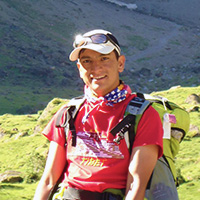
Nabin Karki
Expert - Since: 2004
- Best price guaranteed
- Hassle-Free Booking
- Highly Experienced Team
- Safe Trip Plan
Want To Design Your Own Trip ?
Response Time 0-2 Hours , Response Rate 100%
Related Trips in Eastern Region Nepal
Kanchenjunga Trek | Makalu Arun Valley Trek | Lumba Sumba Trek | Mundum Trail Trek | Kanchenjunga Phidim Trek | Ilam Tea Garden Trek | Kanchenjunga Base Camp Trek | Arun Hunku Valley Mera Trek | Walangchun Gola Trek |
© 2011 - 2024 All rights reserved. Himalayan Magic Treks P.Ltd Developed By : Xenatech Nepal

COMMENTS
The incredible Makalu base camp trek is in Sankhuwasabha, Nepal's eastern region, and is entirely inside Makalu Barun national park (Jewel of eastern Nepal). It follows the banks of the Arun and Barun rivers, lush forests, alpine meadows, deep valleys, and towering passes. The Makalu base camp trekking is located in the Makalu - Barun National Park and Conservation Area, which was ...
Difficulty: The Makalu Base Camp Trek is slightly more difficult than Everest Base Camp or the Annapurna Circuit due to the incline, remoteness, and rugged nature of the trails. You will reach an altitude of 5000m, which will challenge many. Altitude sickness can be common. The route has lots of undulation with several days purely walking up ...
The starting point of the trek is Tumlingtar, located at an altitude of 500 meters above sea level. From there, you will ascend for around ten days to reach the Makalu Base Camp, 5,000 meters above sea level. Along the way, you will pass through several picturesque villages, including Chichila, Num, and Tashigaon.
The cost breakdown for the Makalu Base Camp Trek is as follows: For solo trekkers, the cost is US$ 3250 per person. If you are traveling in a group of 2 to 4 people, the cost is US$ 3150 per person. For larger groups of 5 to 8 people, the cost is US$ 3050 per person. And for even larger groups of 9 to 15 people, the cost is US$ 2950 per person.
The section from Langmale Kharka to Makalu Base Camp is the final and most anticipated part of the Makalu Base Camp Trek, taking you from Langmale Kharka (4,410 meters/14,468 feet) to Makalu Base Camp (4,870 meters/15,978 feet). This part of the trek usually takes one day and covers approximately 6-8 kilometers (3.7-5 miles).
The Makalu Base Camp trek is a remote route that encompasses some of the best that Nepal has to offer — quiet trails, vibrant terraced farmland, rural cultures, rhododendron forests, rare wildlife and several 8,000 meter-plus peaks. For experienced trekkers who relish a challenge, this is a great trek with ample rewards. Virginia, United States.
By Mark Whitman. Updated: May 12, 2023. The Makalu Base Camp trek takes you to the world's fifth-highest mountain, 14 miles east of Everest and 50 miles west of Kangchenjunga, which is the third highest in the world. Seven valleys radiate from Makalu, giving trekkers spectacular sights and opportunities for exploration.
Duration: The trek to Makalu Base Camp usually takes around 18 to 22 days, including acclimatization days. The duration can vary based on your itinerary, trekking pace, and the number of rest days. Starting Point: The trek often starts with a scenic flight from Kathmandu to Tumlingtar in the eastern part of Nepal.
Last Updated on January 3, 2023 by Alpha Adventure Treks. An adventure off the beaten road is the Makalu Base Camp Trek (8,481m) in Nepal's Himalayas. Compared to more popular trekking routes in Nepal, it is further, more rugged, and more physically demanding. Most hikers spend at least 8 days on the Makalu Basecamp route to reach the summit ...
Makalu Base Camp Trek is an overwhelming adventure trek in Nepal for national and international trekkers. This trek is the popular Base Camp Trek located southeast of Mt Everest and the Khumbu region. Makalu Trek also falls inside Makalu-Barun National Park and Conservation Area at an altitude above 8,000 m on the lap of the world's Highest ...
Difficulty Level Moderate ; Max Altitude 5250m; Group Size 1 - 20 Person; Start City Kathmandu City; End City Kathmandu City; ... Our Makalu Base Camp Trek is a rugged up-and-back trip to the base of Makalu (8,485 meters/27,838 feet) - 'the throne of the gods.' Pass through the wild backcountry of one of Nepal's most remote and ...
The trek to Makalu Base Camp is a difficult trek. If you've done another hike of over 4,000 meters and are in good physical shape, you can successfully complete this hike. You have to walk an average of 6-7 hours a day. The hike consists of crossing many rivers, cantilevered wooden bridge, suspension bridge, dense forest, stone steps, sudden ...
Overview. Makalu (8,465m) is the fifth-highest mountain in the world located close to the Everest region in the central part of Nepal. The Makalu base camp trek is an adventurous trek that offers a large diversity of the ecosystem, mountain vistas, pristine nature as well as unspoiled ethnic culture. Makalu base camp trek is the off-the-beaten ...
Makalu Base Camp Trek is a demanding trekking expedition requiring trekkers to walk around 6-8 hours on average on difficult terrains and have very good physical fitness with a regular exercising routine. Spring (March to May) and autumn (September to November) are the preferred seasons for this trip.
Difficulty. Moderate. Starts from. Kathmandu. Trips Ends at. Kathmandu. Overview Itinerary Includes FAQ. Makalu Base Camp & Barun Valley Trek Overview. Mt. Makalu is the world's fifth highest peak and certainly a proud neighbor of Mt. Everest. The Makalu Barun National Park, established in 1992, is an absolute virgin land spread out over 1500 ...
How Difficult is the Makalu Base Camp Trek: The Makalu Base Camp Trek in Nepal presents a challenging yet immensely rewarding journey for trekkers. Understanding the difficulty and fitness requirements is crucial for a successful expedition. Trek Difficulty: Terrain: The trail involves diverse landscapes, from lush forests to high-altitude ...
The Makalu Base Camp Trek starts with a flight from Kathmandu to Tumlingtar. Those on the left side of the plane will have a birds-eye view of the eastern Himalaya. From Tumlingtar it is a 4 hour drive to Num, the start of the trek. The trail from Num heads up the Arun valley crossing the Shipton La (4,210 m) and into the upper Barun valley.
It is a solitary trekker's popular trekking destination. This trek takes you to the Makalu base camp (5250m). This trek starts with the one-hour-long flight from Kathmandu to Tumlingtar. This trek is designed as Makalu Barun National Park and Conservation Area which comprises 2330 sq. km of a national park and 830 sq. km of the conservation ...
The Makalu base camp trek is a difficult journey that requires excellent physical fitness and health. As a result, you should trek only if you are in good health and can endure the trip's weather, circumstances, and intensity. If you go when you are sick, it will be extremely tough for you; furthermore, because the region is remote, you may ...
See our guide to trekking Nepal's Three Passes Trek and Everest Basecamp, with info on the ... finding a room in Namche is difficult. As we gazed from our window of the Hill-Ten toward dozens of teahouses with names that tended to include words such as Buddha, Everest, Sherpa, or Summit, it was hard to imagine the streets filled with foreigners ...
Day 10 Hiking to Gokyo Ri and back to Gokyo, 5 hrs return trip: Day 11 Trek from Gokyo valley to Renjo la pass (5,350m) then Lundhen (4,380m), 6 to 7 hrs trek: Day 12 Trek from Lundhen to Namche Bazaar (3,445m), 6 to 7 hrs trek: Day 13 Trek from Namche Bazaar to Lukla (2,860), 6 to 7 hrs trek: Day 14 Flight from Lukla to Kathmandu, 35 minutes:
In the Bezengi camp area, in a radius of 1-3 day walk, there are numerous simple and medium difficulty peaks and mountain passes, which can be climbed as useful training and acclimatization objects. Day 3: Begin Dykh-Tau climb - Russian Camp (3550m/11,647ft). In the morning, we sort and organize our gear and supplies.
Everest Gokyo Kala Pattar Trek : 18 Days. Day 02: Flight from Kathmandu to Lukla 2,840 m 35 minutes. Trek to Phakding 2,610 m 4 hours Overnight at Lodge. Day 11: Trek to Gorakshep 5,140 m 3 hours we have lunch then visit to Everest Base Camp 5,357m Back to Gorakshep. Overnight at Lodge.
Milke Danda Trek : 10 Days. Day 01: Arrival at Kathmandu 1,310 m. welcome program by Himalayan Magic Treks and direct transfer to hotel with Breakfast. Day 02: Drive to Basantpur (2,200 m) via Dharan over night Lodge. Day 03: Drive to Gupha Bazzar (2,930 m).overt night Guest House. Day 04: Trek to Milke Danda over night Tent Camp.